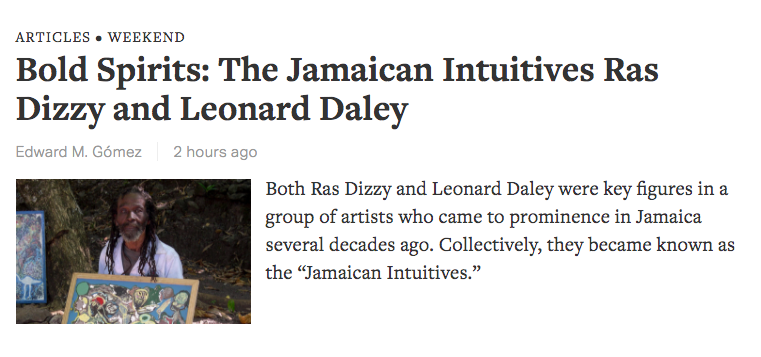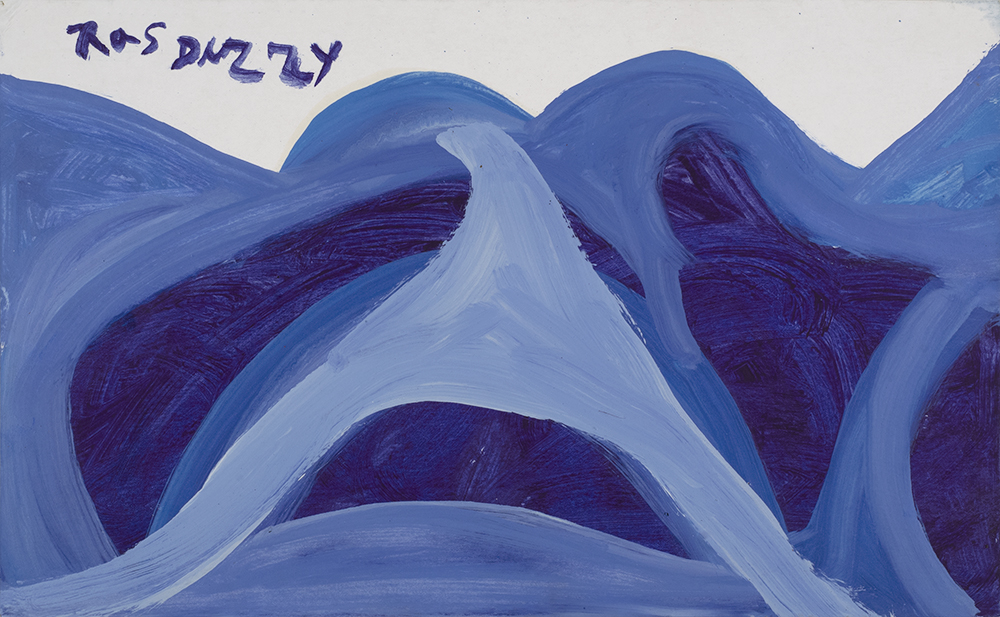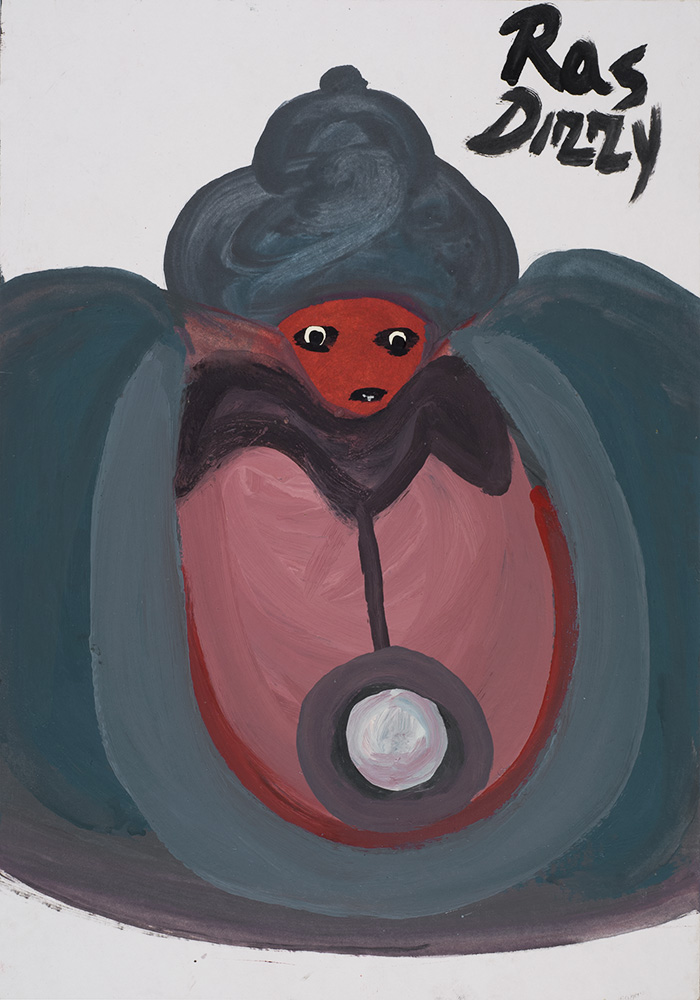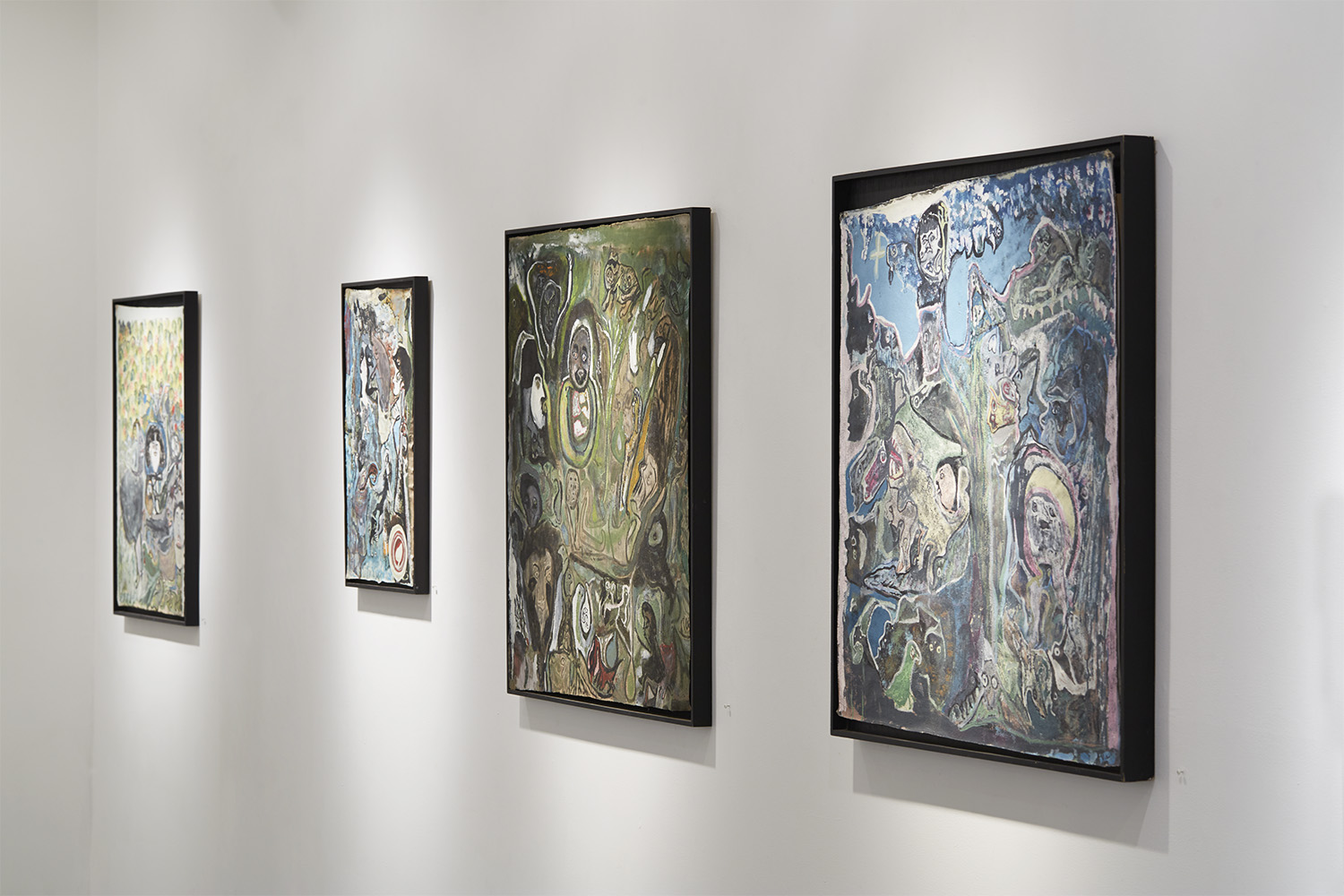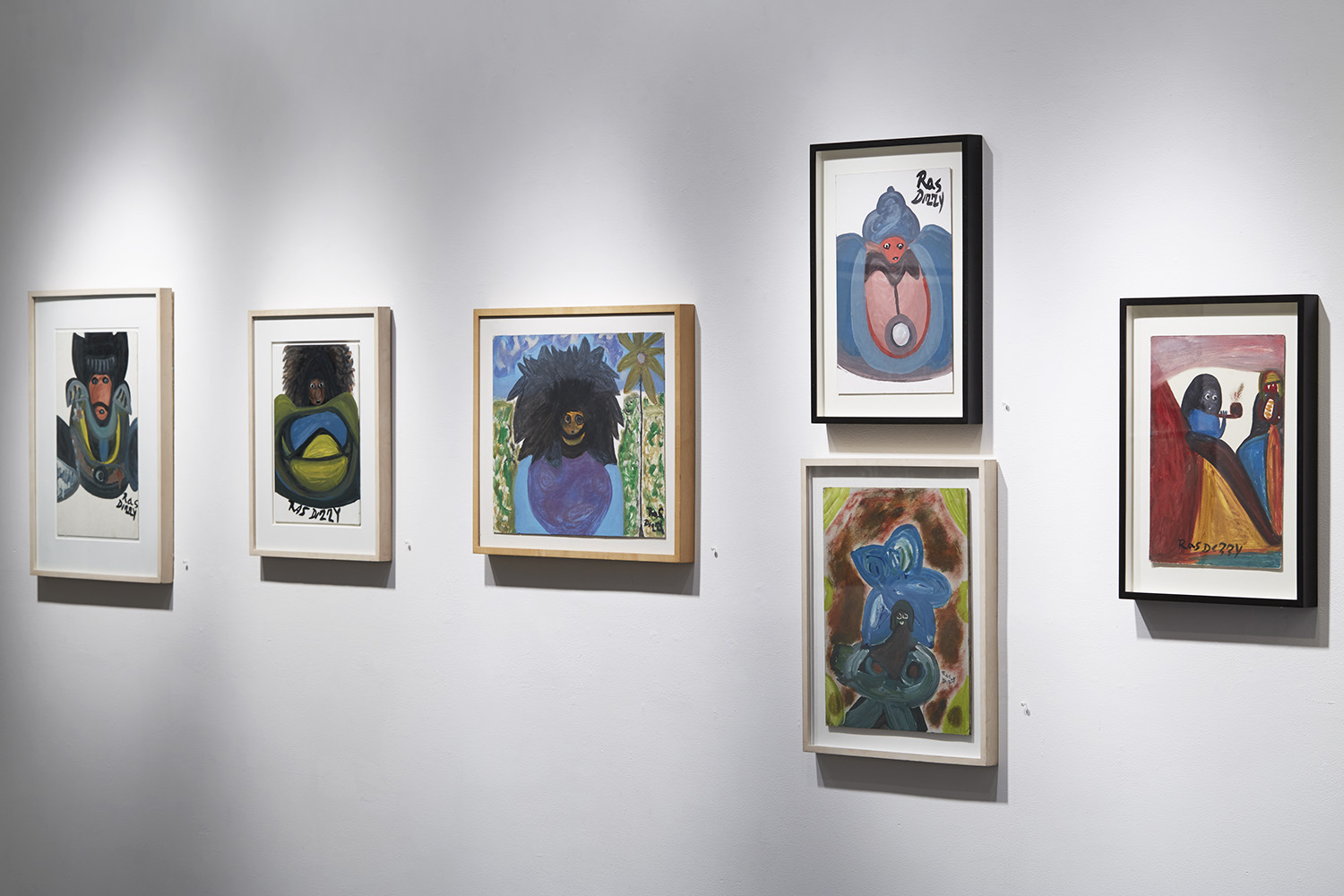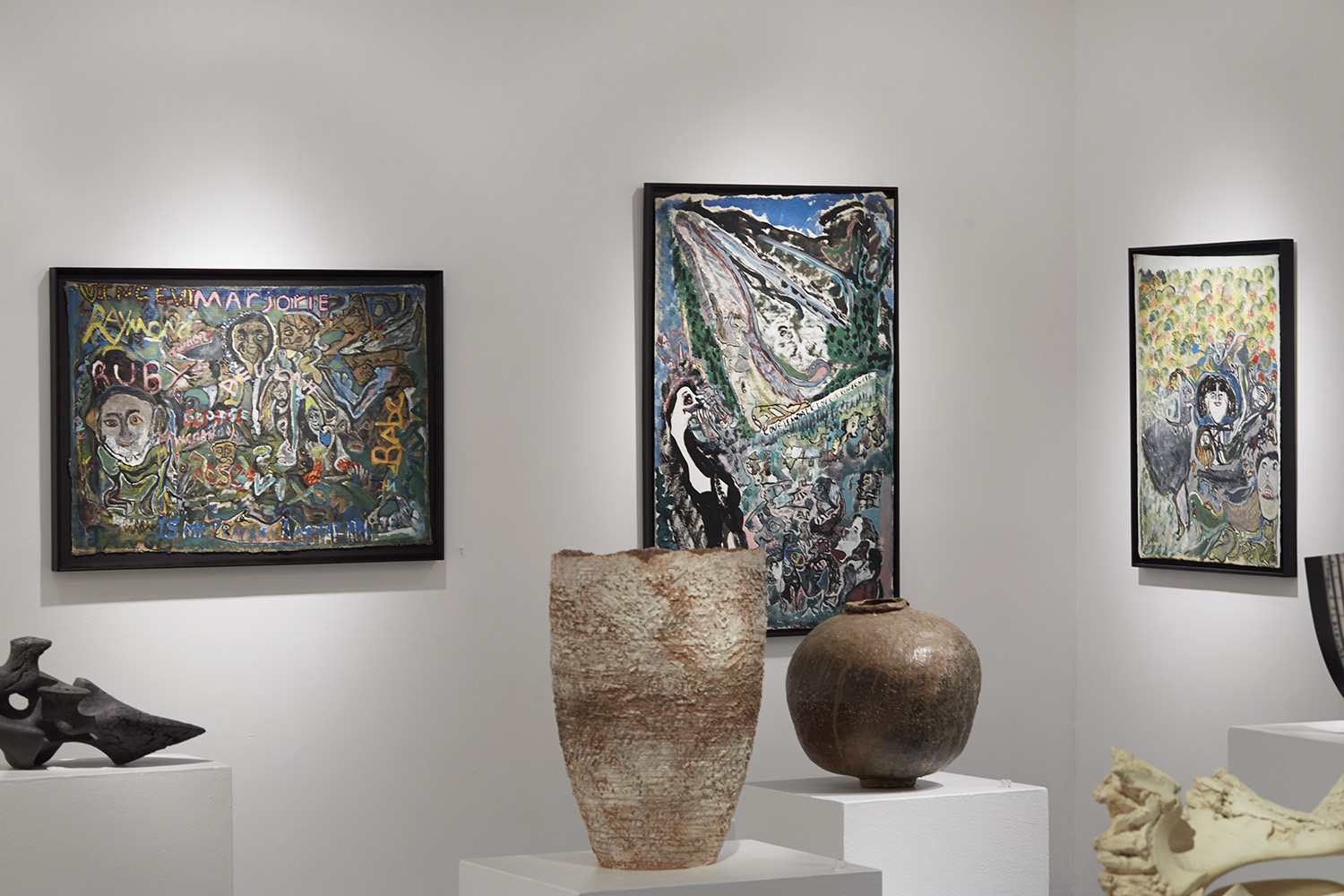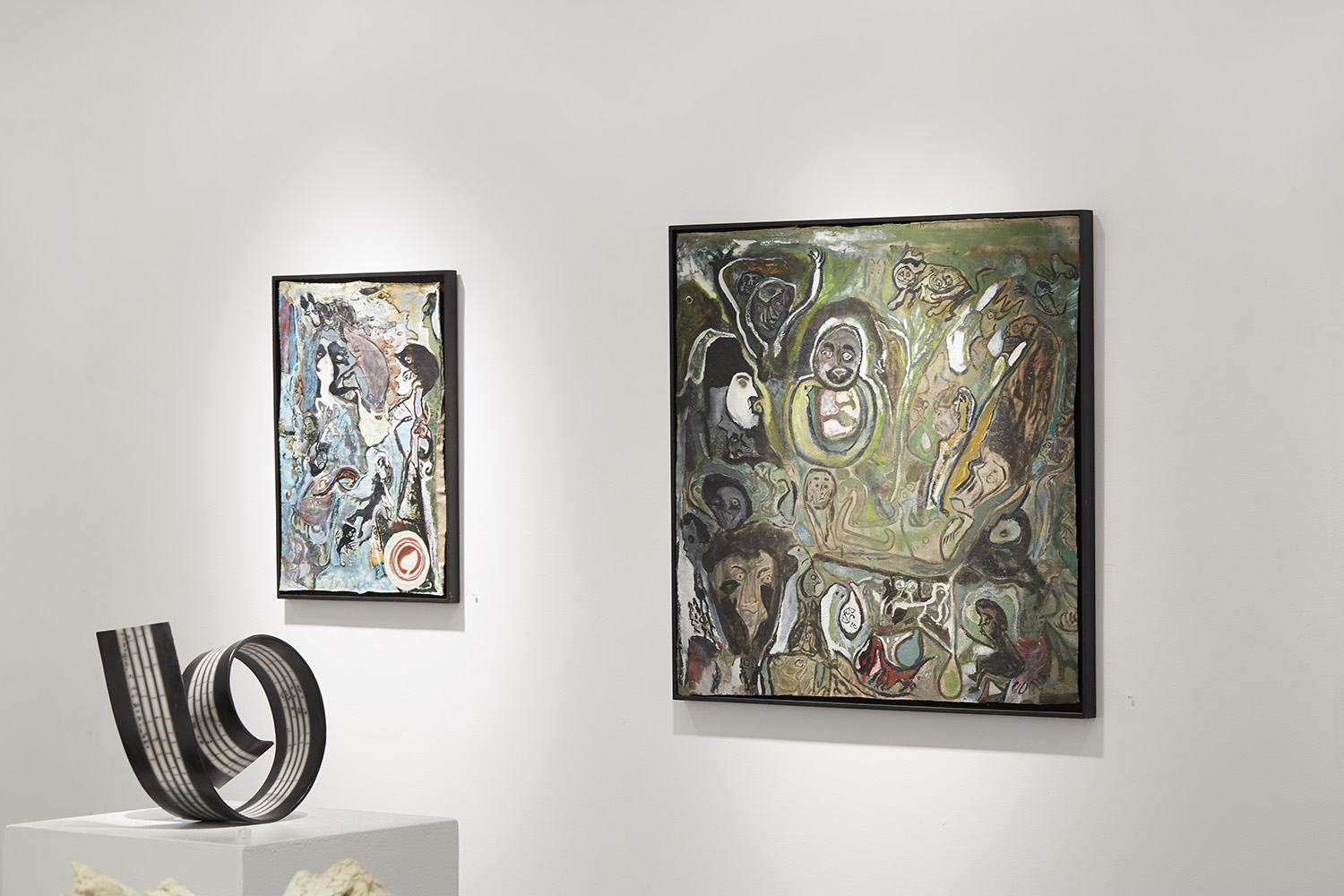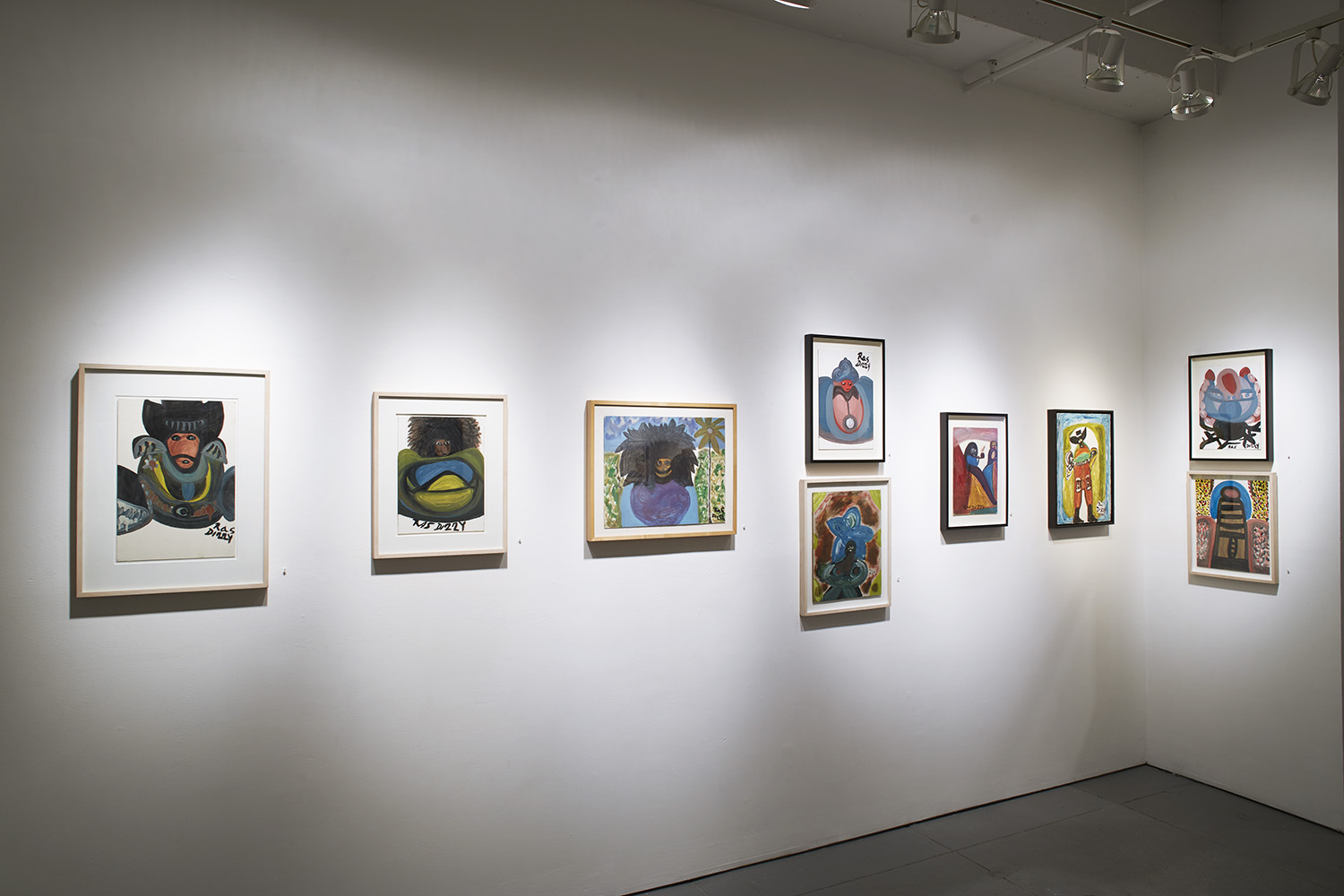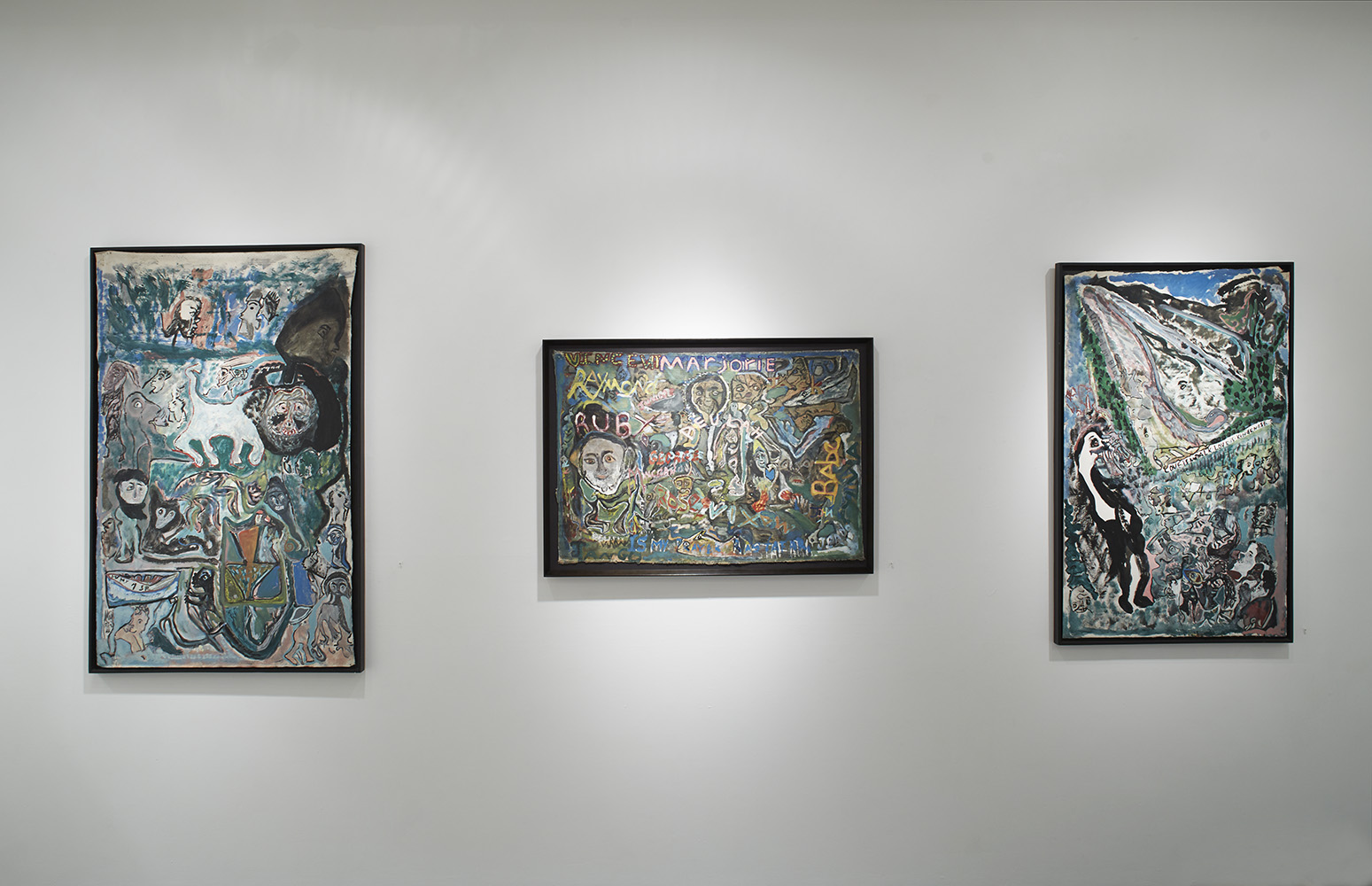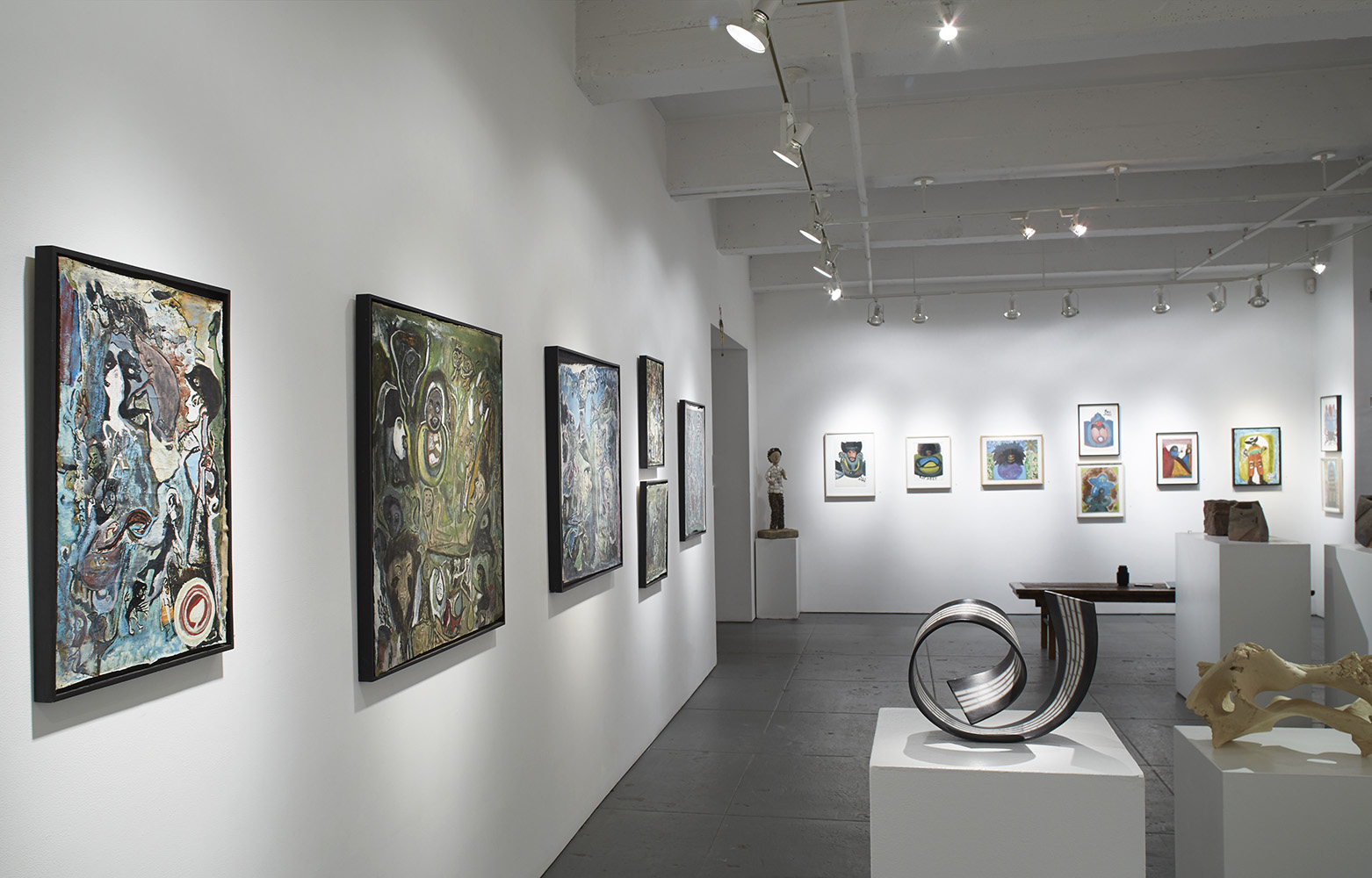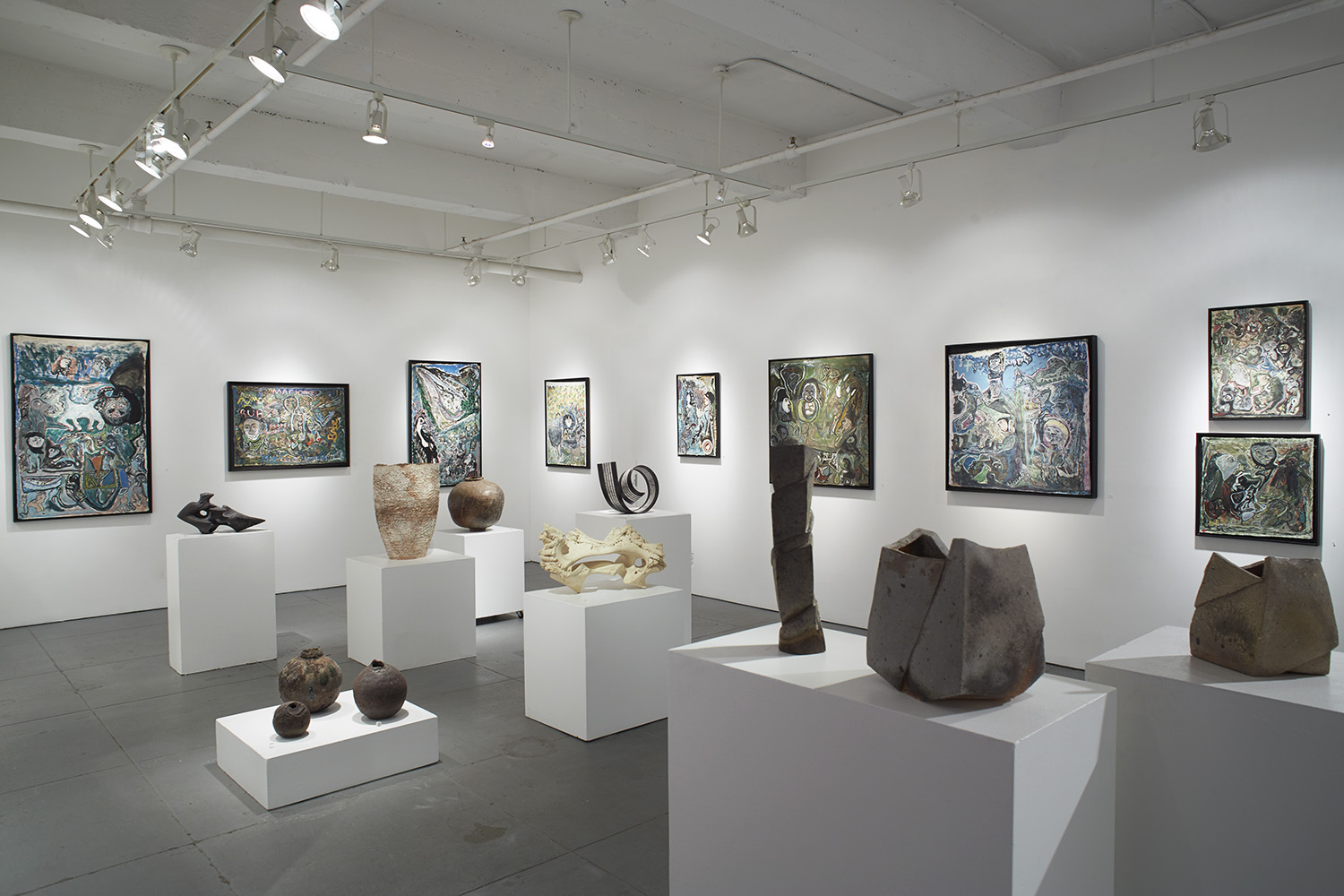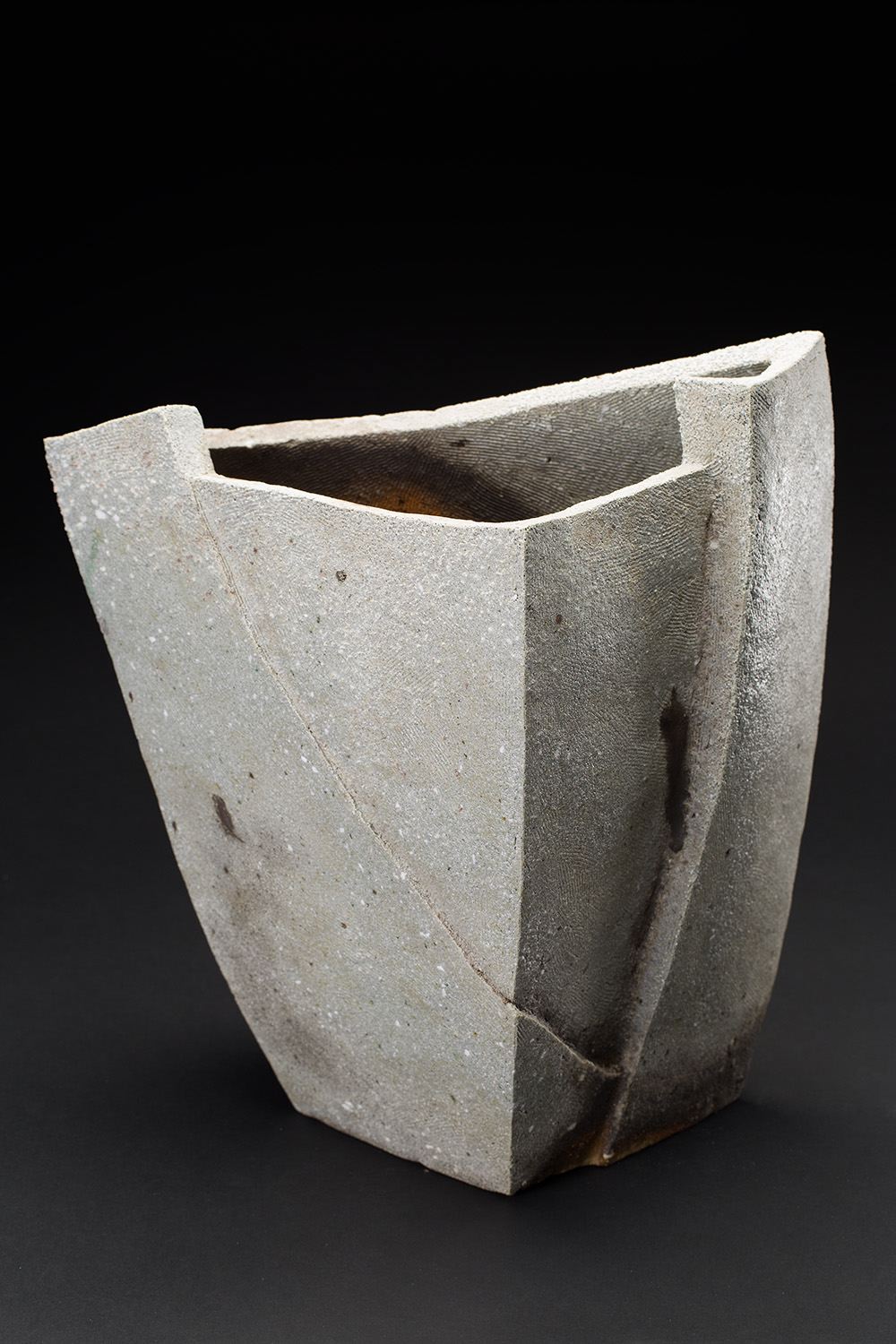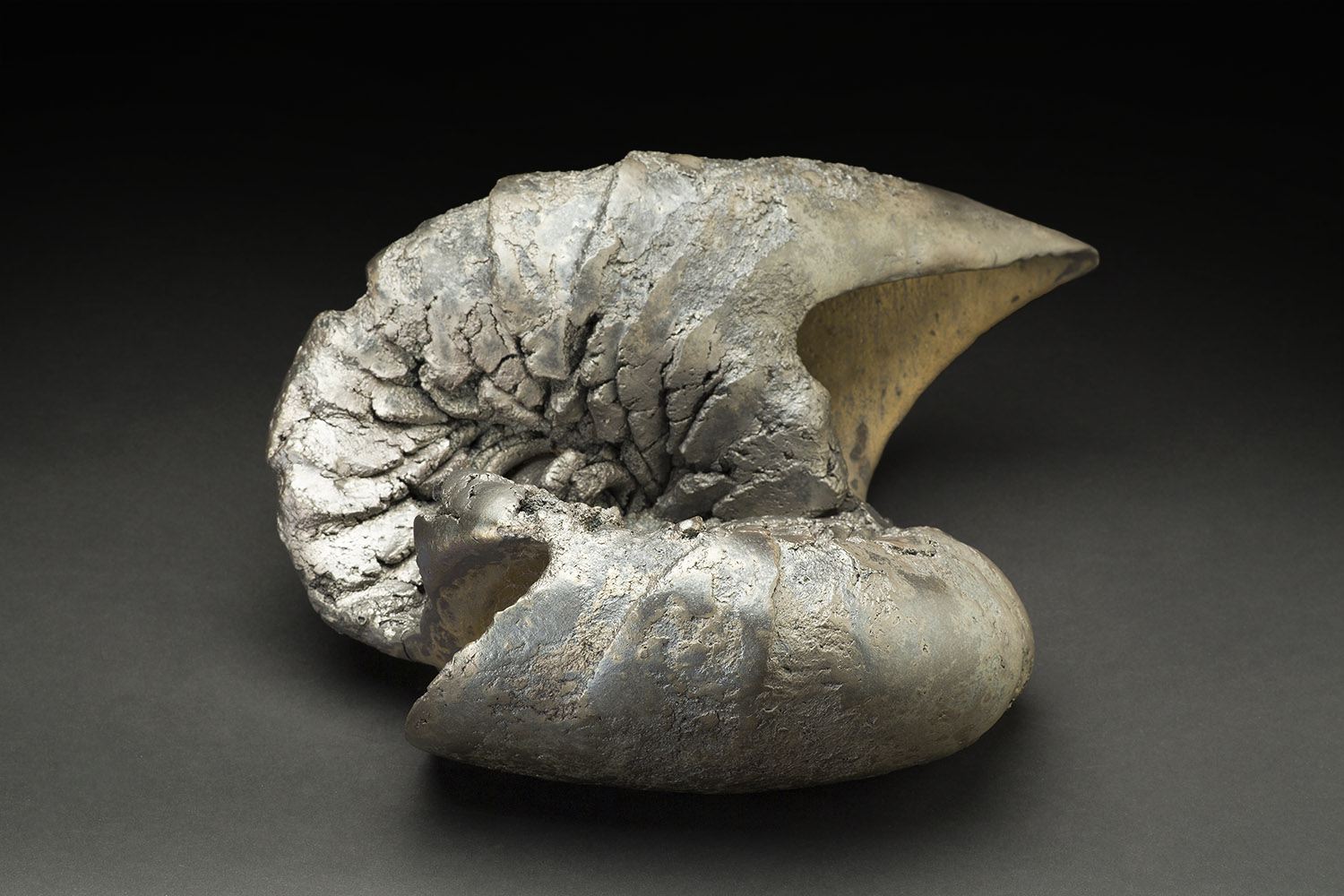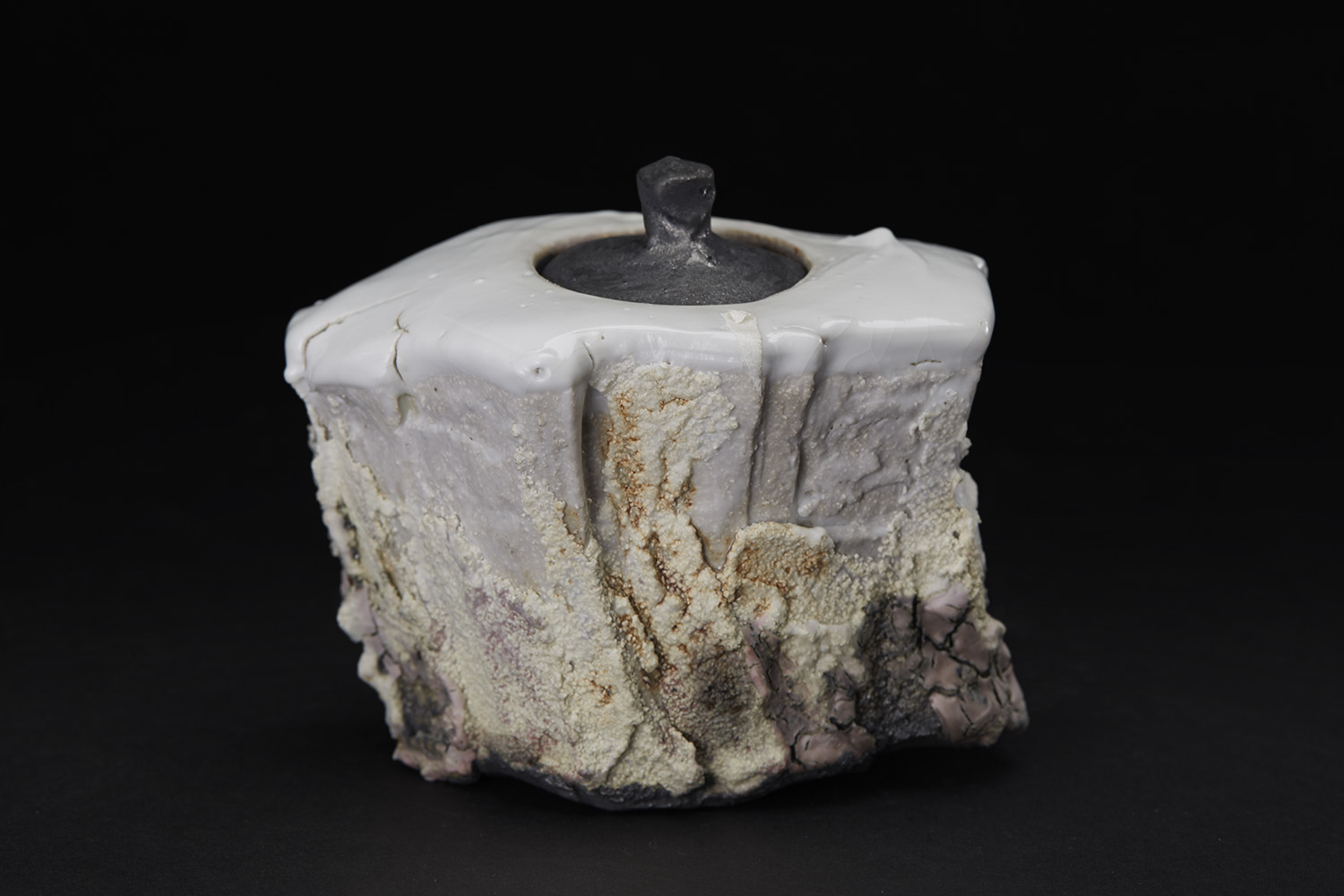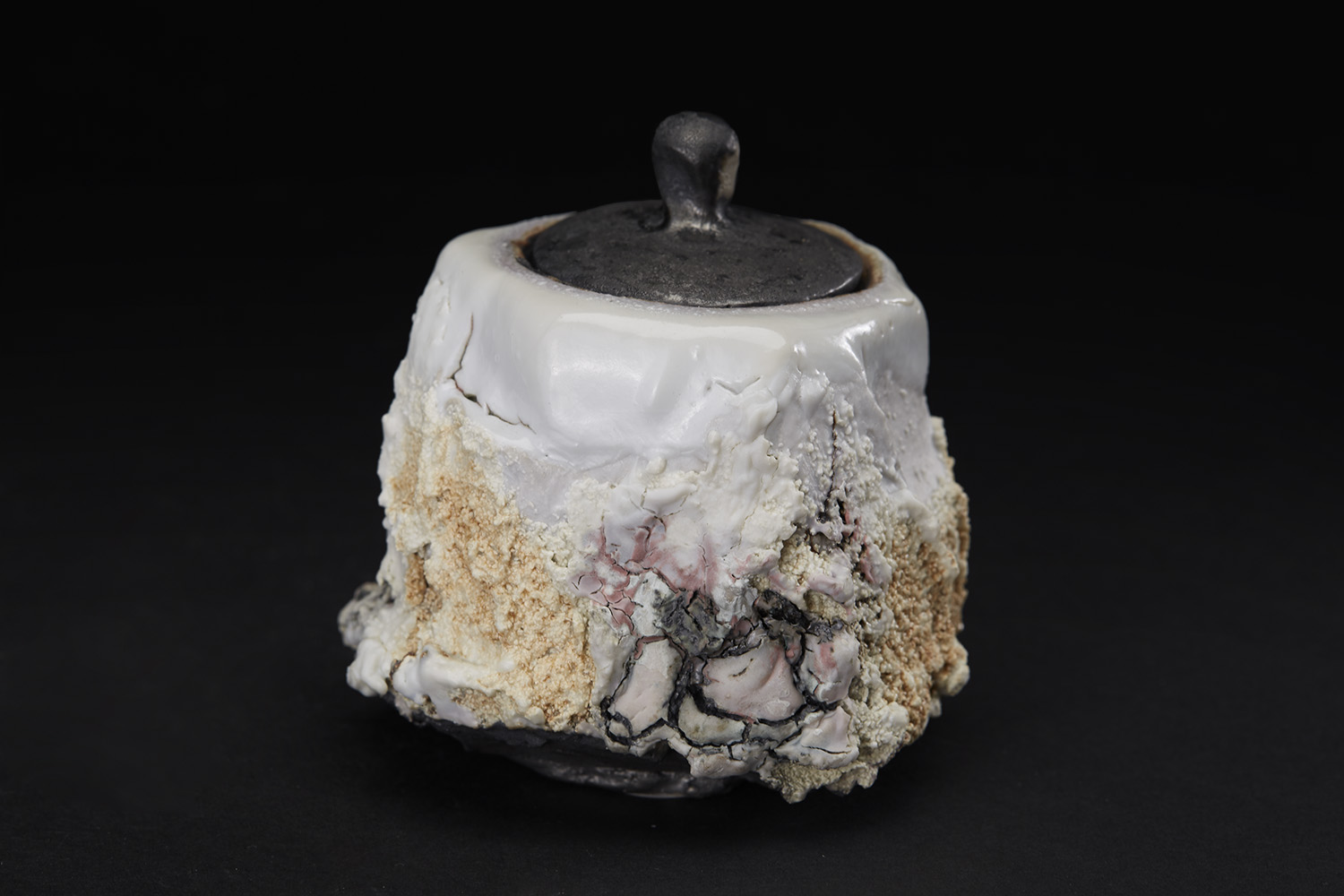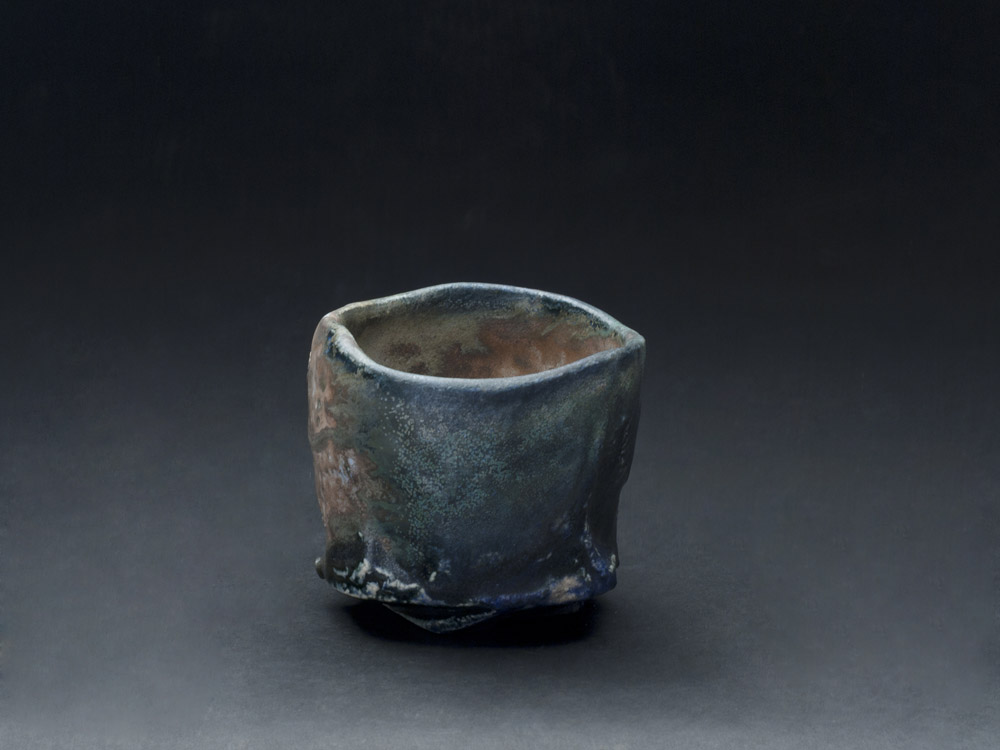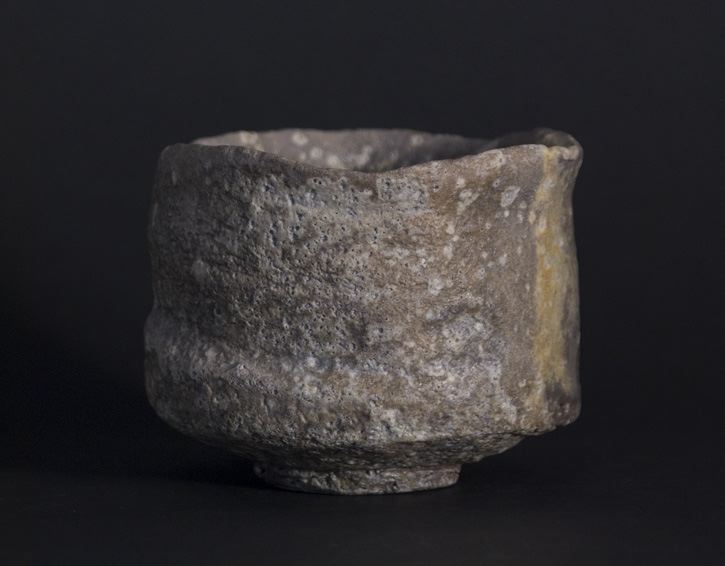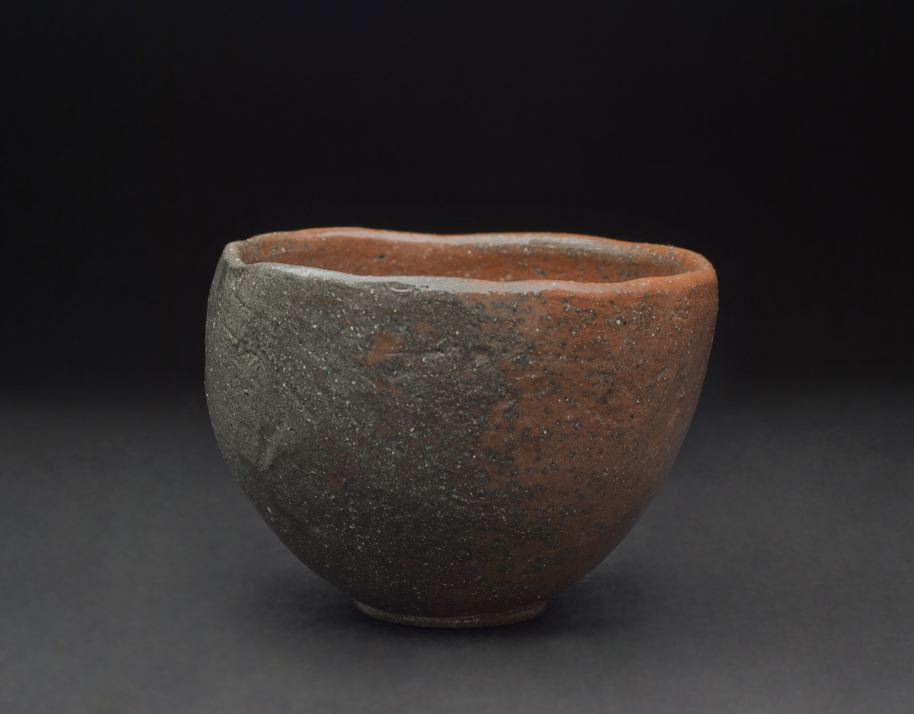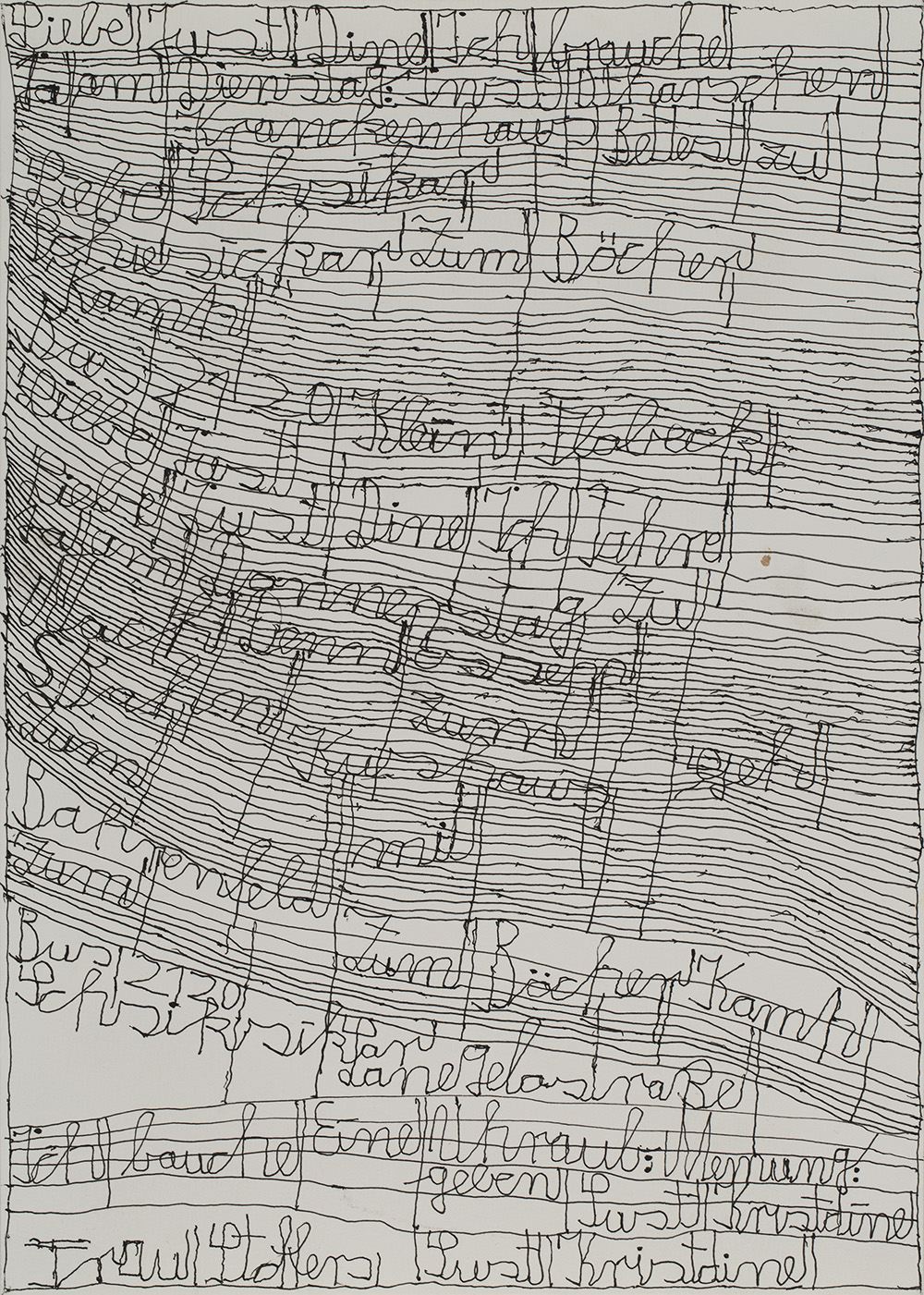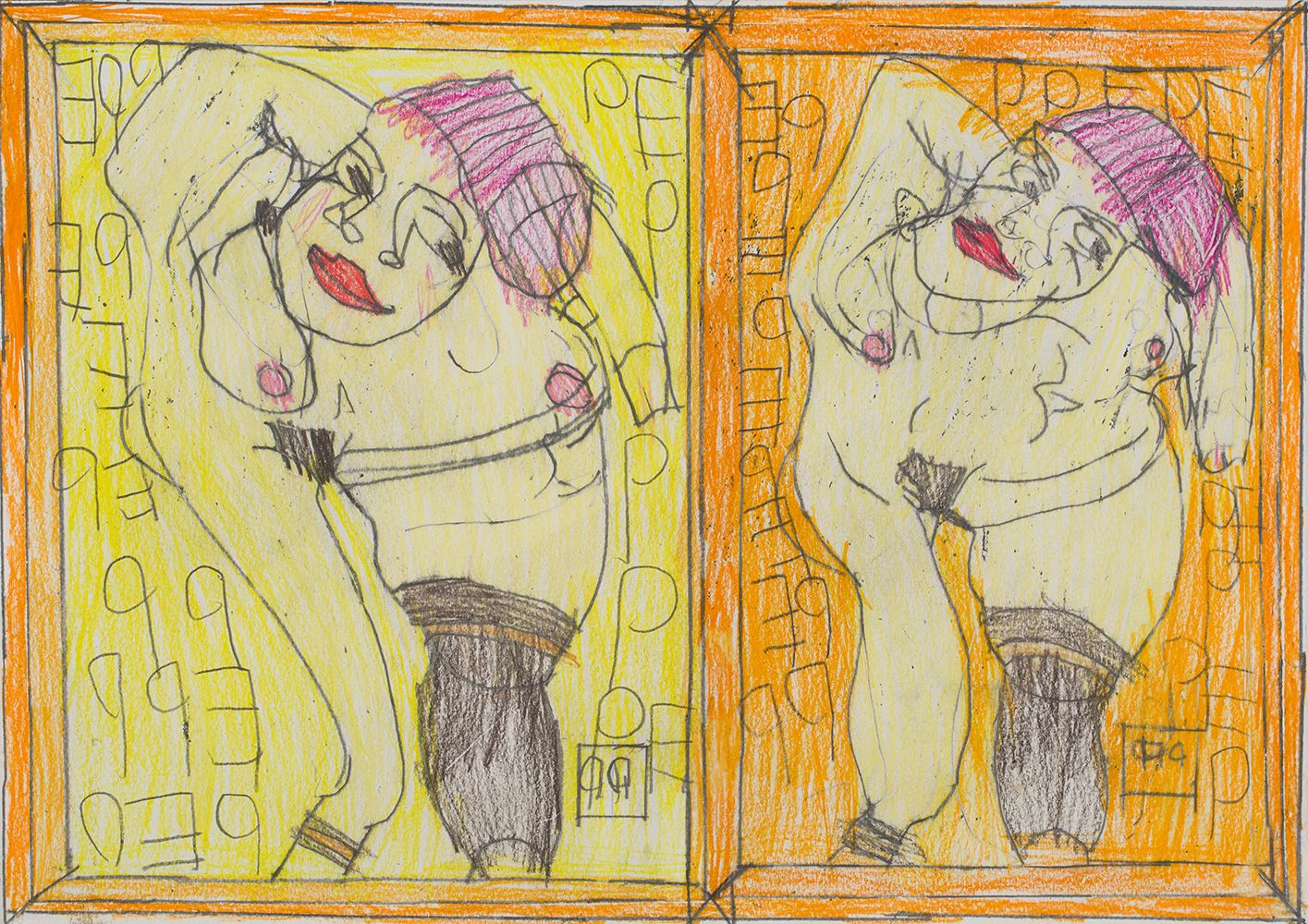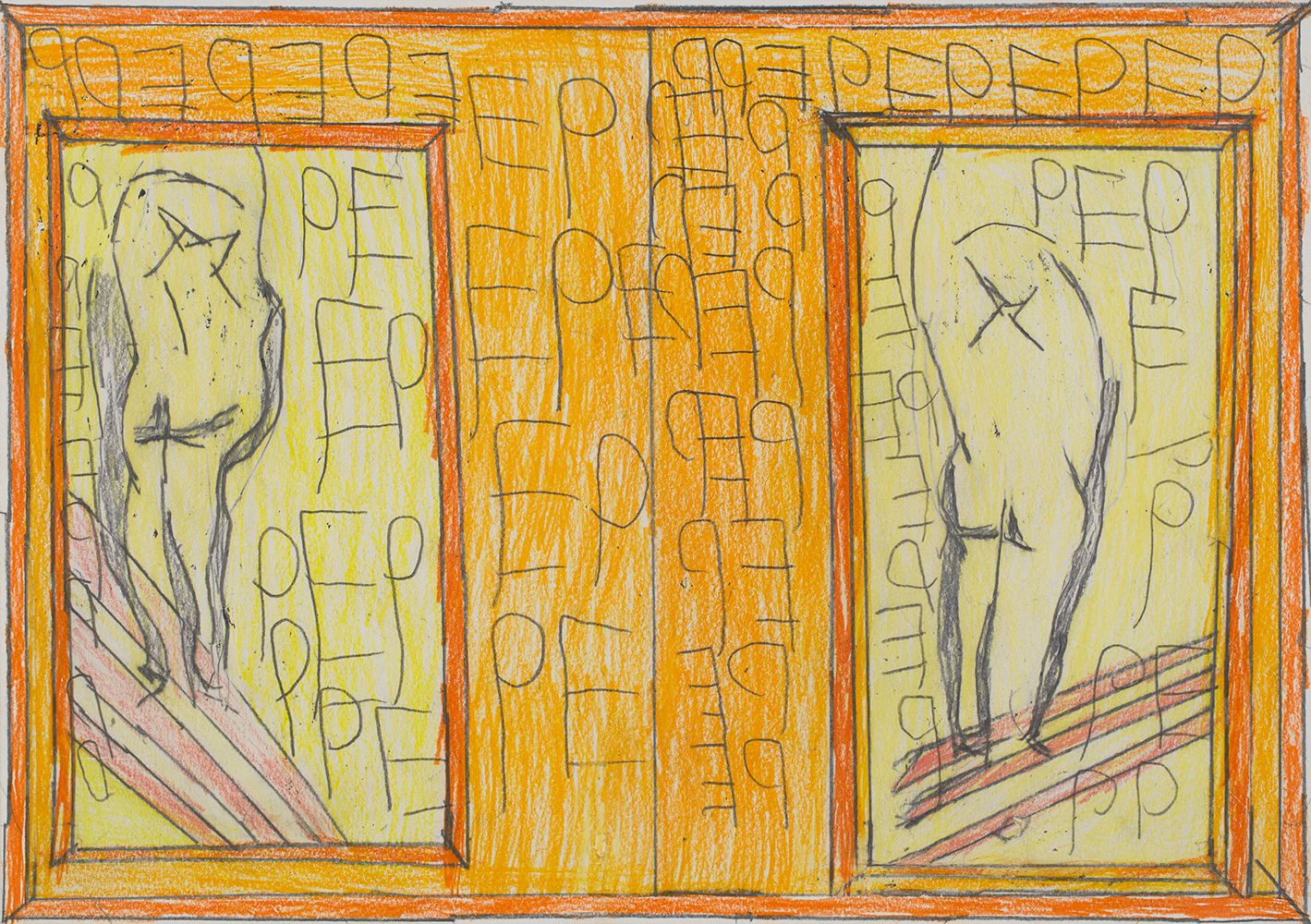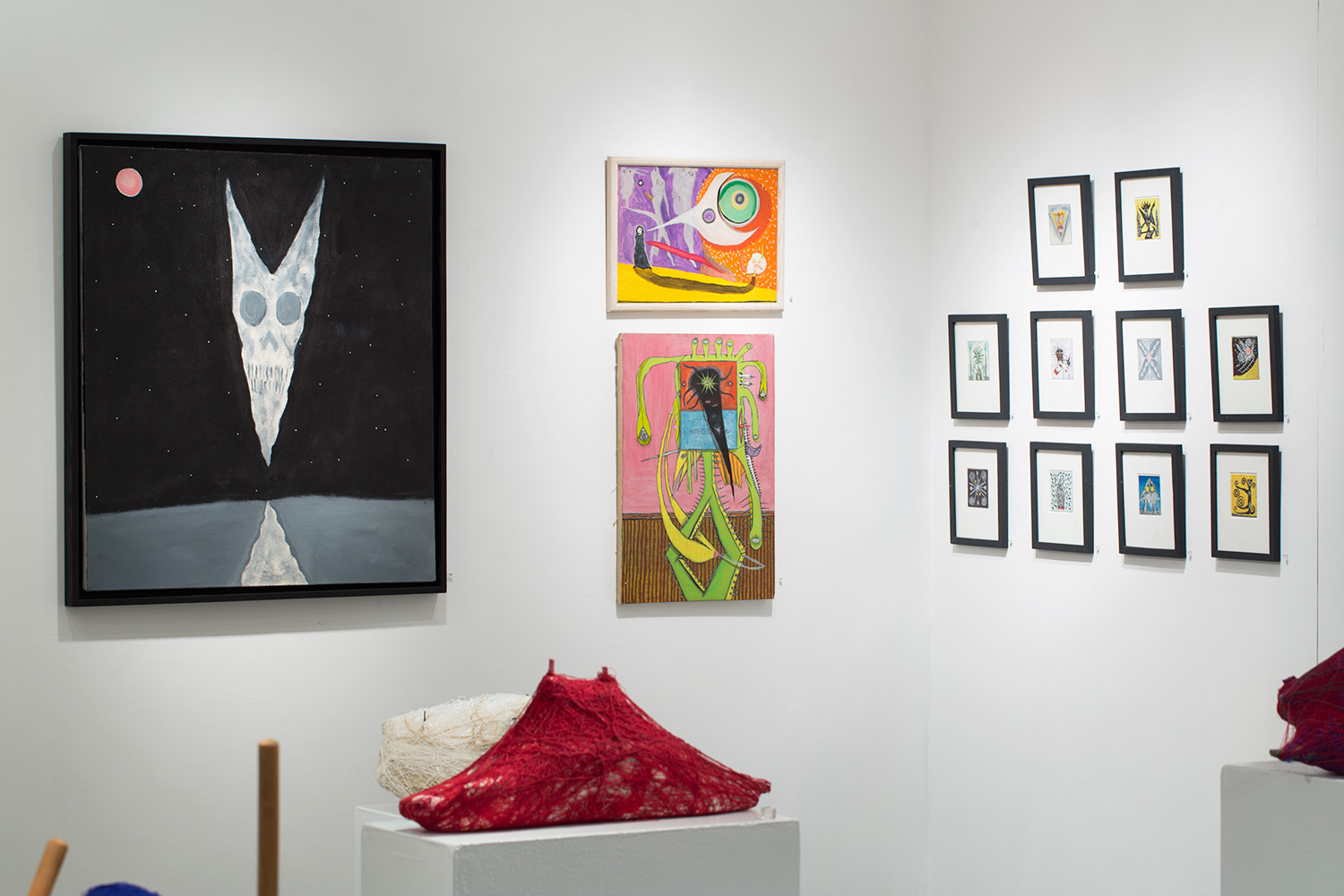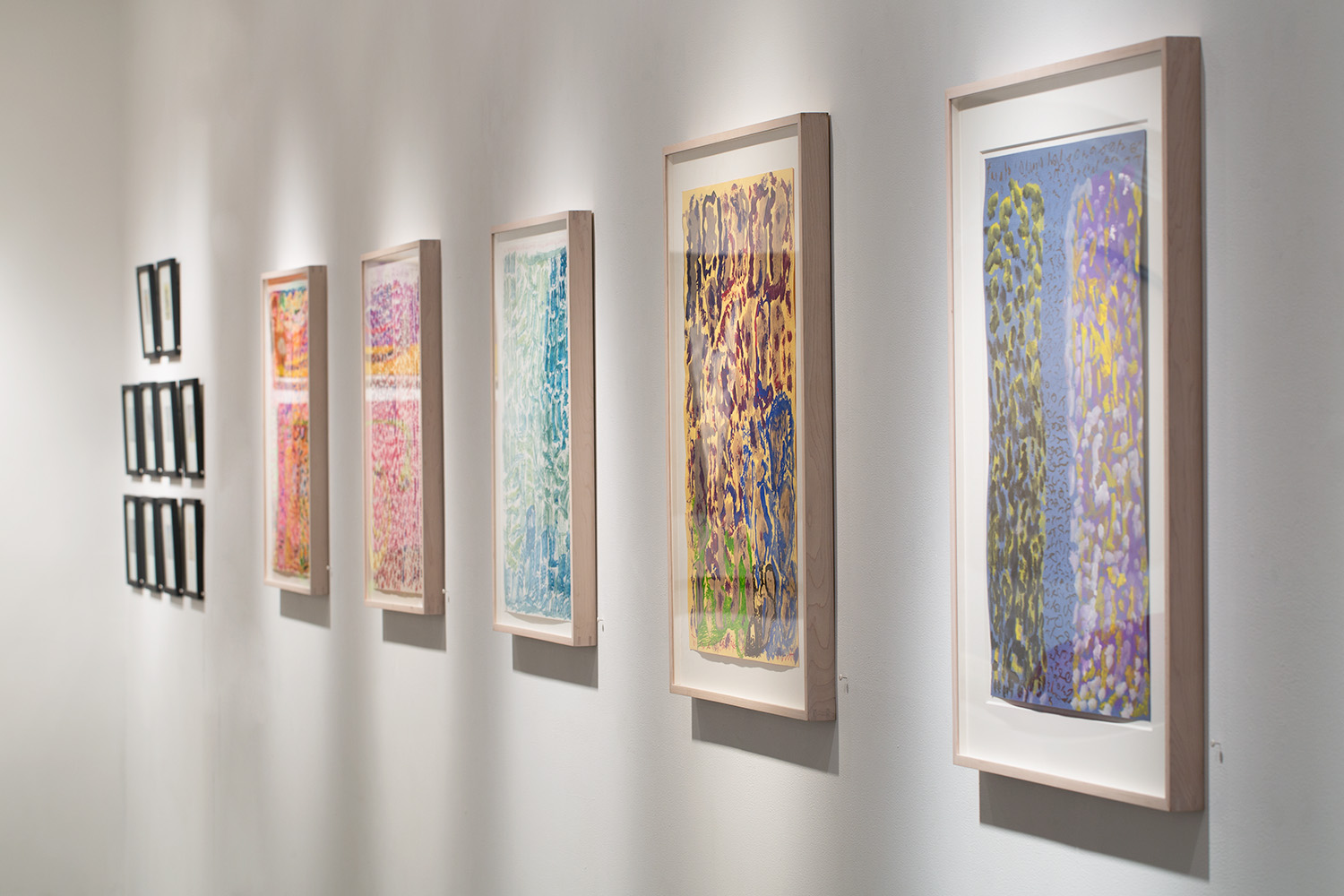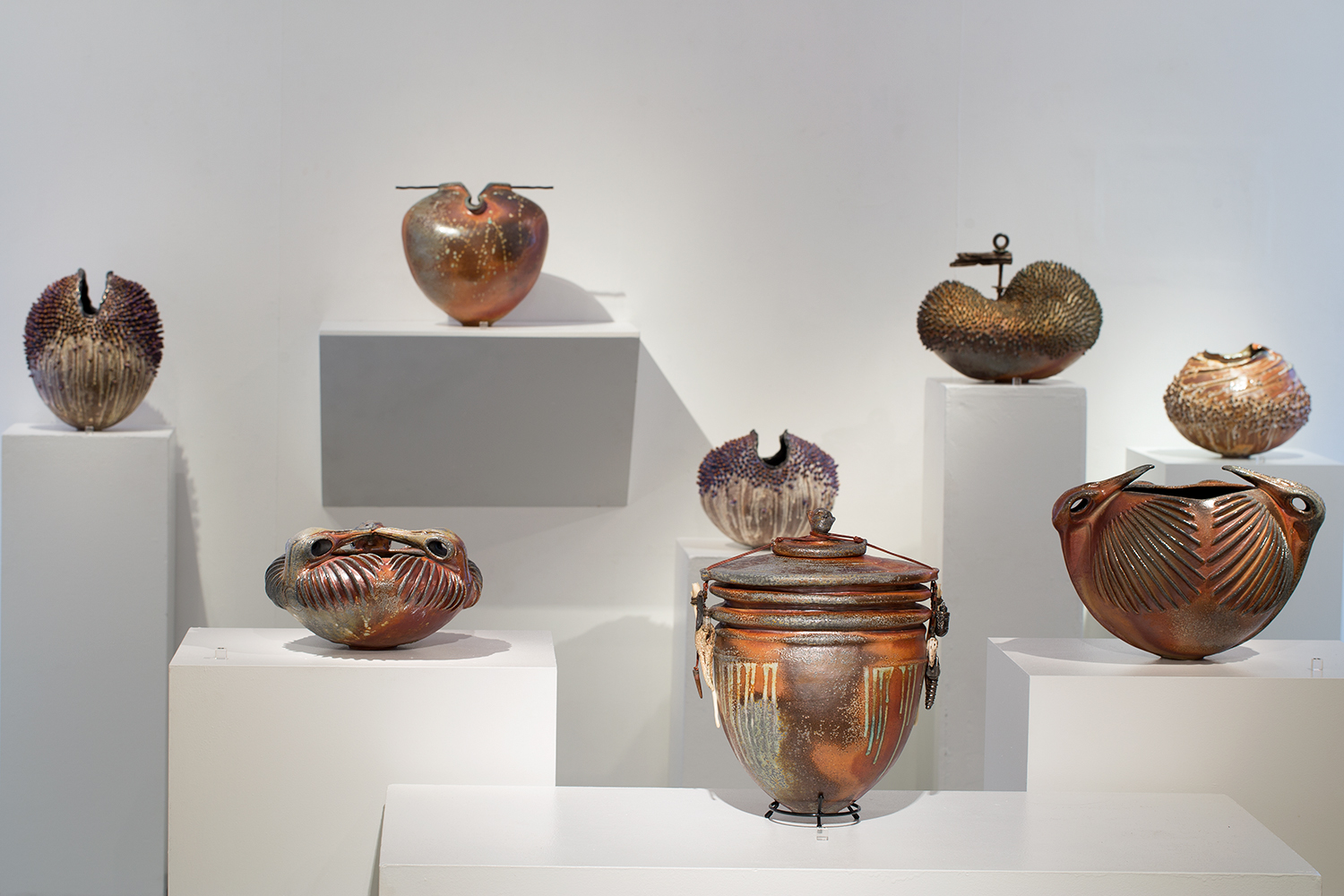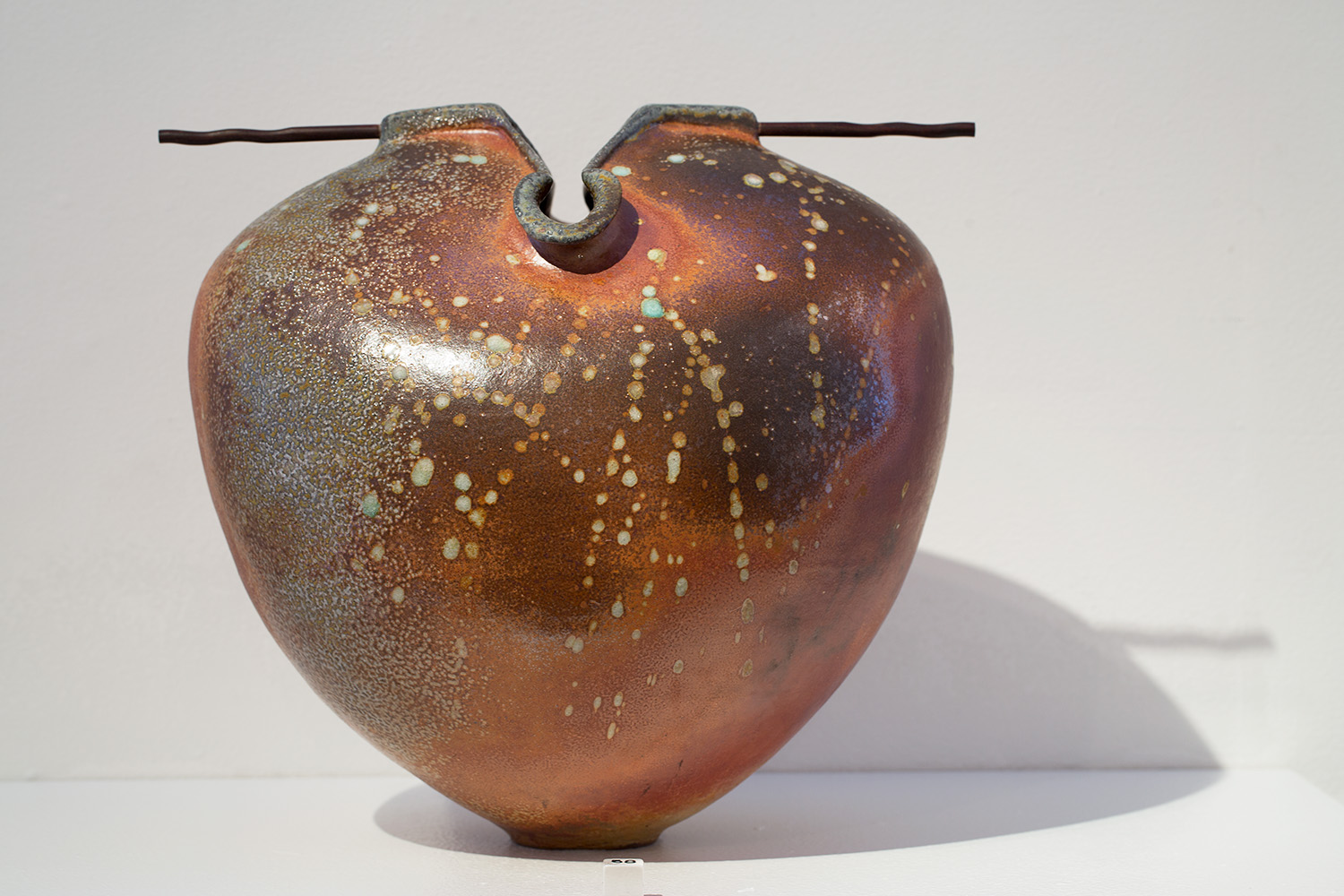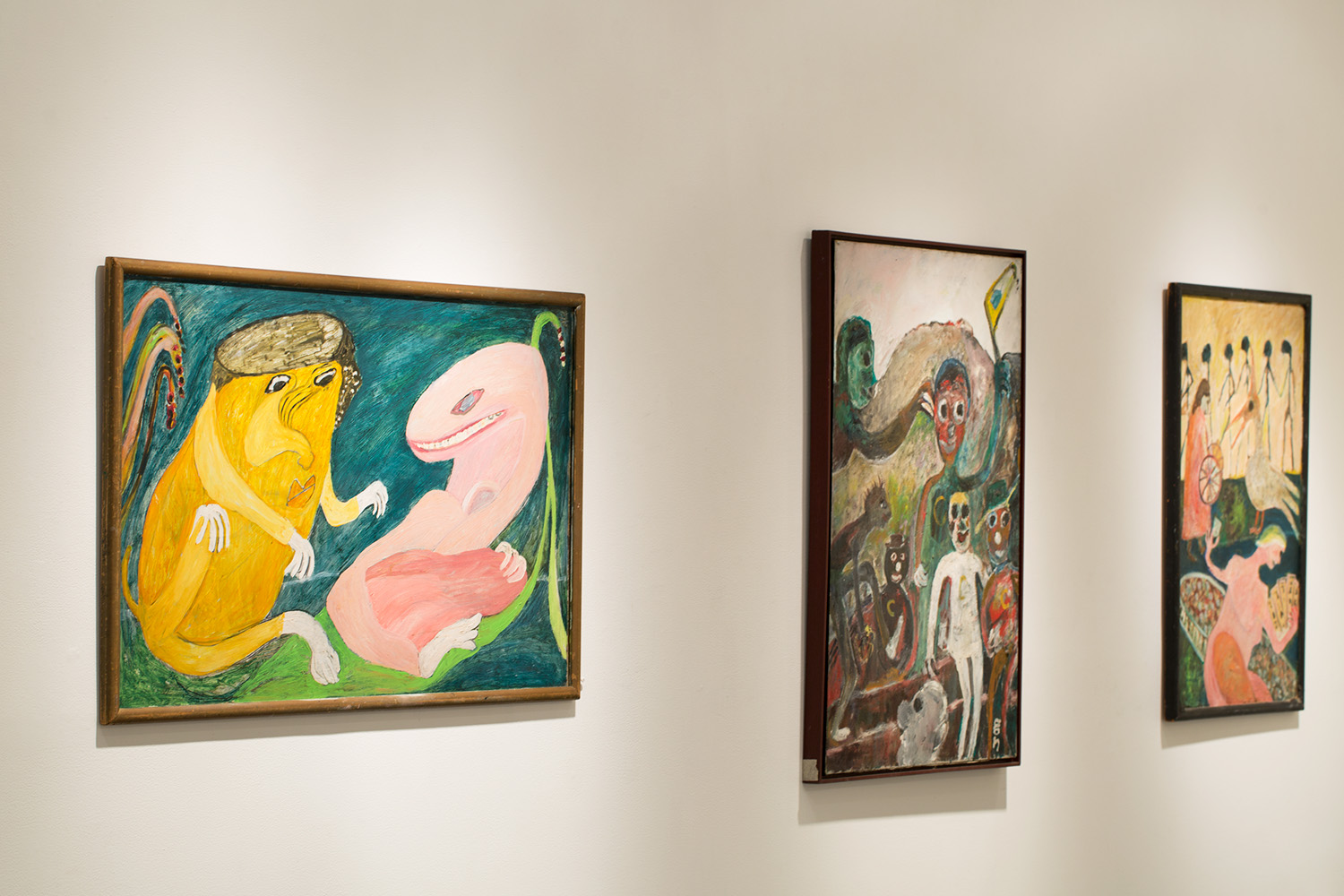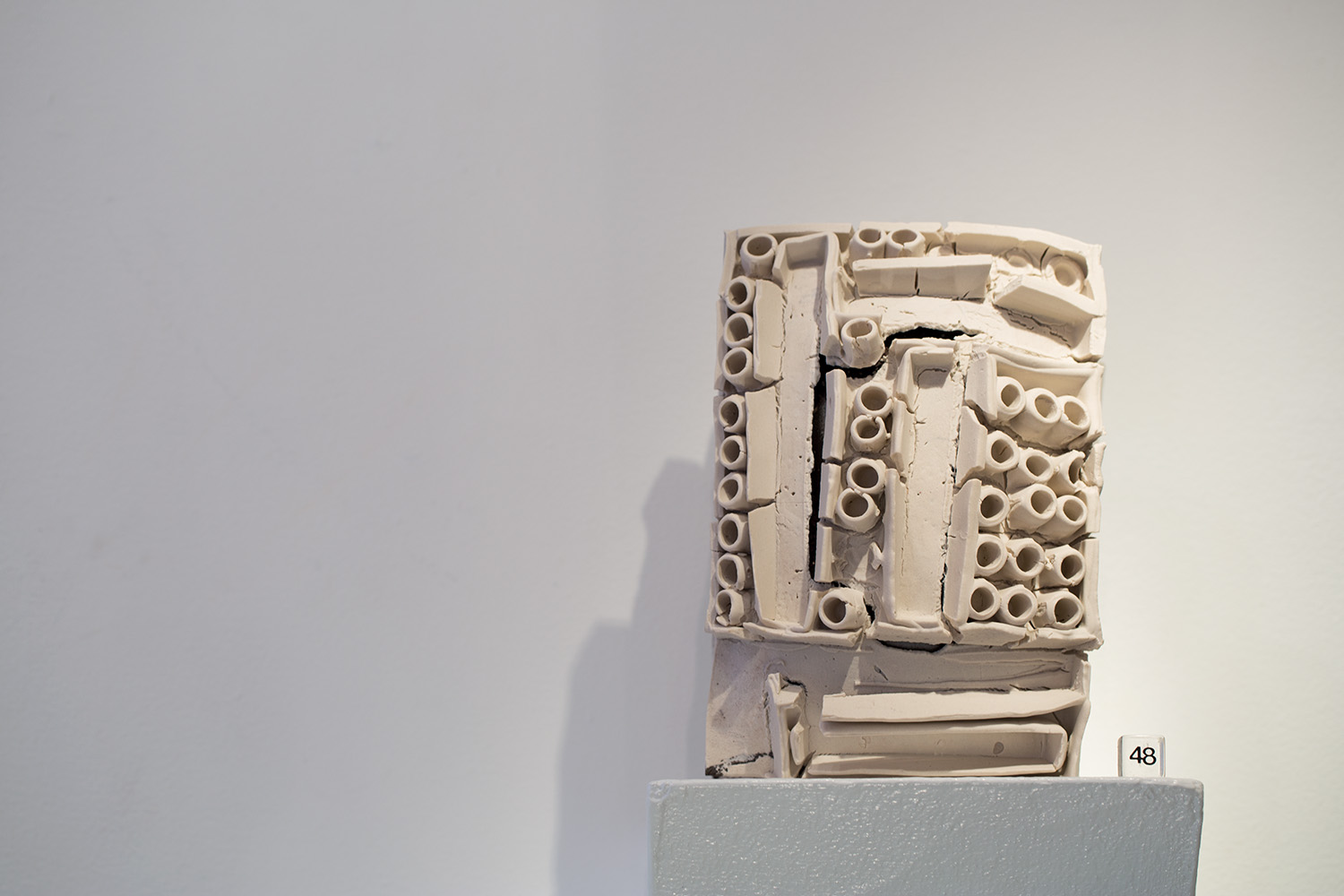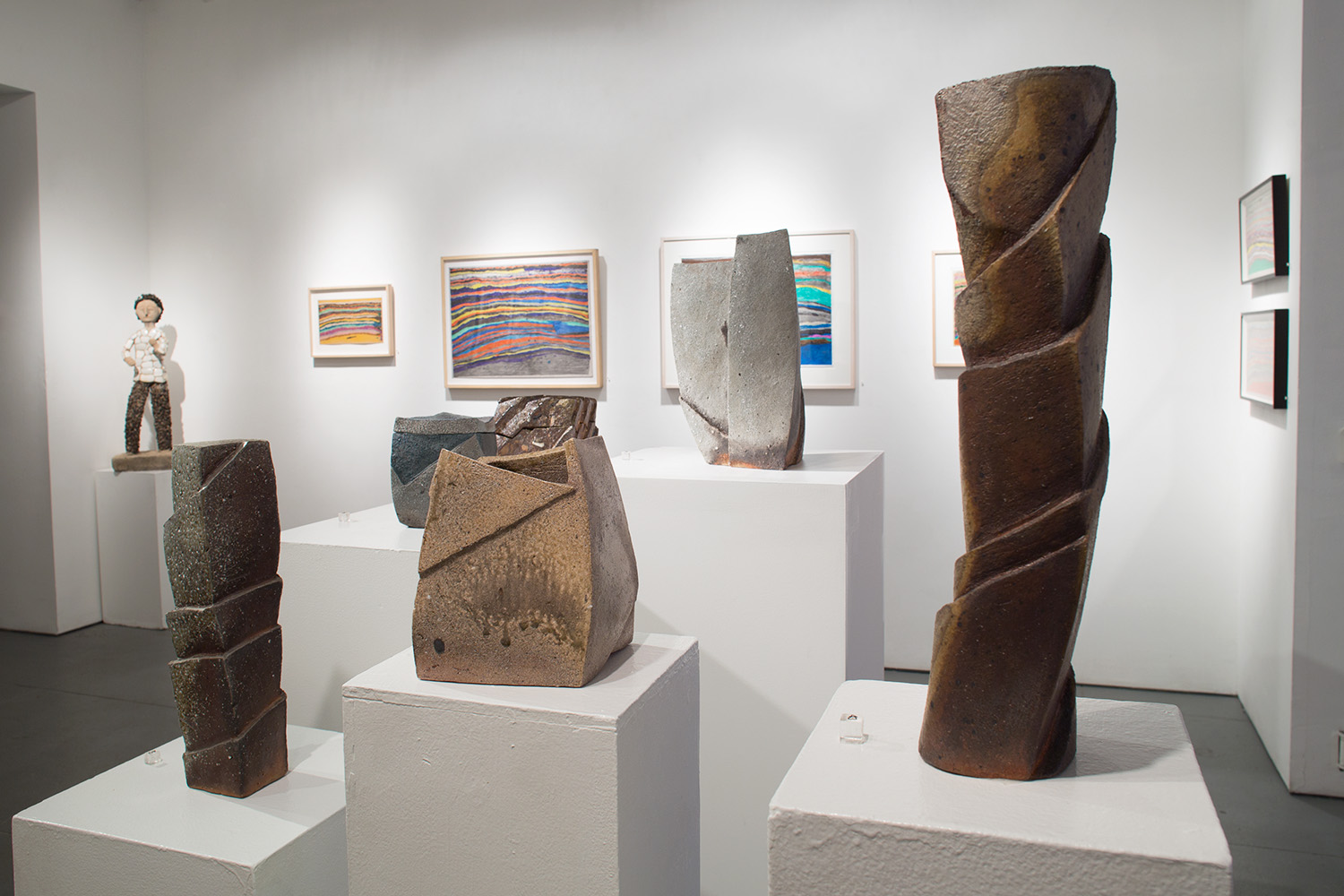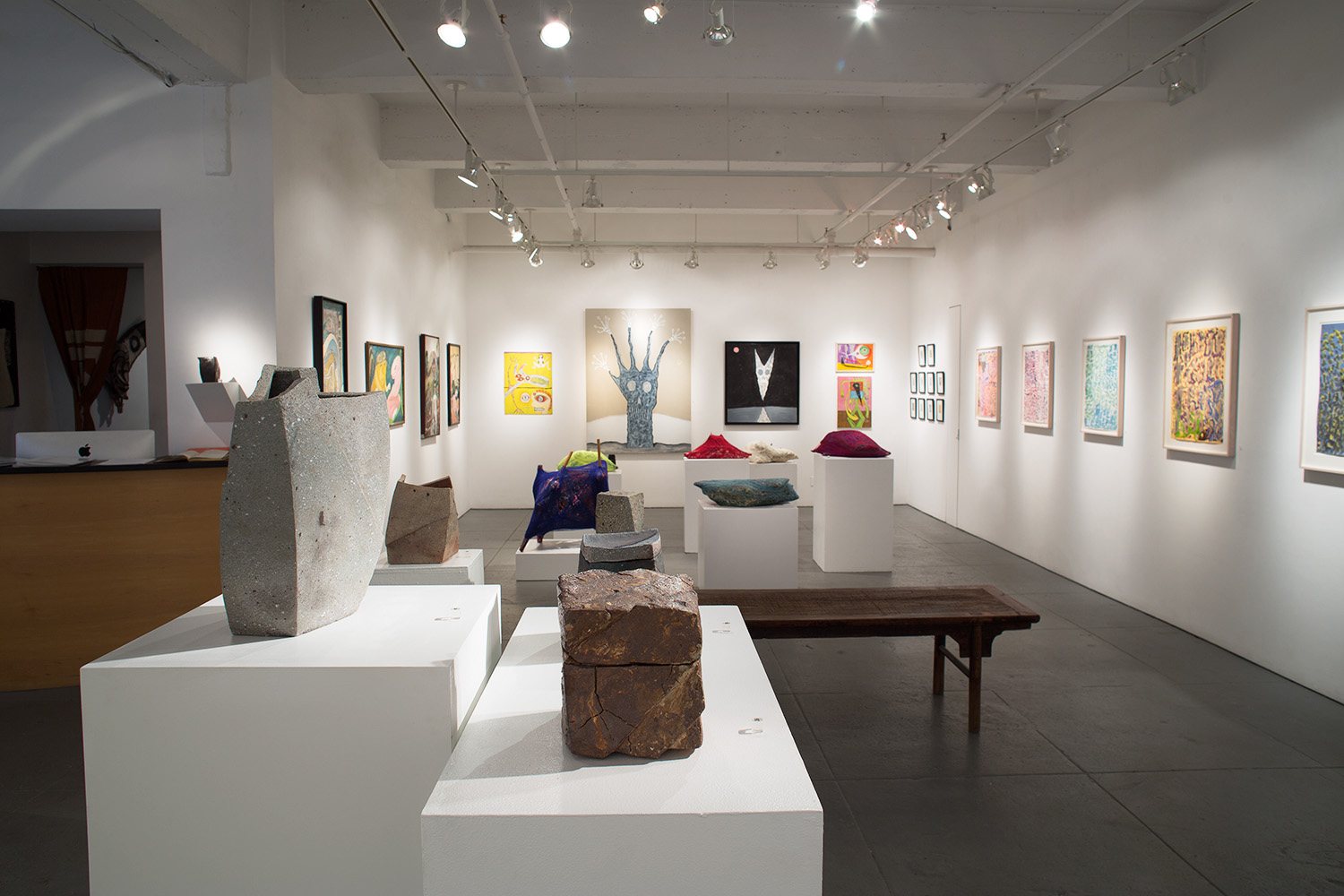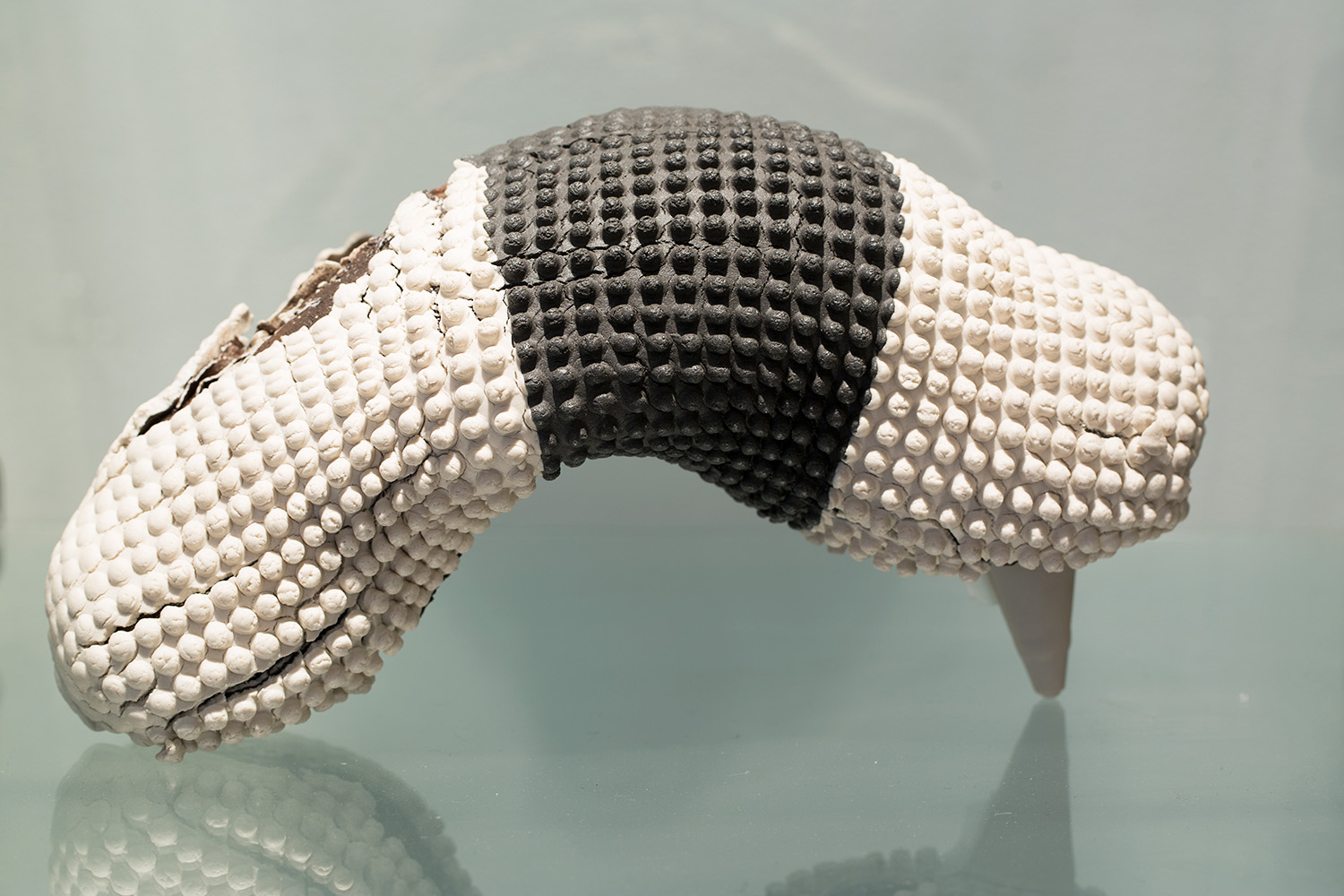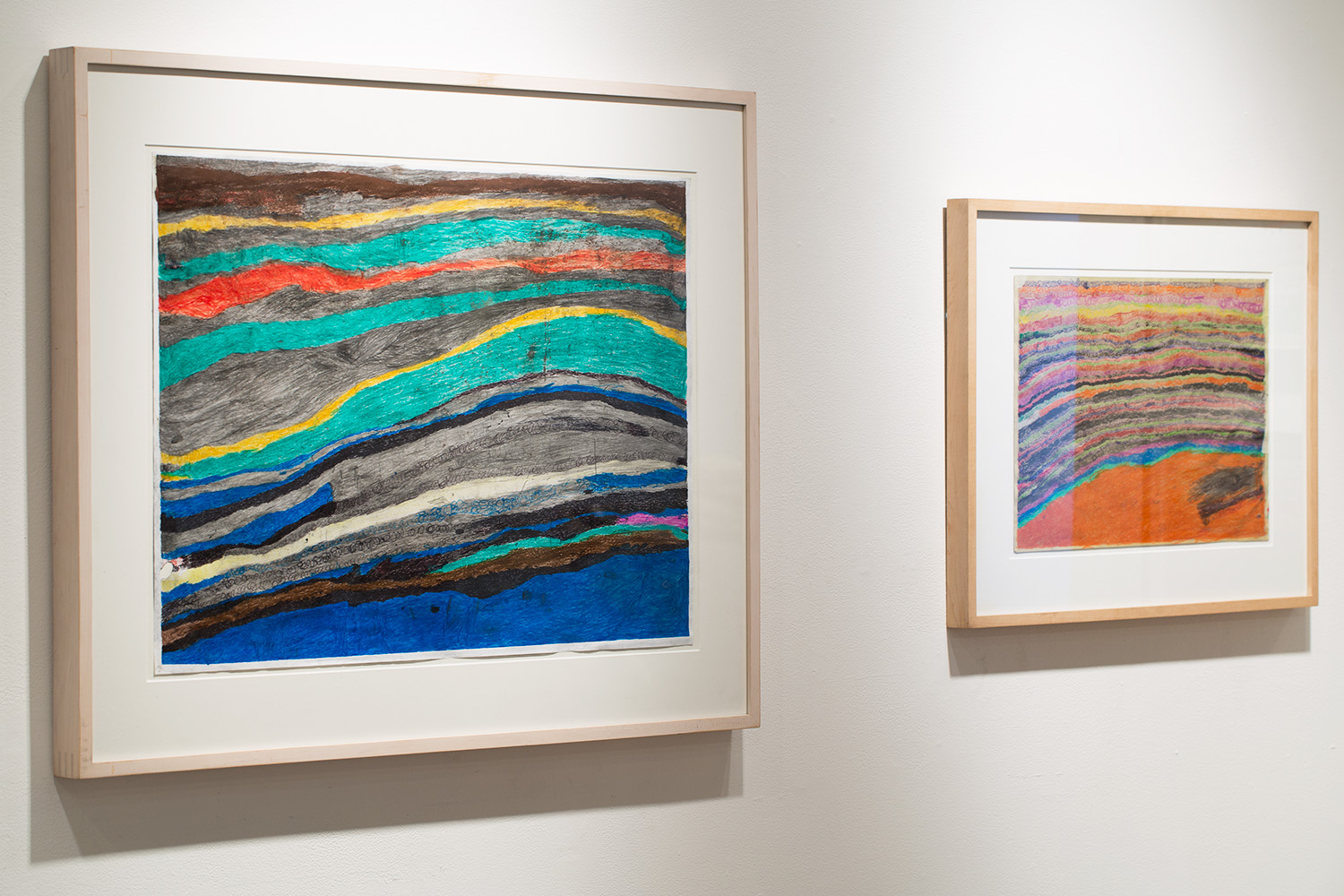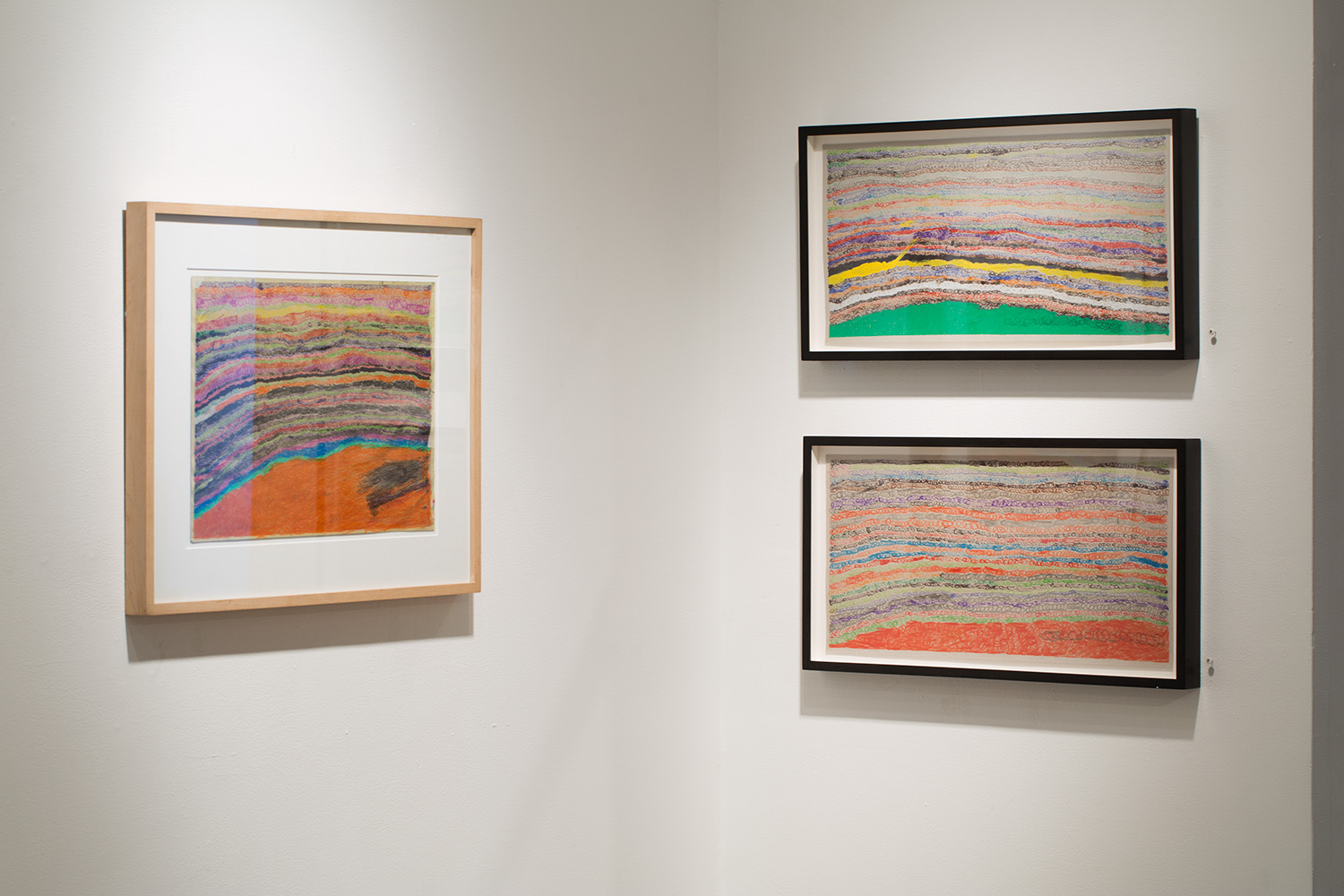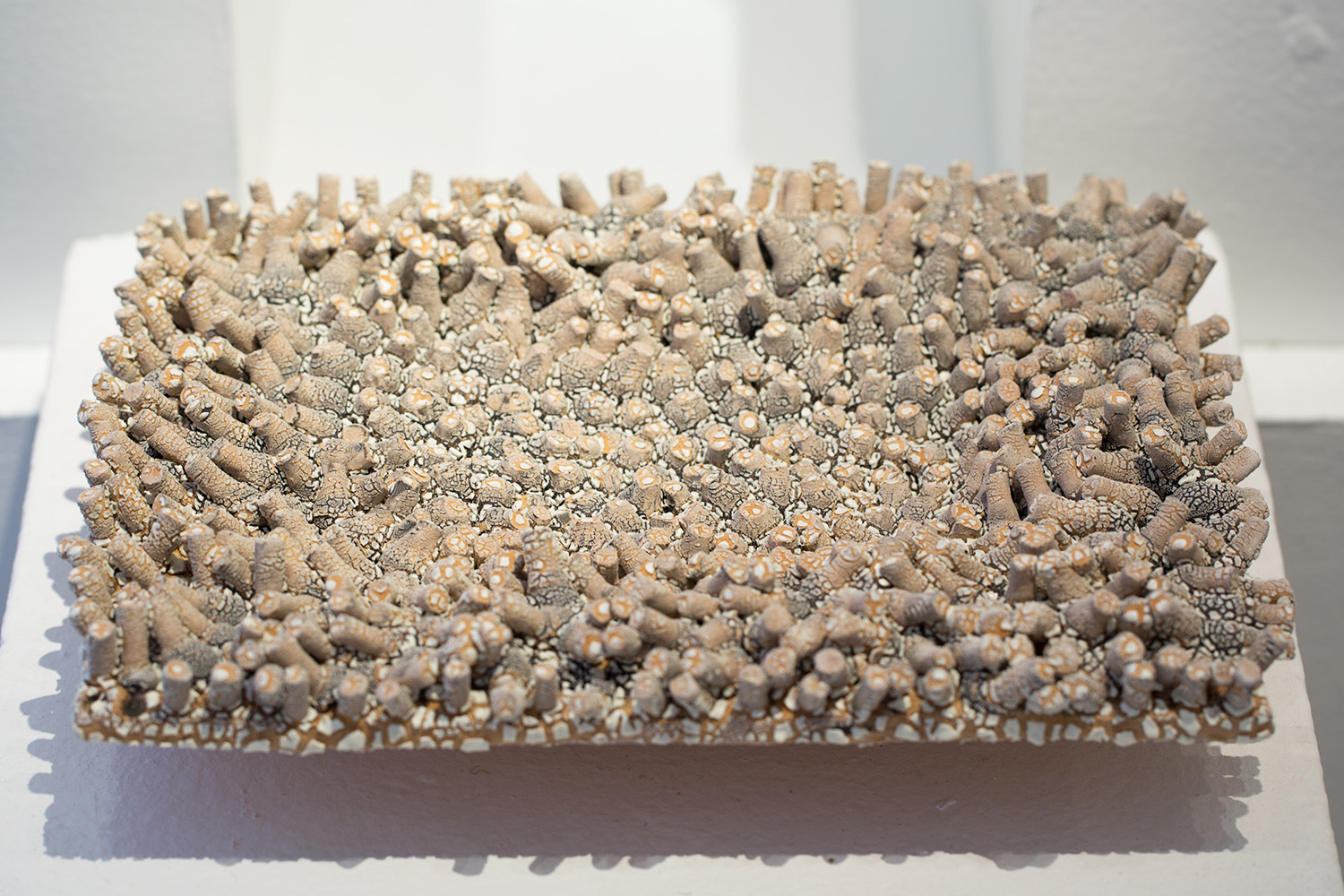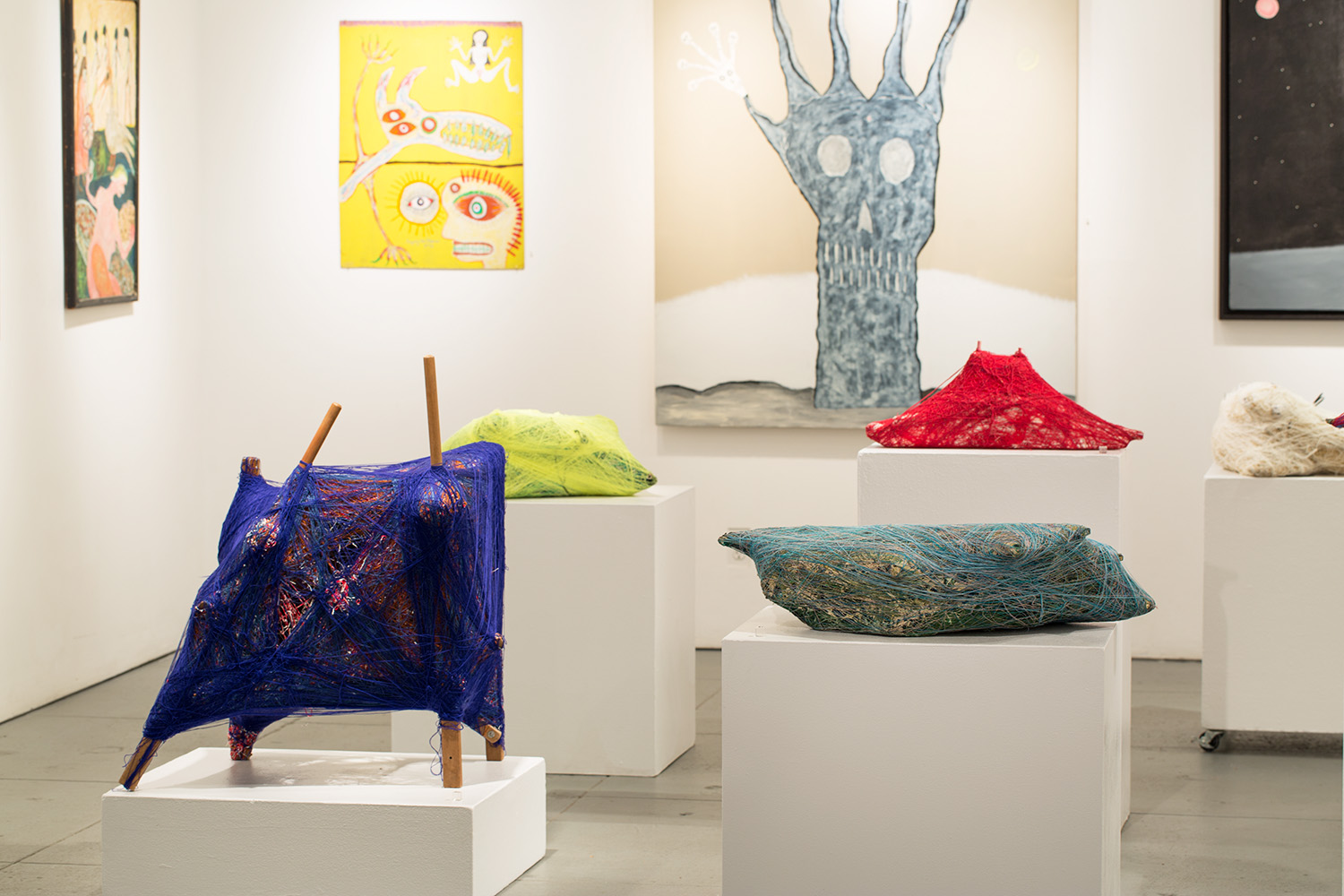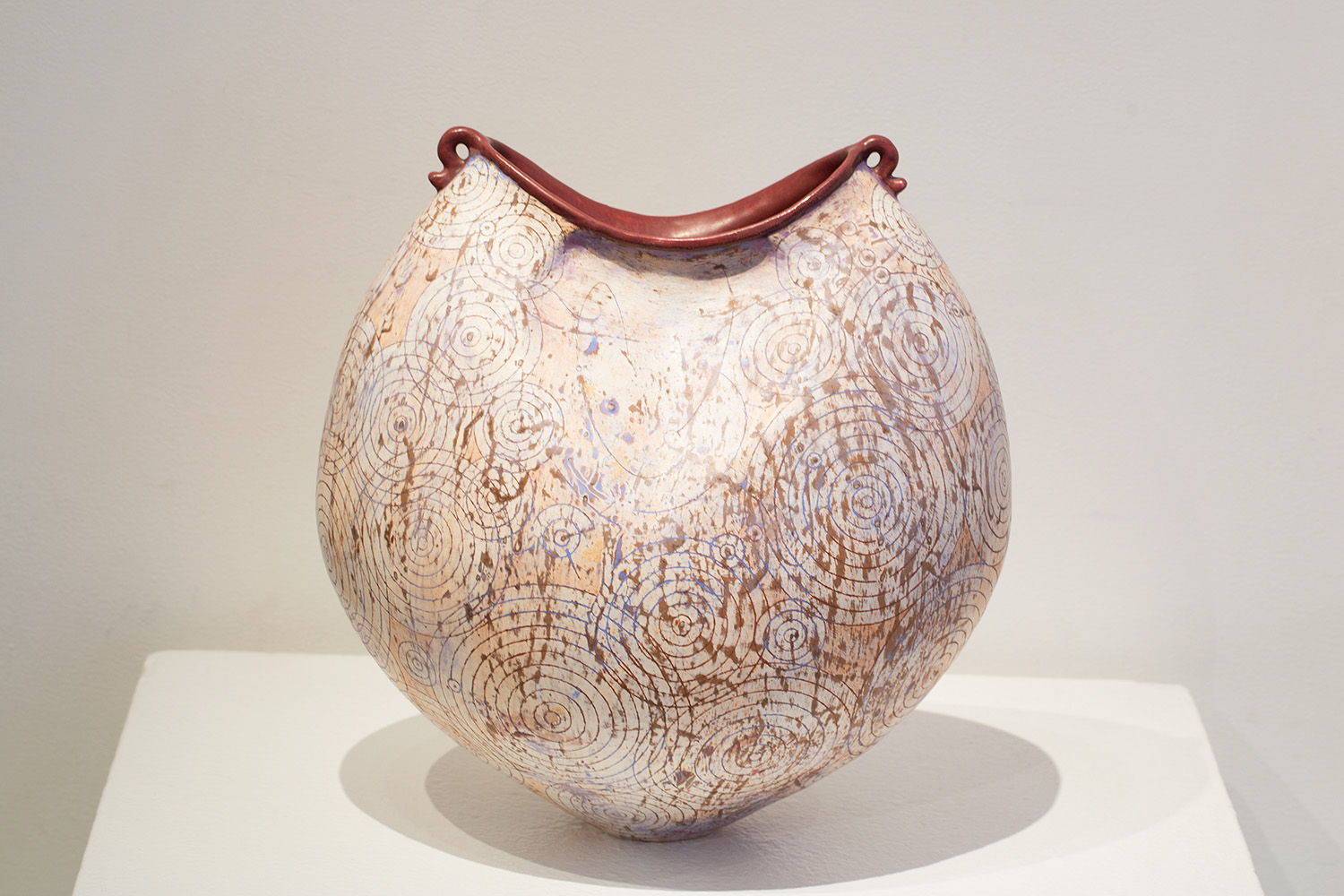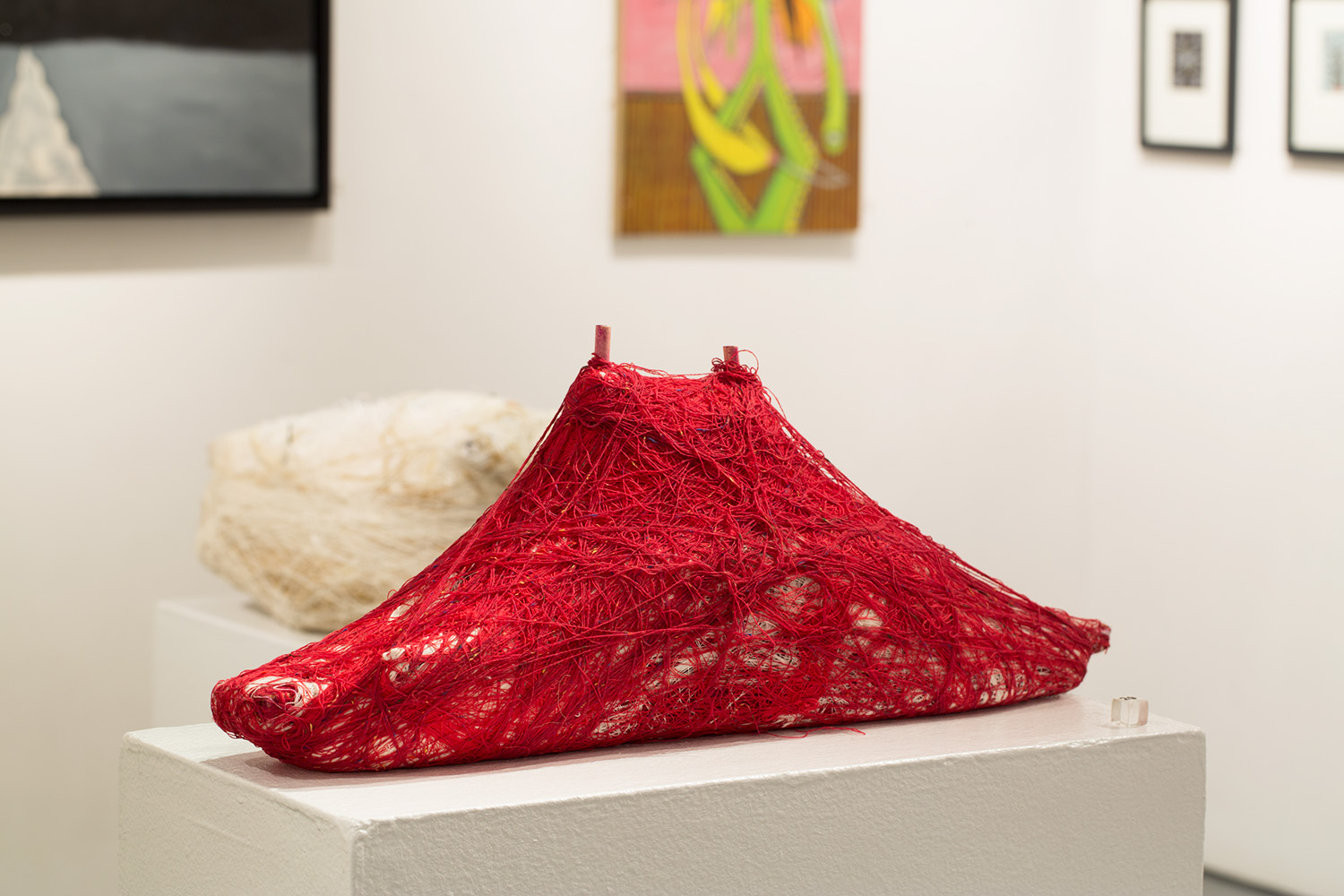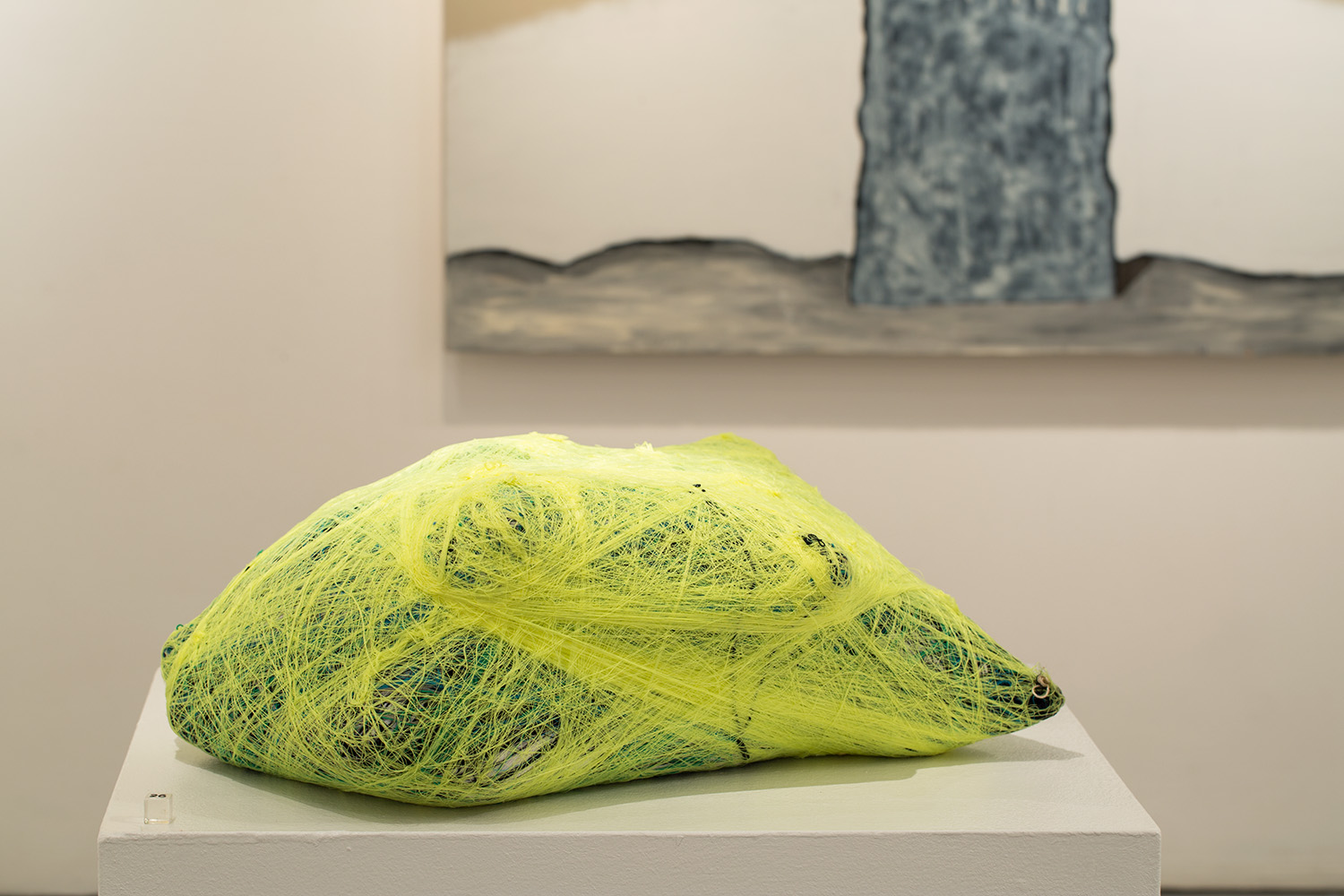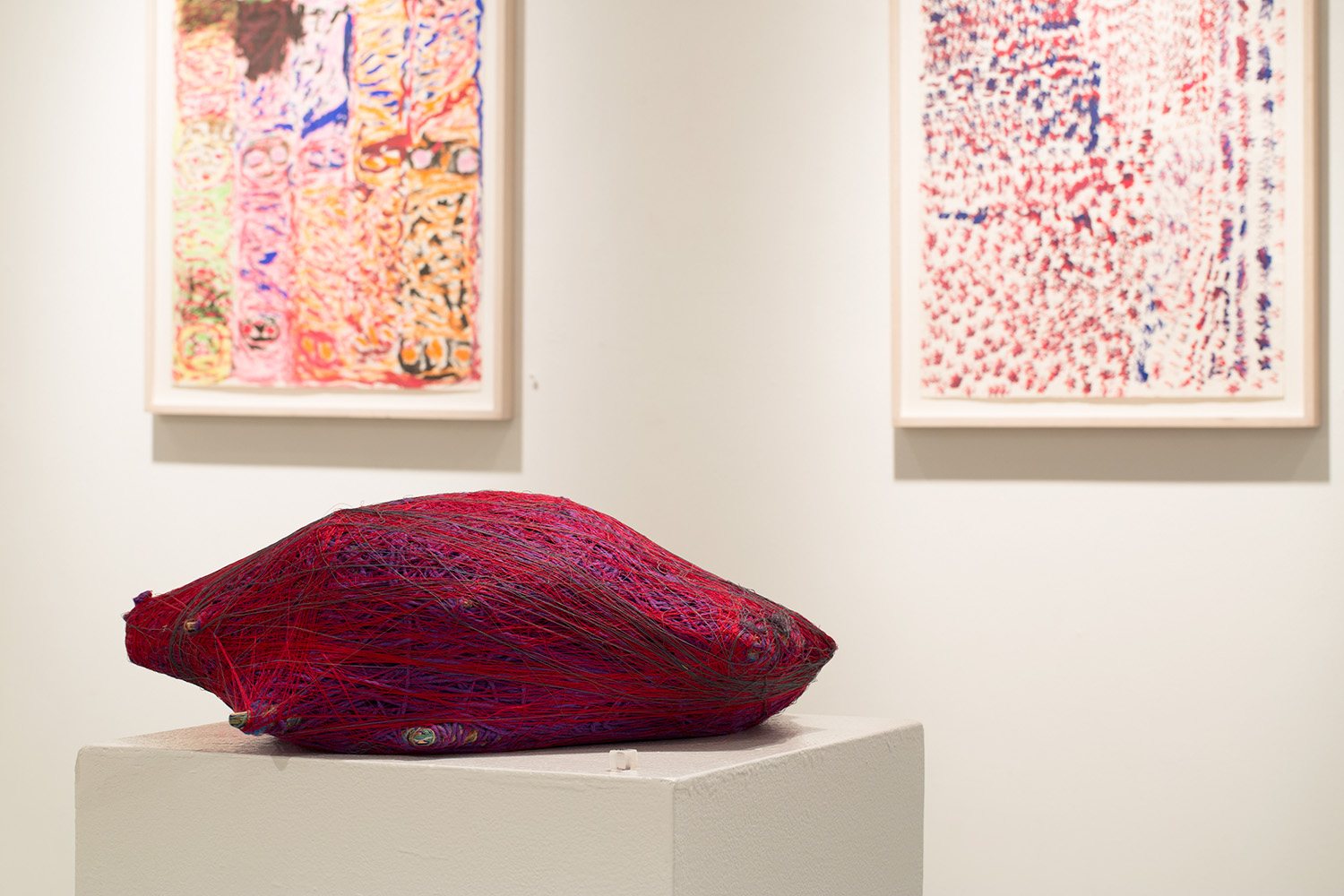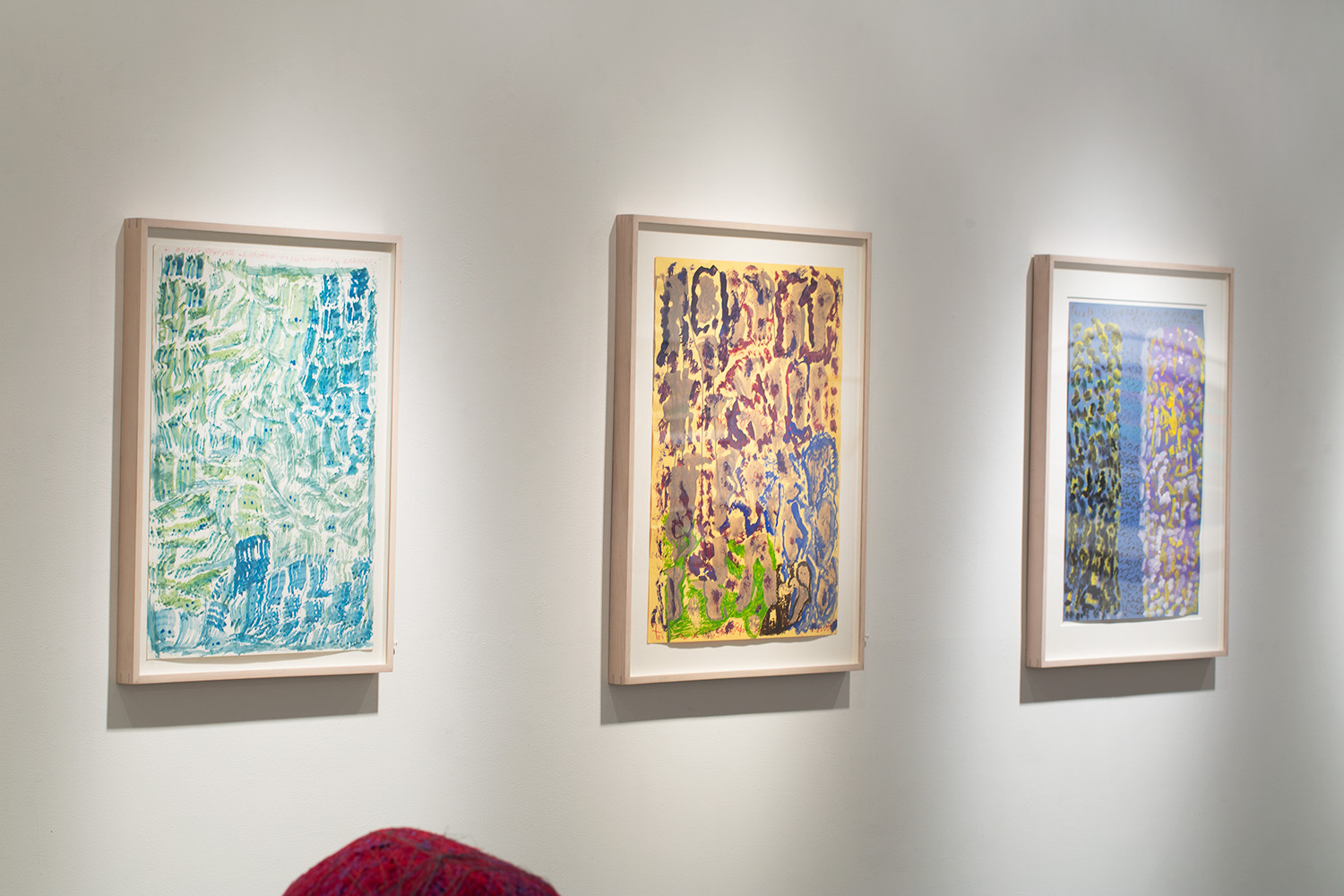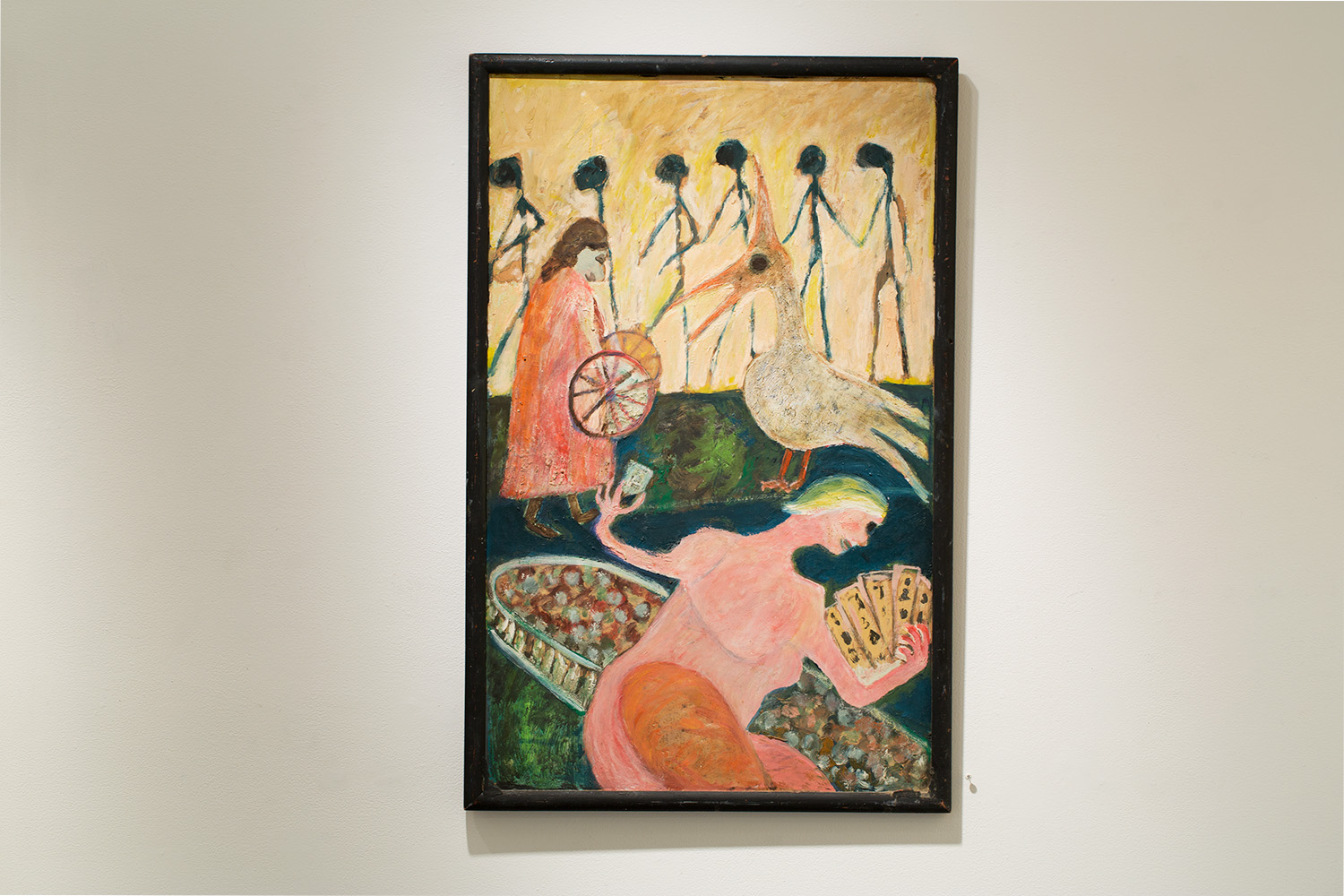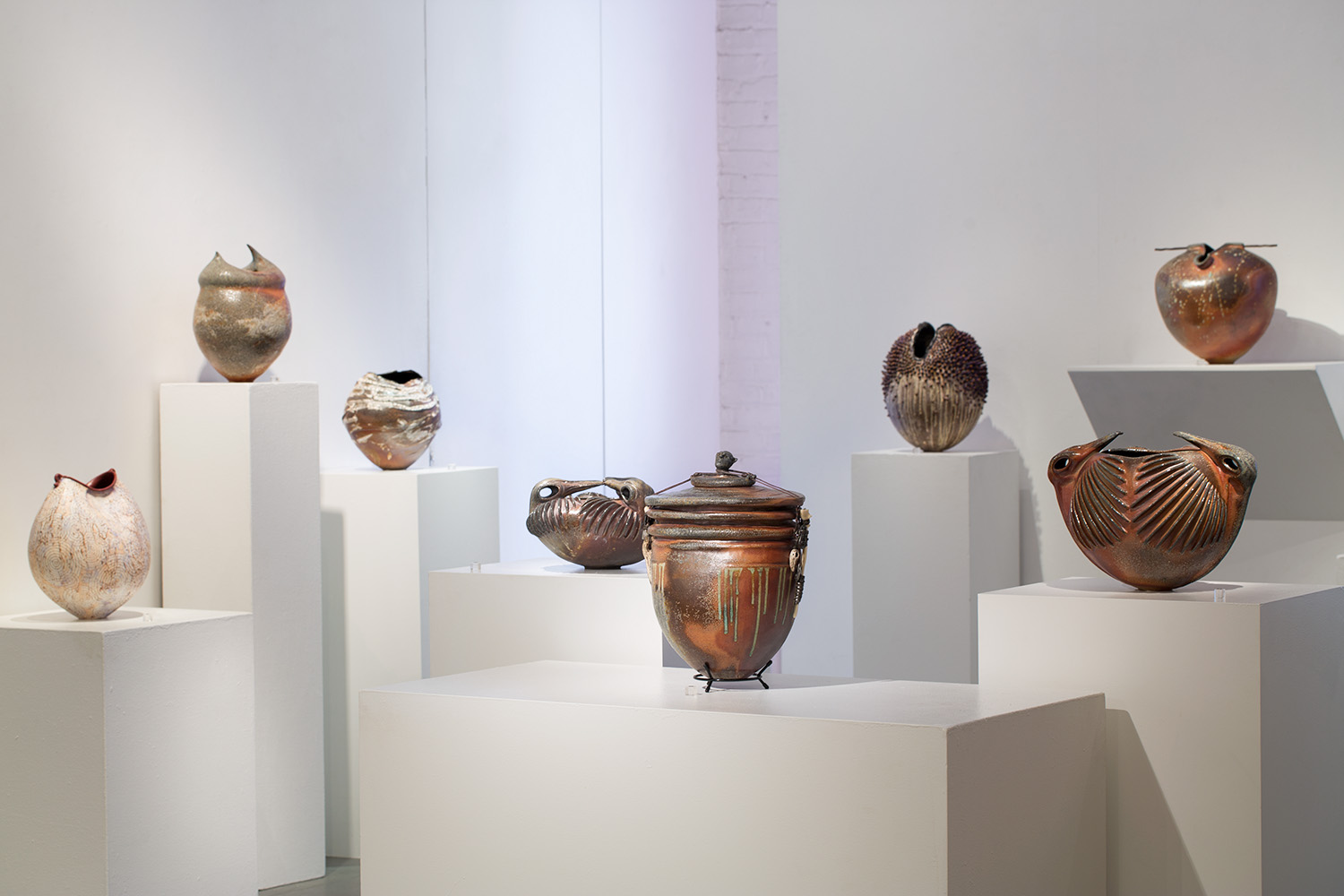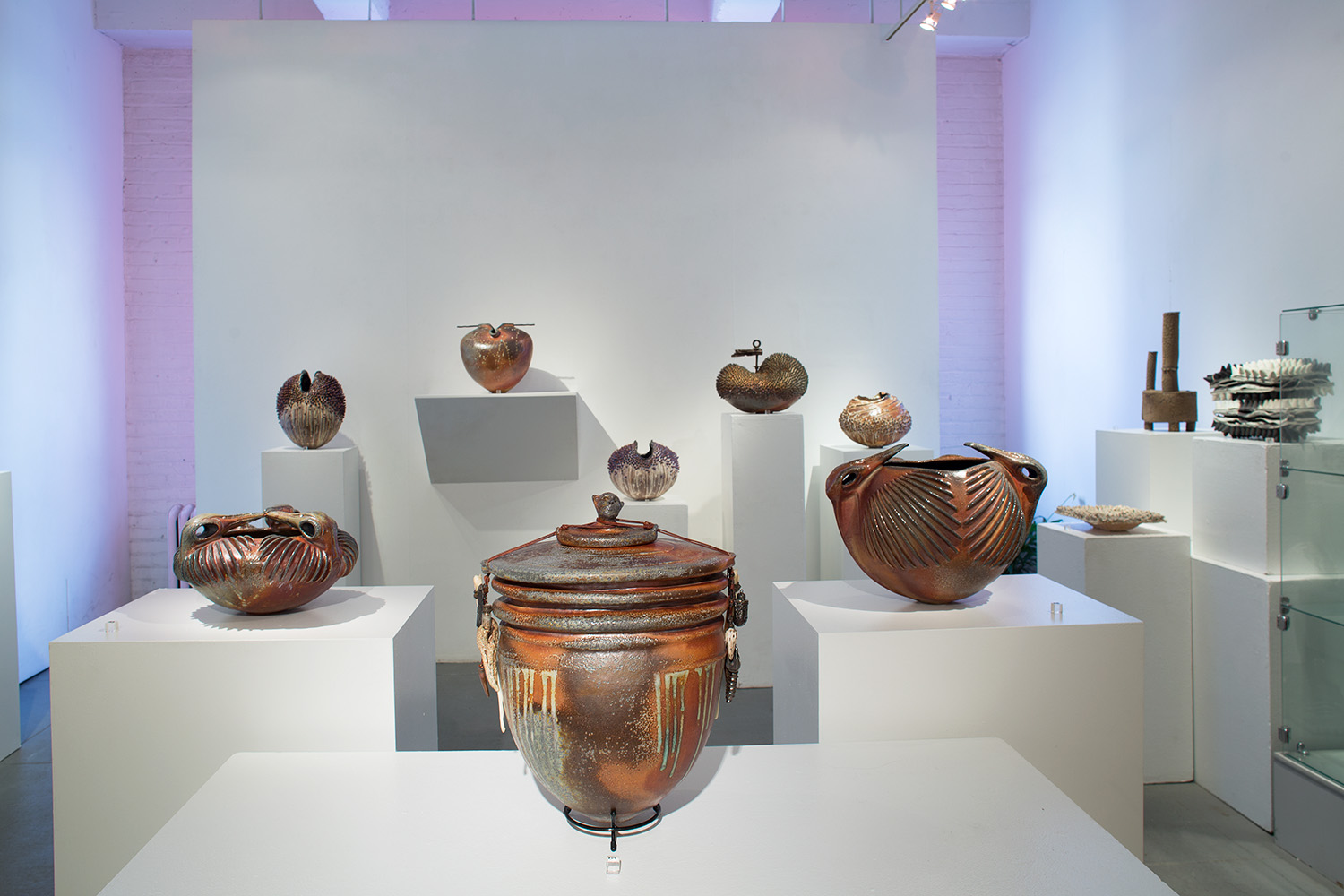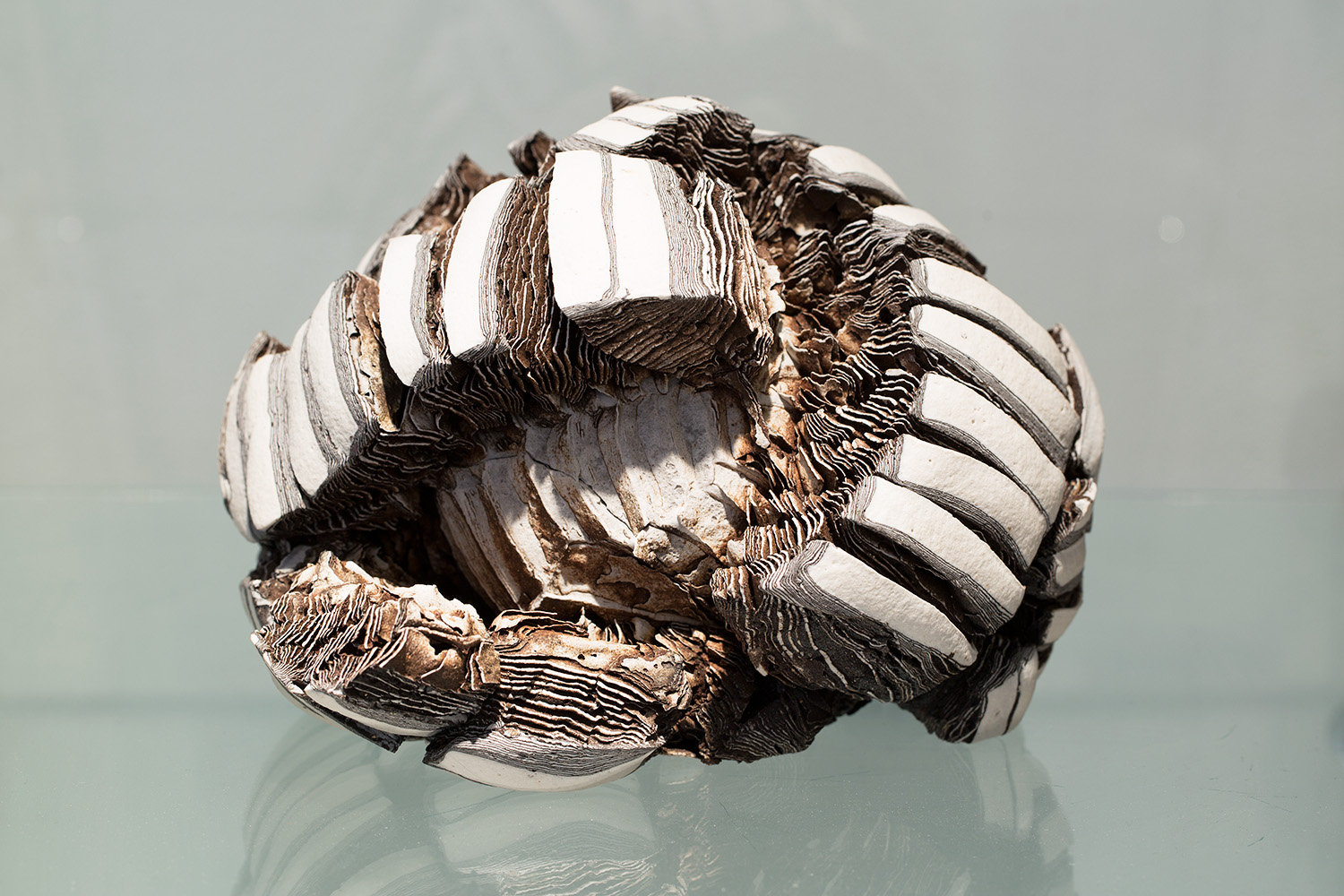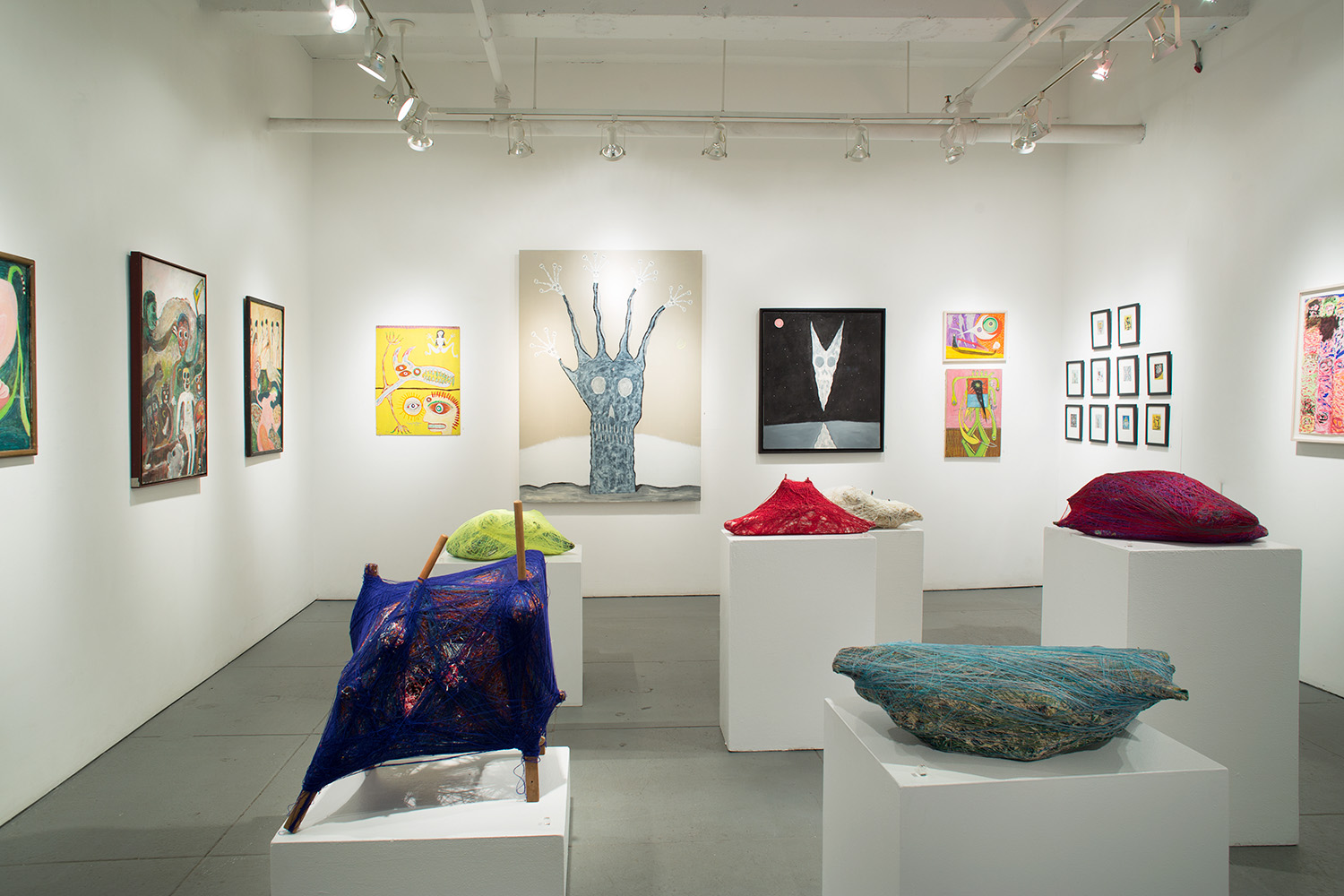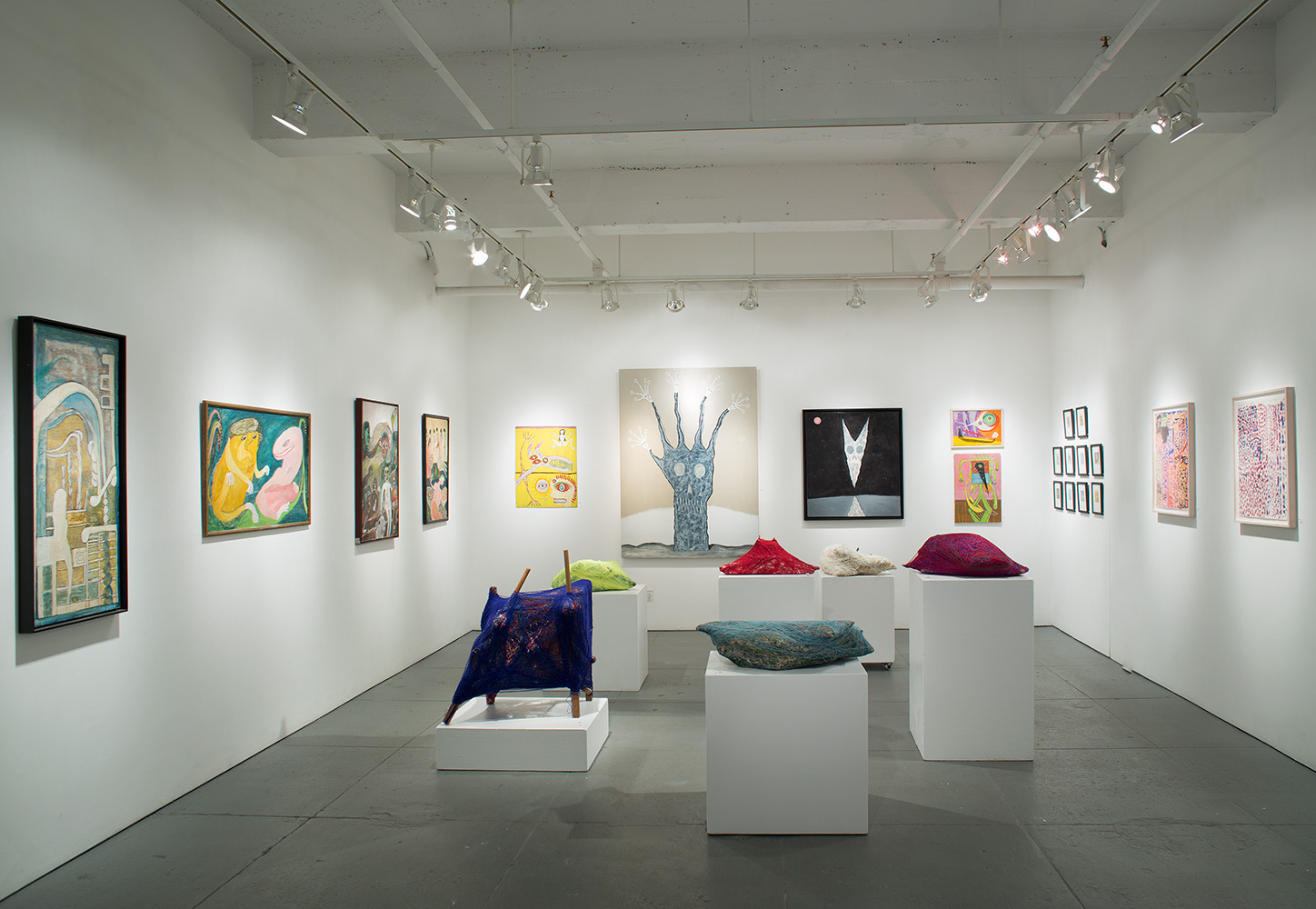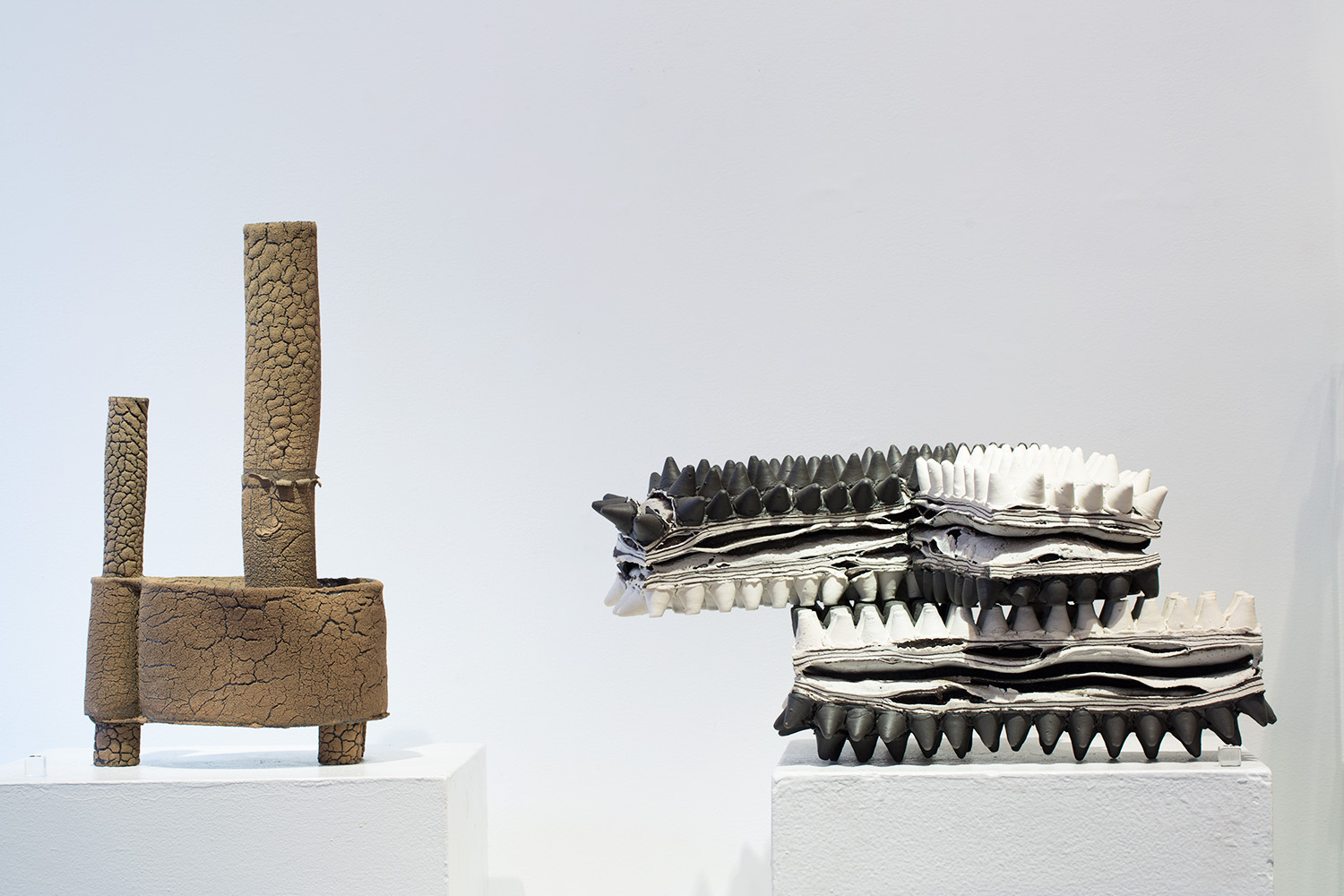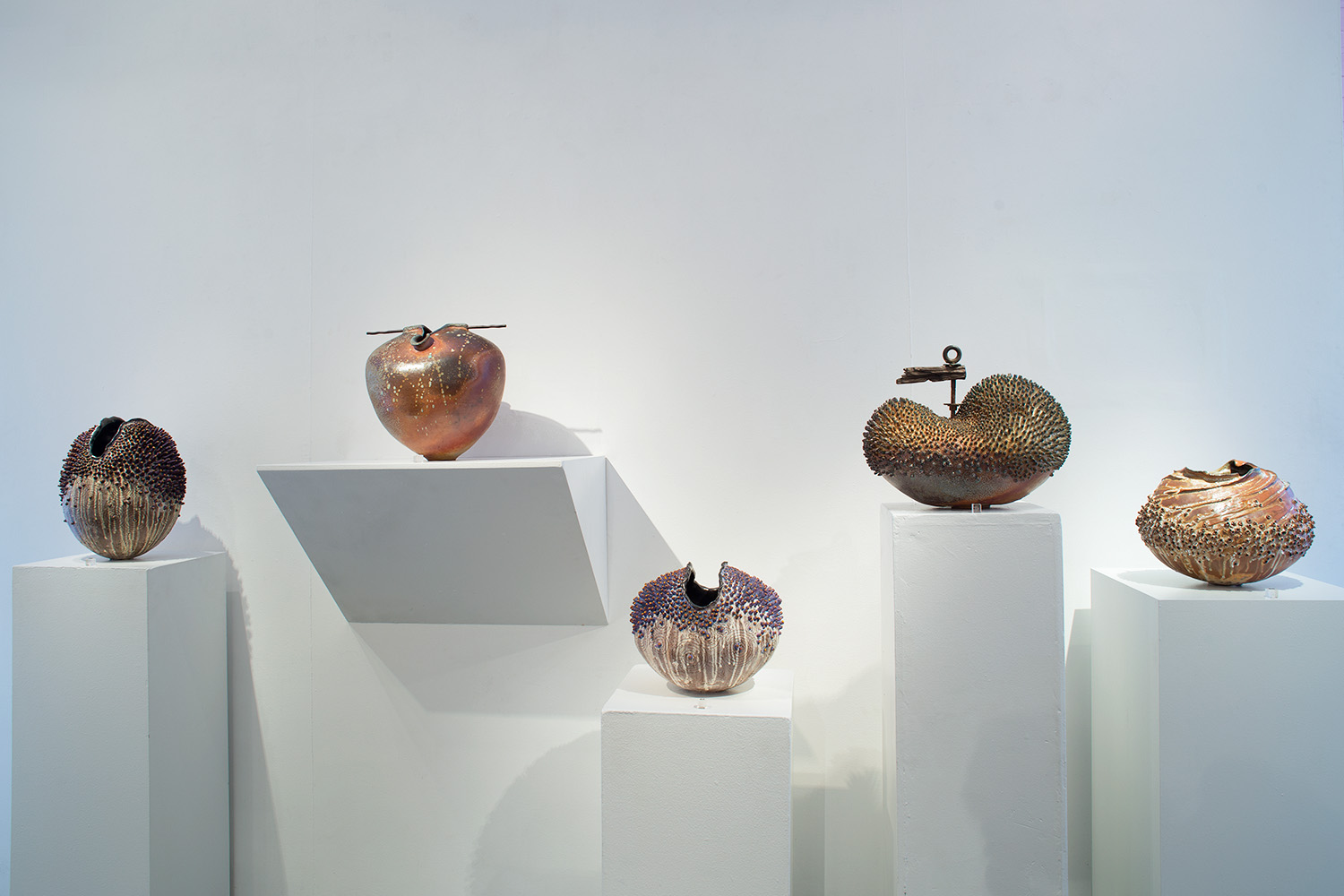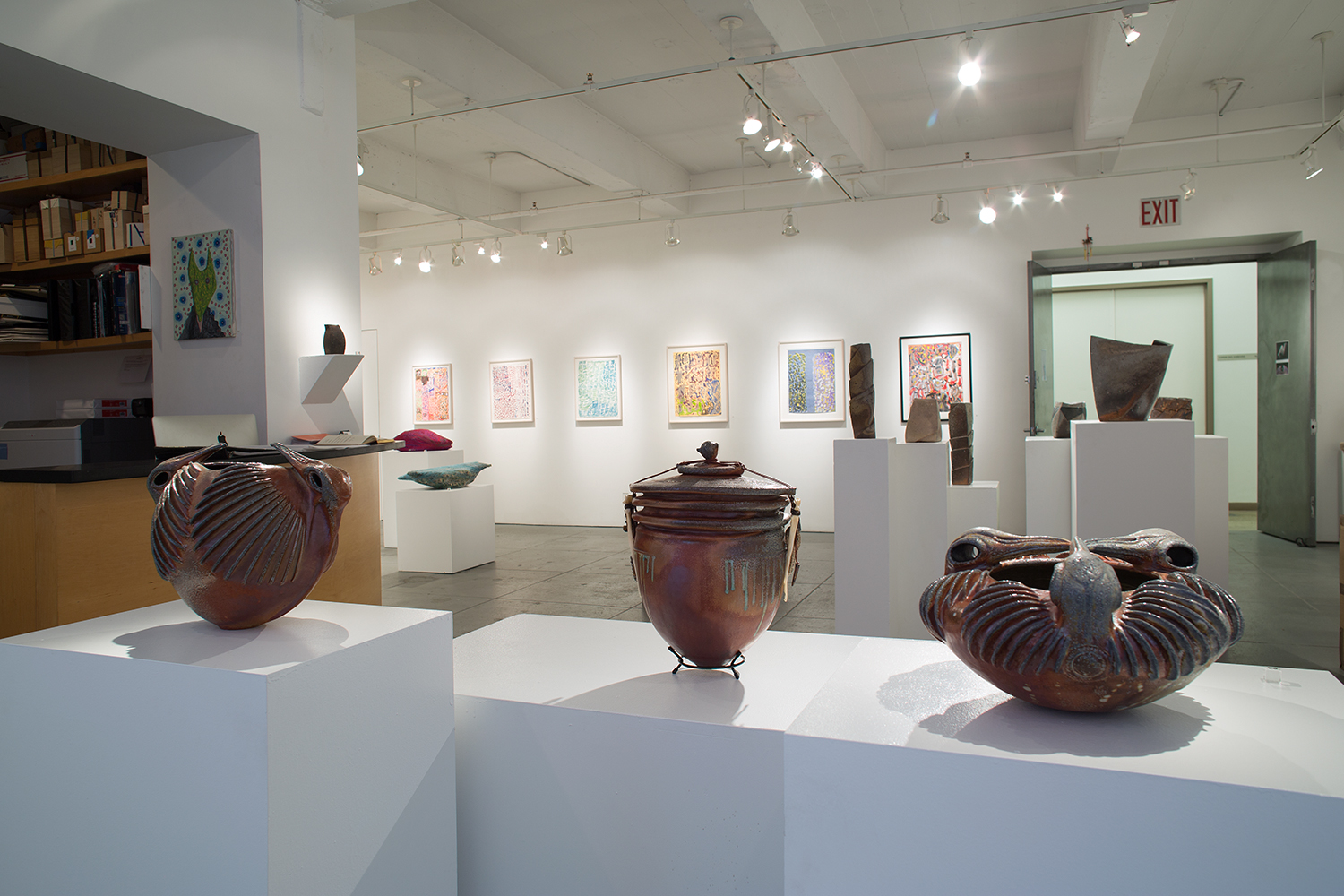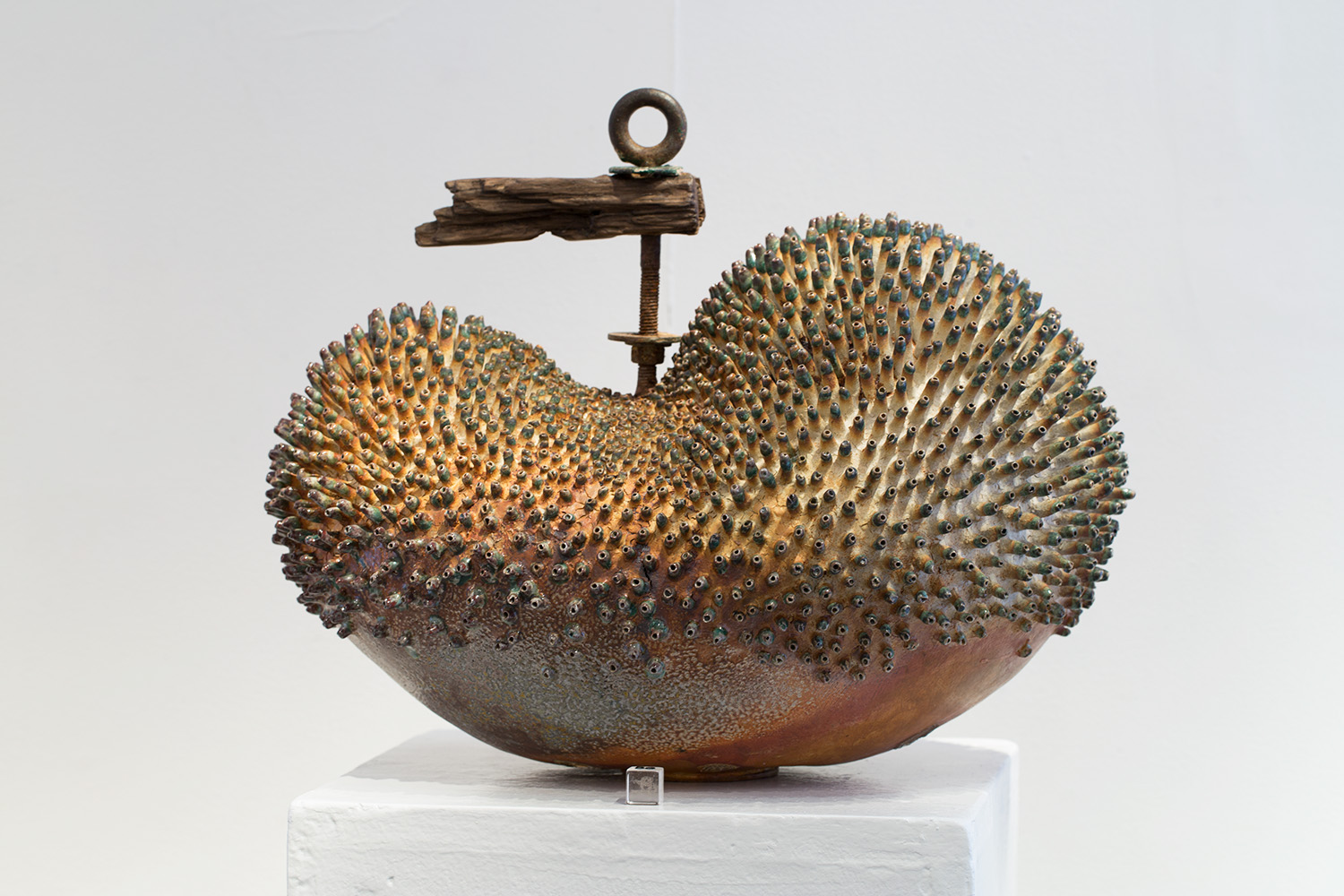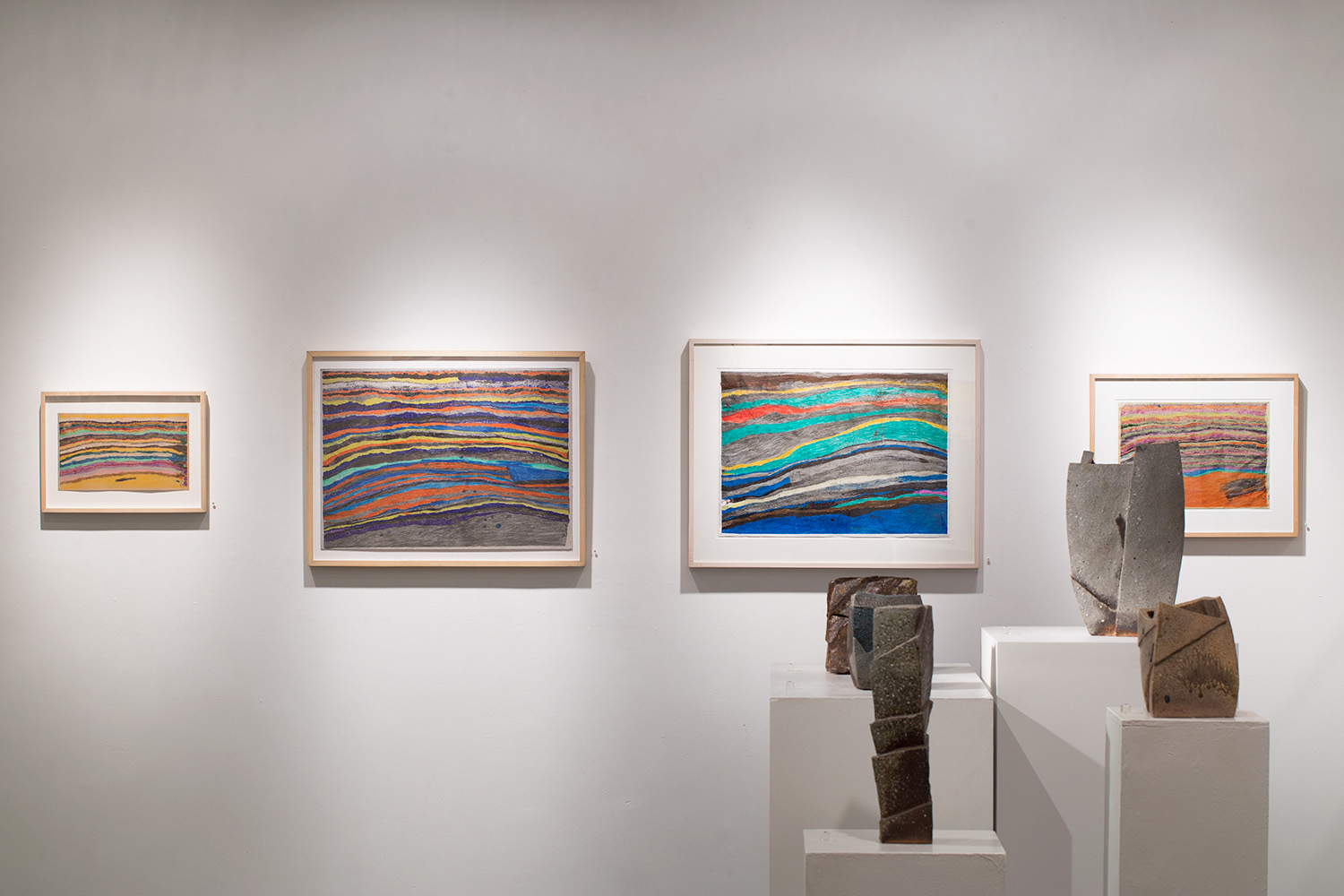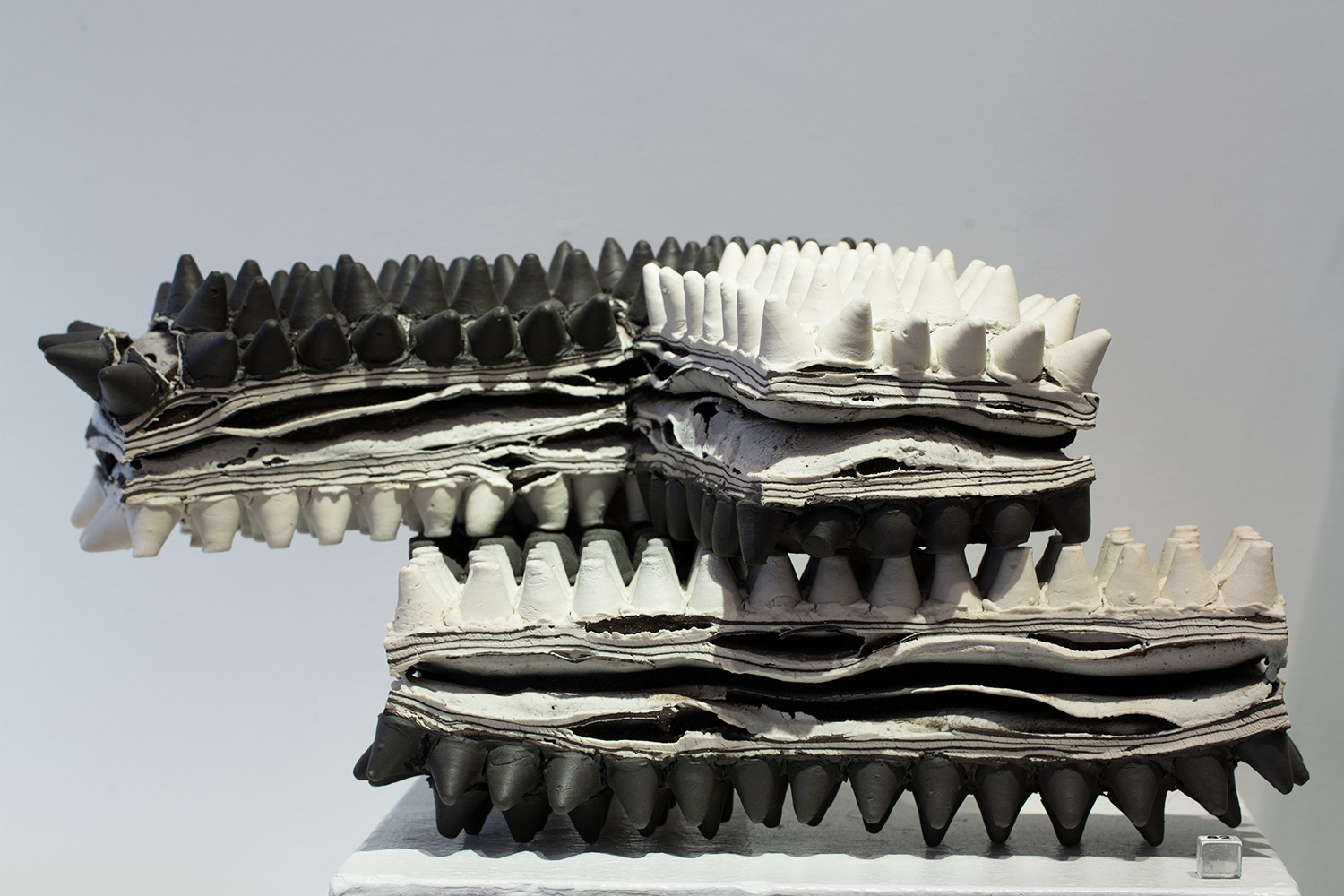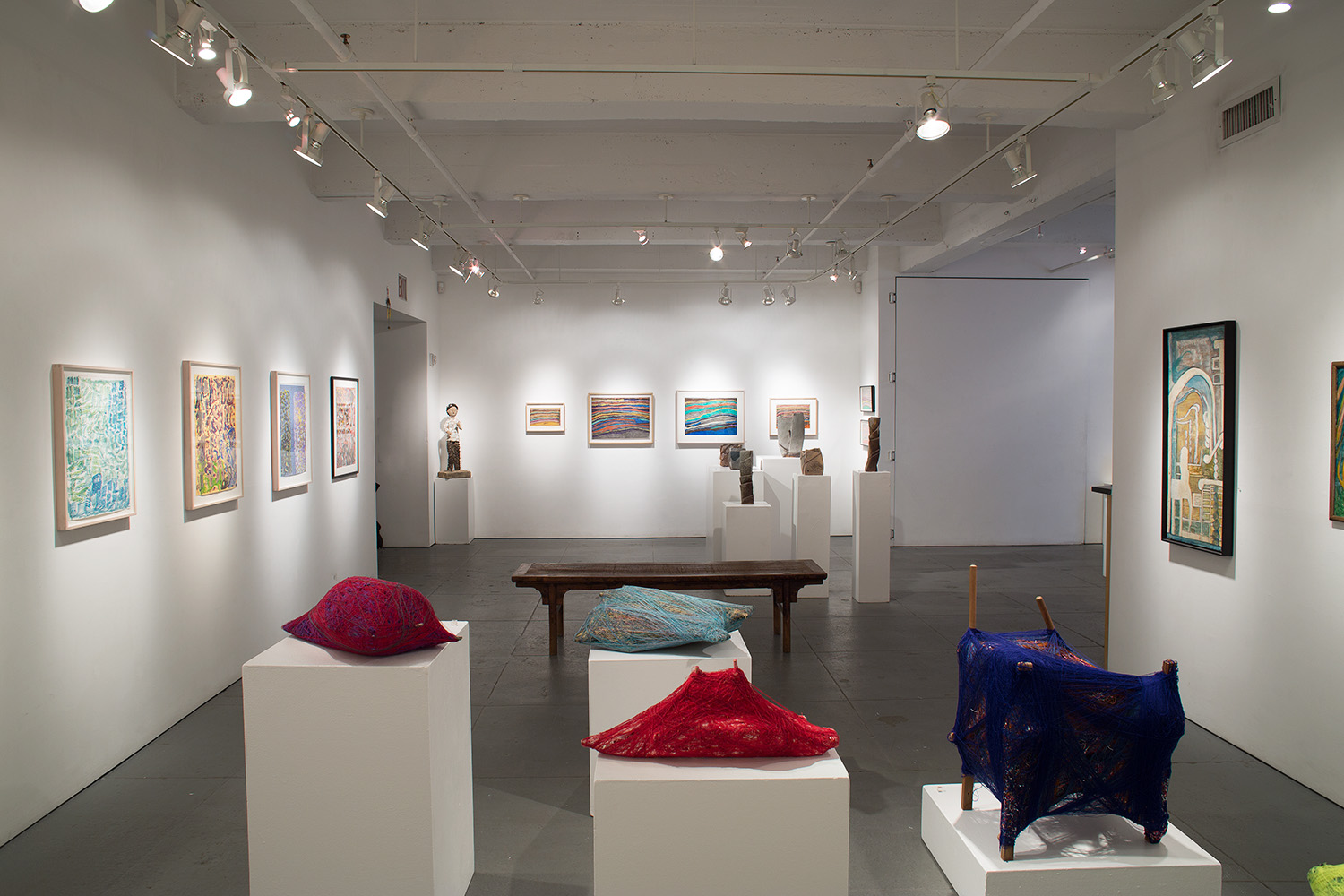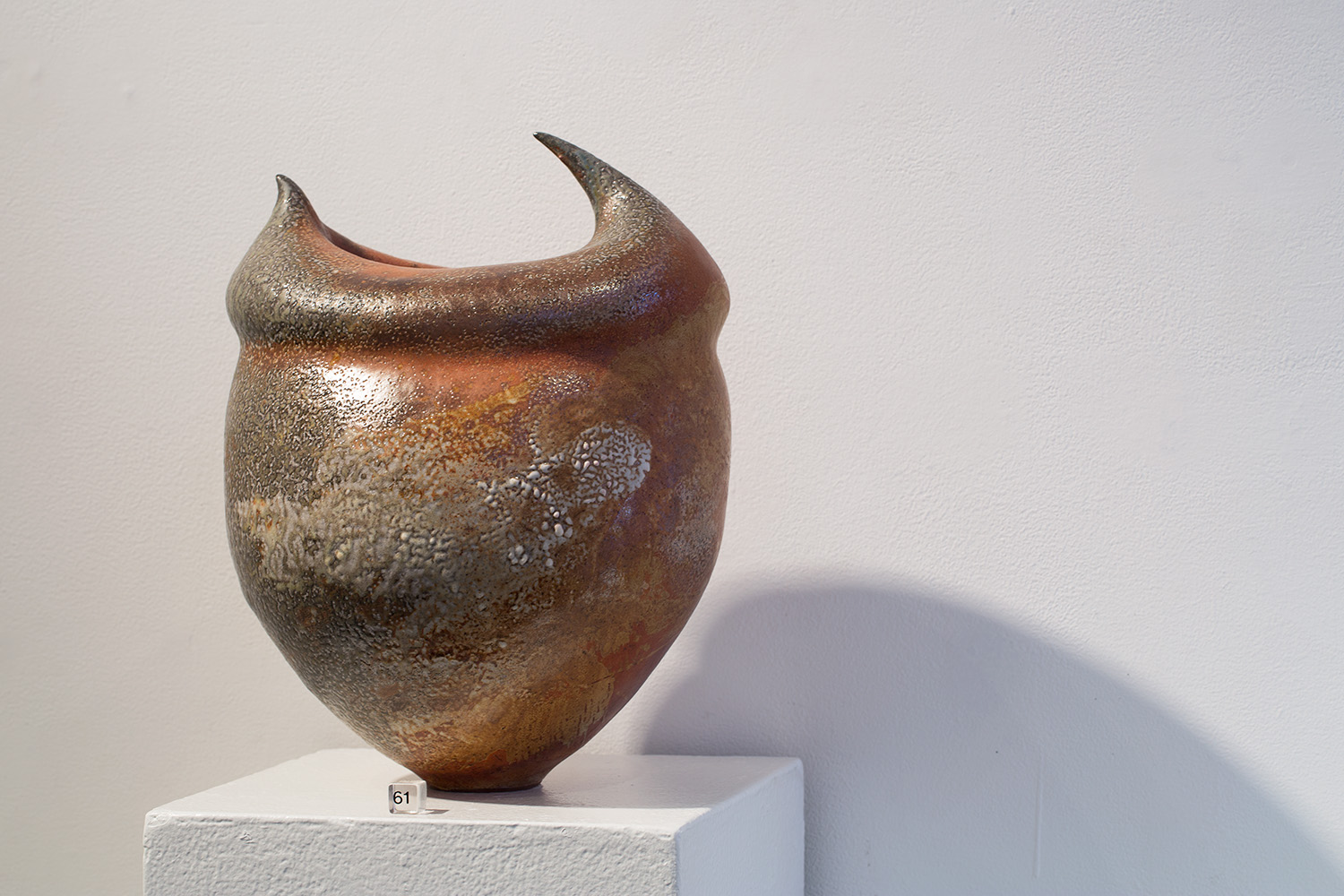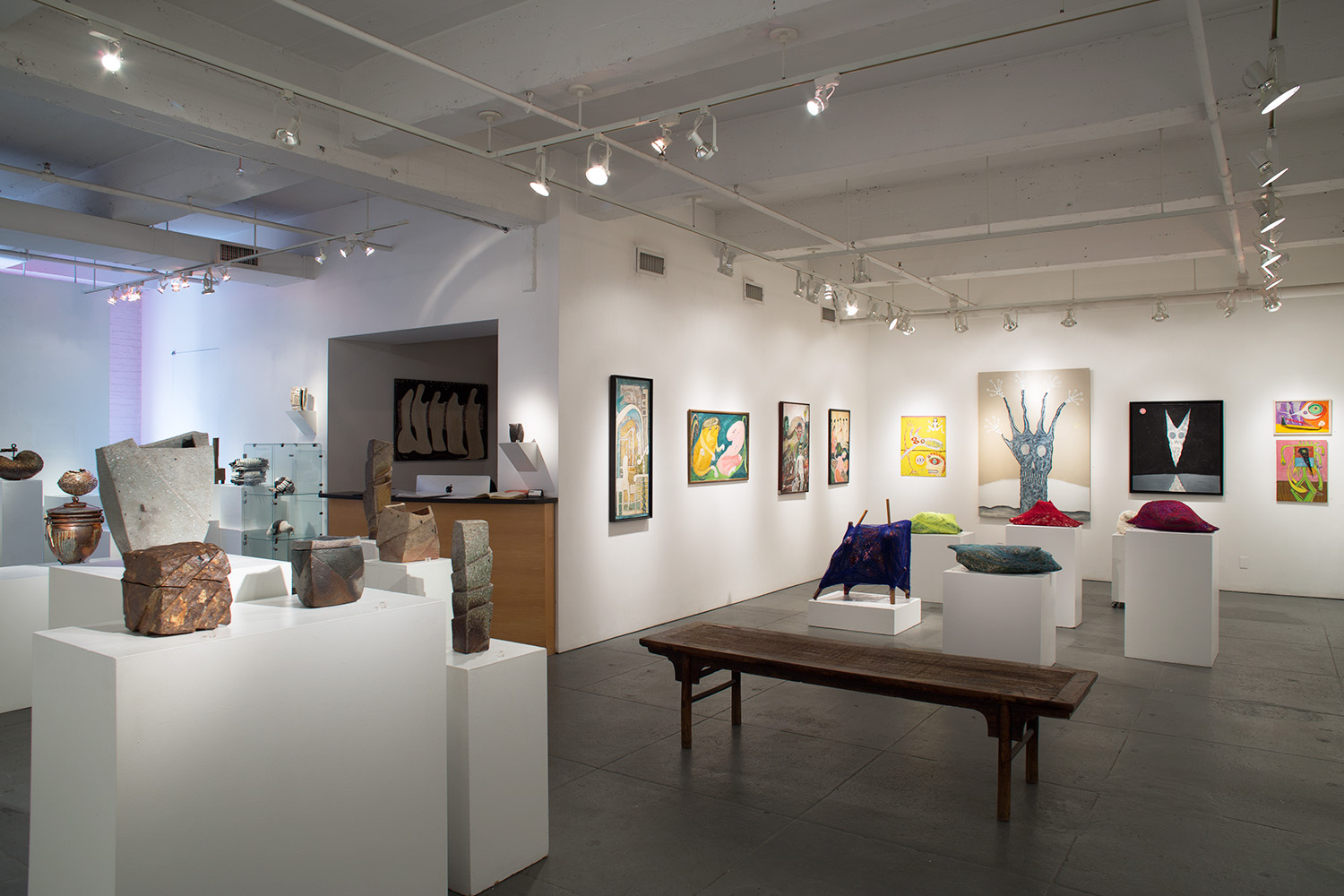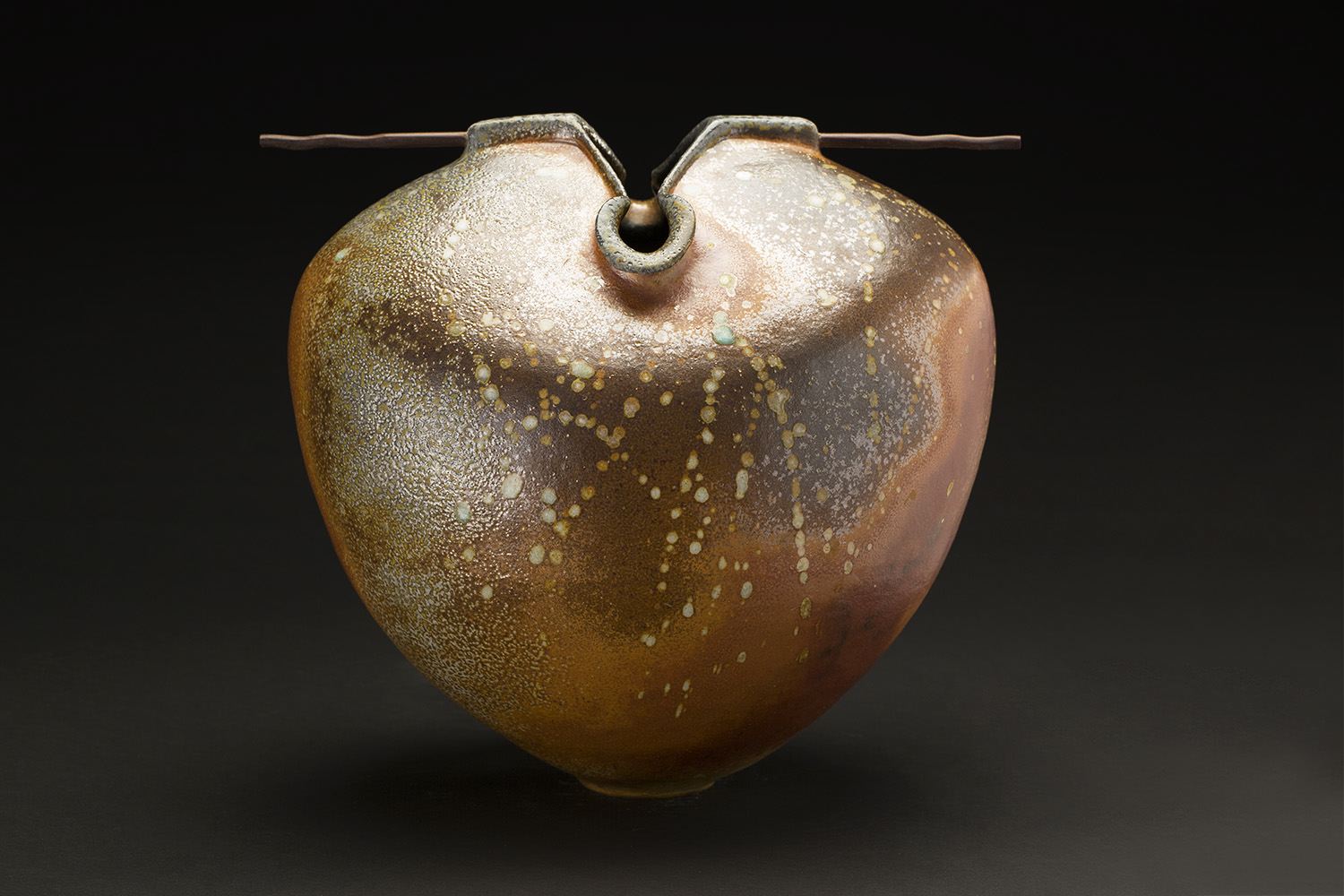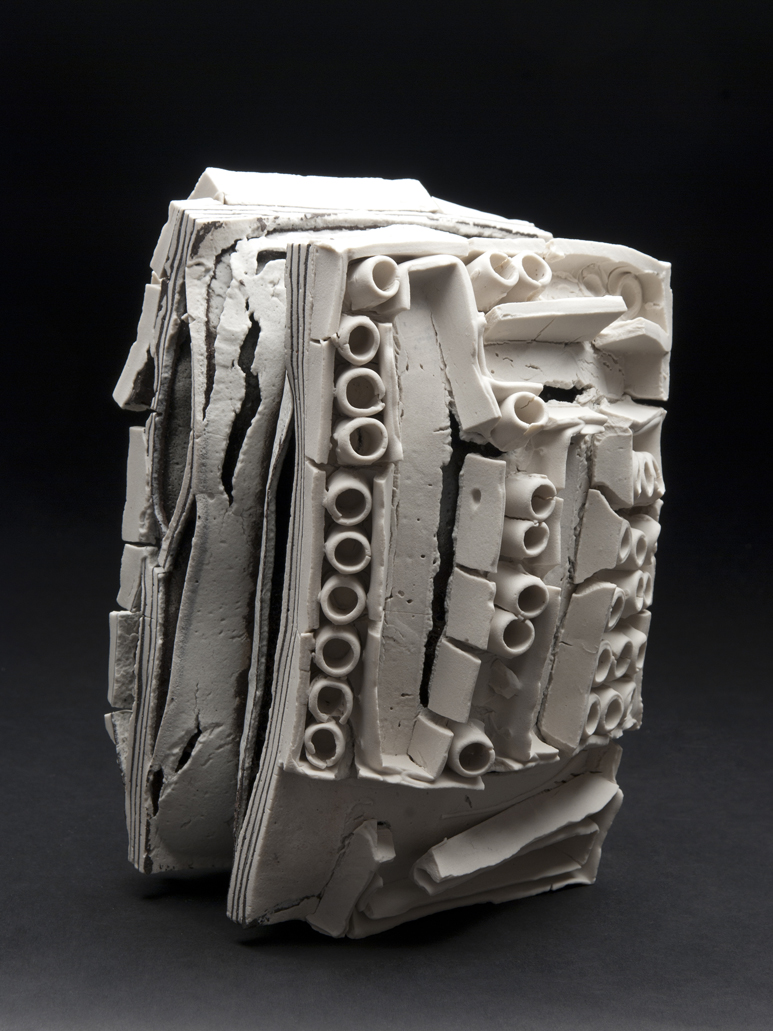THE BUSH HAVE EARS: LEONARD DALEY & RAS DIZZY (October 13 - November 23, 2016)
THE BUSH HAVE EARS: RAS DIZZY & LEONARD DALEY
(October 13 – November 23, 2016)
Ras Dizzy (1932- 2008) and Leonard Daley (1930- 2006) are two of the most important painters to emerge from the second generation of self-taught Jamaican artists born from 1930 to 1949, including Albert Zion, Evadney Cruickshank, Kingsley Thomas, Albert Artwell, and others.
Rastafarianism began to change Jamaican culture in 1930. Many artists were not actually Rastas, but they adopted many of the philosophical outlooks and the cultural resistance of the Rasta movement, similar to the way the counter-culture of the sixties affected lifestyles world-wide without everyone necessarily becoming hippies.
Jamaicans growing up in this time were enveloped in post-slavery and post-colonial issues and religions, such as Revival and Kumina (a Kongo-based religion begun in Jamaica by post-slavery indentured servants). Many Jamaicans emigrated to Panama and England to work, and and those who returned found less than desirable economic conditions. Despite outlawing Obeah (Jamaican hoodoo), the colonial powers in Jamaica were not as successful as the white Americans in suppressing African and pan-African spiritual impulses. Rastafarianism incorporated many Kumina customs in its tenets and lifestyles.
Neither Dizzy not Daley were anything but freewheeling in their spiritual outlooks. Dizzy was a poet before he became an itinerant artist. He wandered the island with his paintings under his arm to display and sell to people. Daley was a maverick philosopher, a cantankerous riddler who covered the walls of his house with what I call his ‘dub’ paintings. He was continually painting and repainting them at will so that they became a restless journal of his reasonings and questioning of social life. Dub is a form of reggae and post-reggae music in which the lyrics are removed and cut up to create a soundscape where rhythm becomes the narrative and the meaning is ambiguous and constantly changing. Daley is a master of powerful visual ambiguity in his thickly painted layers, not unlike work from some of the North American artists like William Hawkins and Thornton Dial.
Ras Dizzy is closer to a classic art brut artist but he never sacrifices his canny insights on both real and fantastical worlds. He works from his culture. He references a prophetic location called Sheffield as his visual home ground. There life is filled with deep color; reinvented palm trees, mysterious market women, cowboys, fantastical boats, extremely detailed horse races, Rastafarians, etc. But Sheffield is not always peaceful. Demonic beings he calls monopolys also live there. Each Dizzy painting is a rich pool of subtle and not so subtle color that resolves into meditative abstractions.
They were both obsessed with music from early American jazz to mento, reggae and dancehall. Their work is amuletic also, like much African American vernacular art. It serves as a marker of survival and a visual form of oral culture. The work of Ras Dizzy and Leonard Daley holds its magic close to its chest, but reveals great depth to those who open themselves to it.
For further information please contact Cavin-Morris Gallery at info@cavinmorris.com, or phone: 212-226-3768.
Check out this great review of The Eloquent Place
Harald Stoffers
Brief 163, 2010
Waterproof felt tip pen on cardboard
39.375 x 27.5 inches
100 x 69.9 cm
HaS 23
Current exhibition will be up through October 8th!
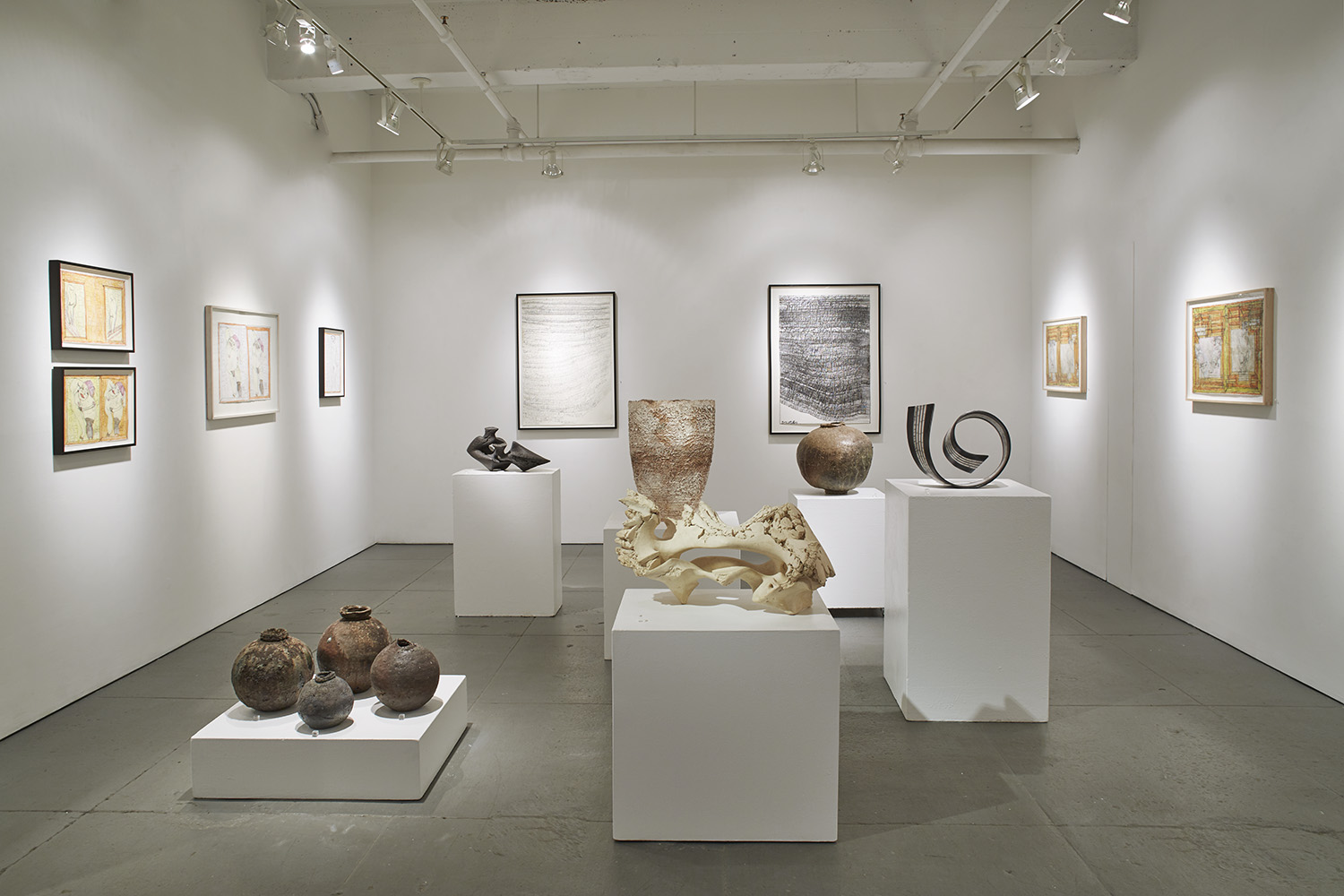

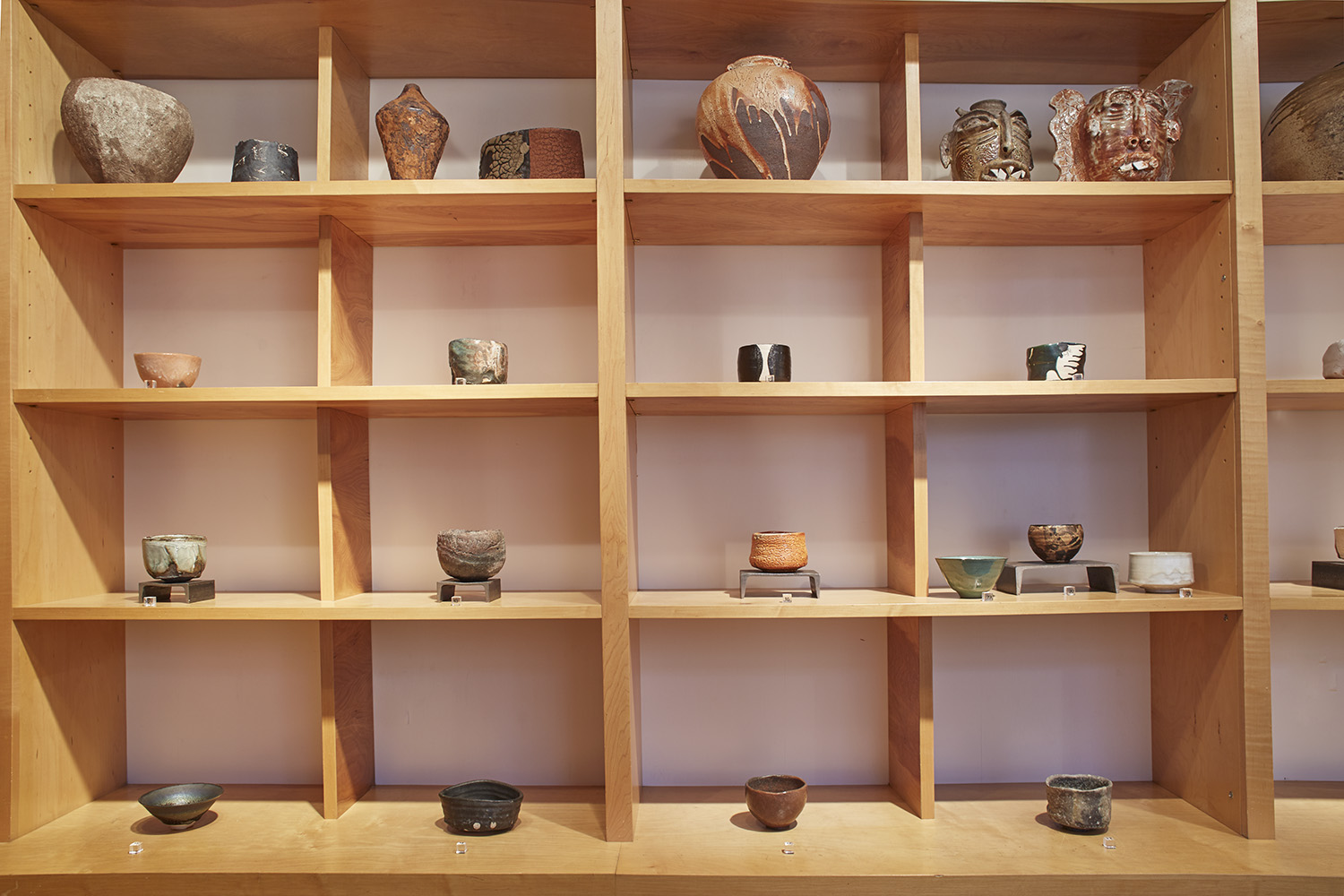
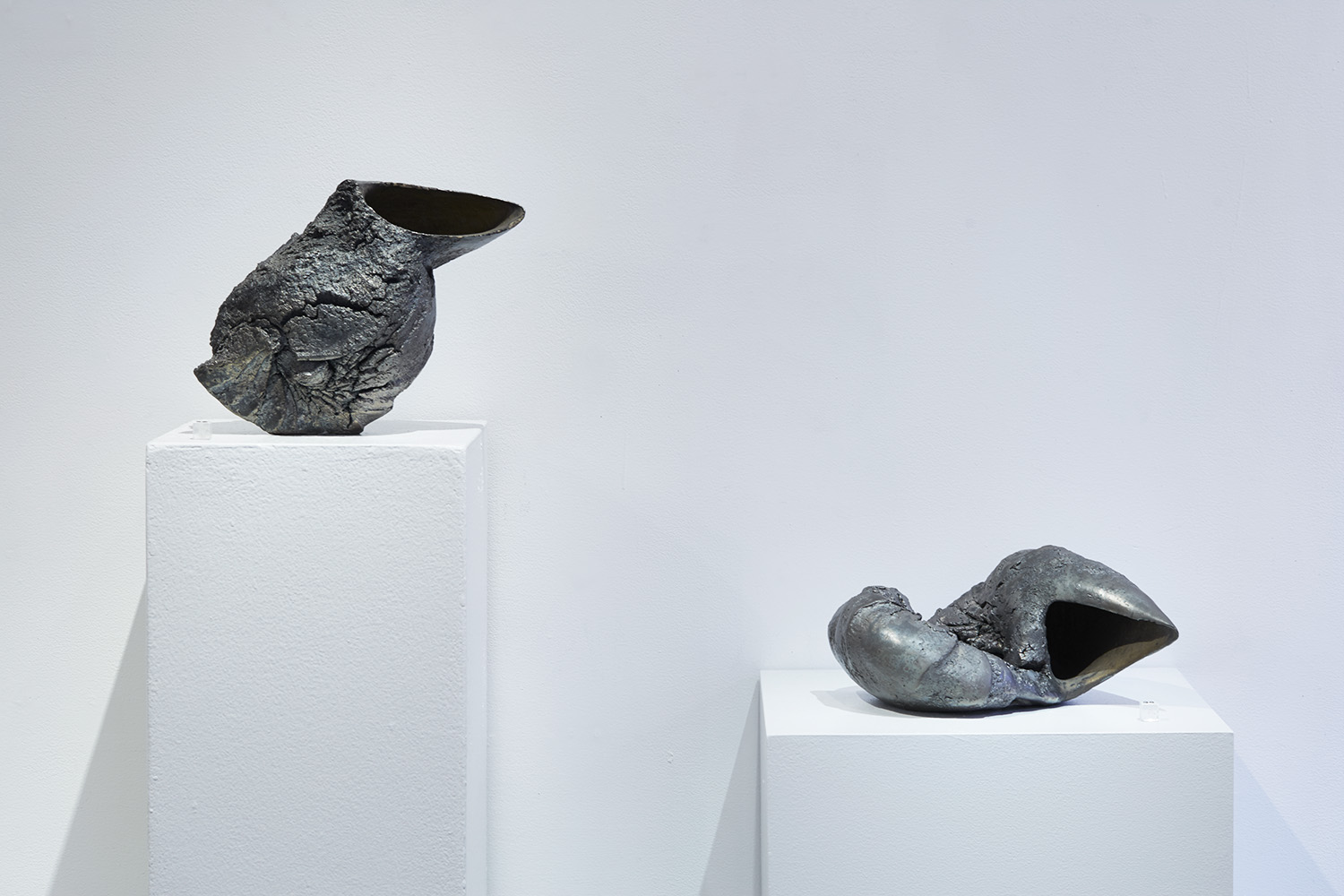


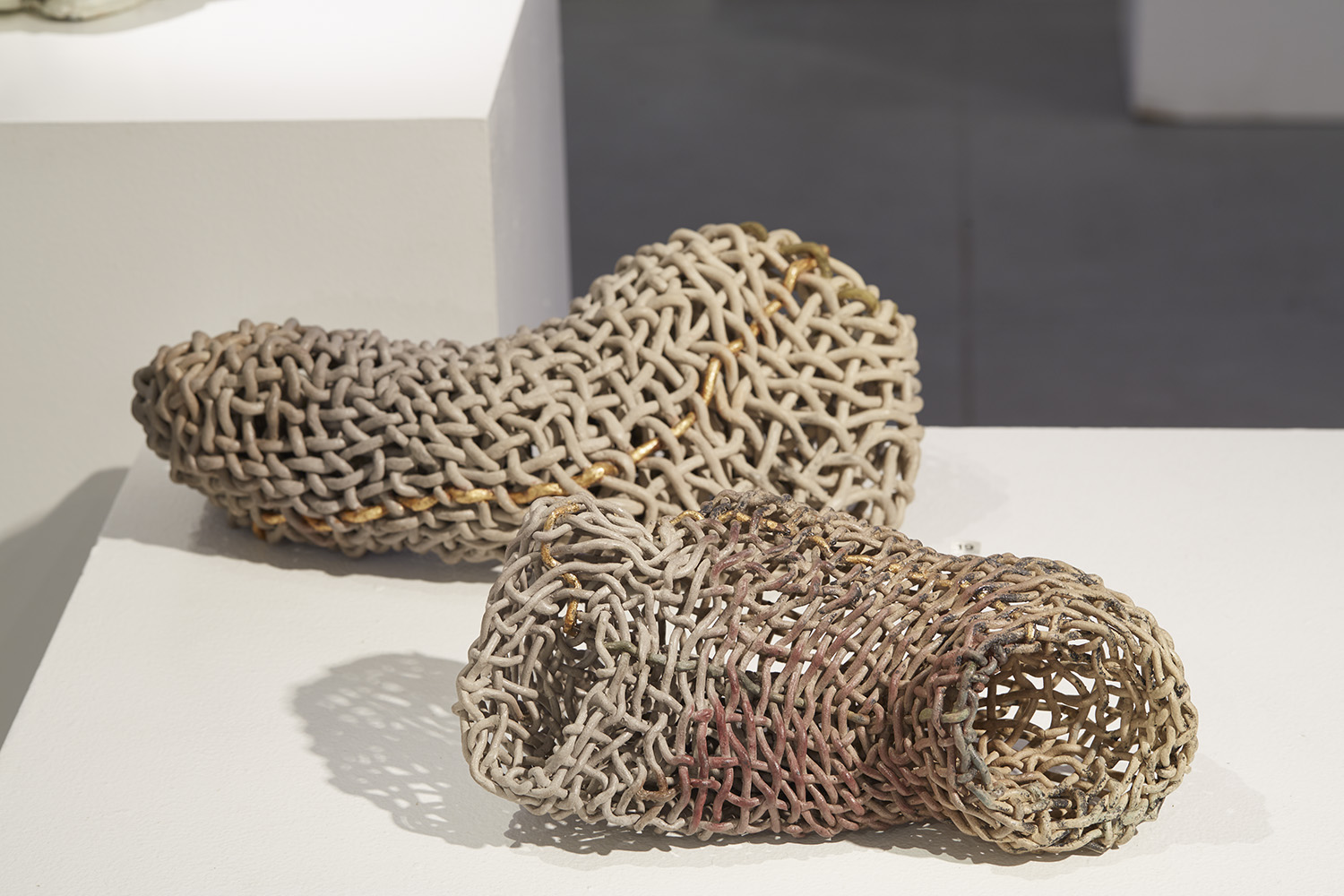


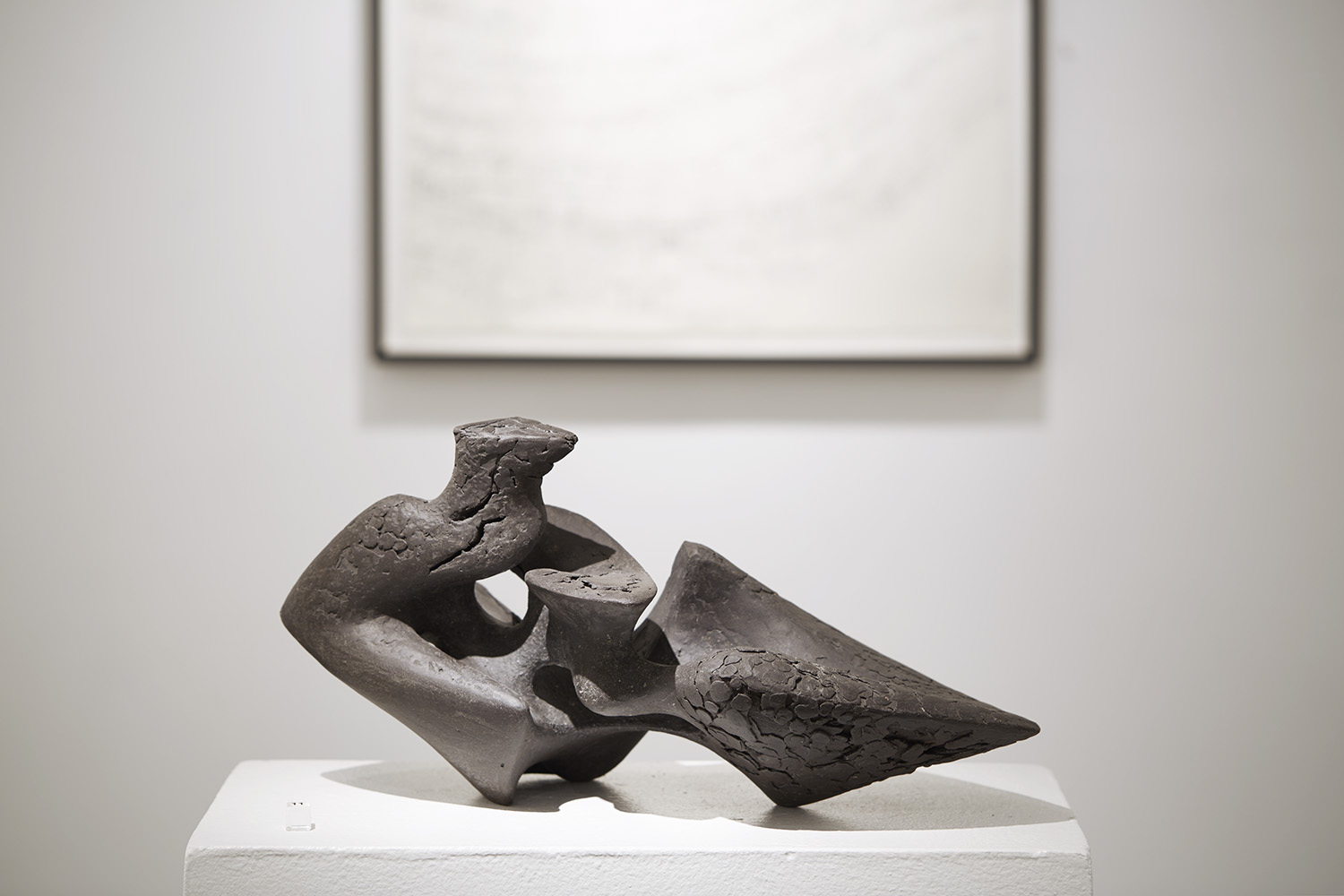
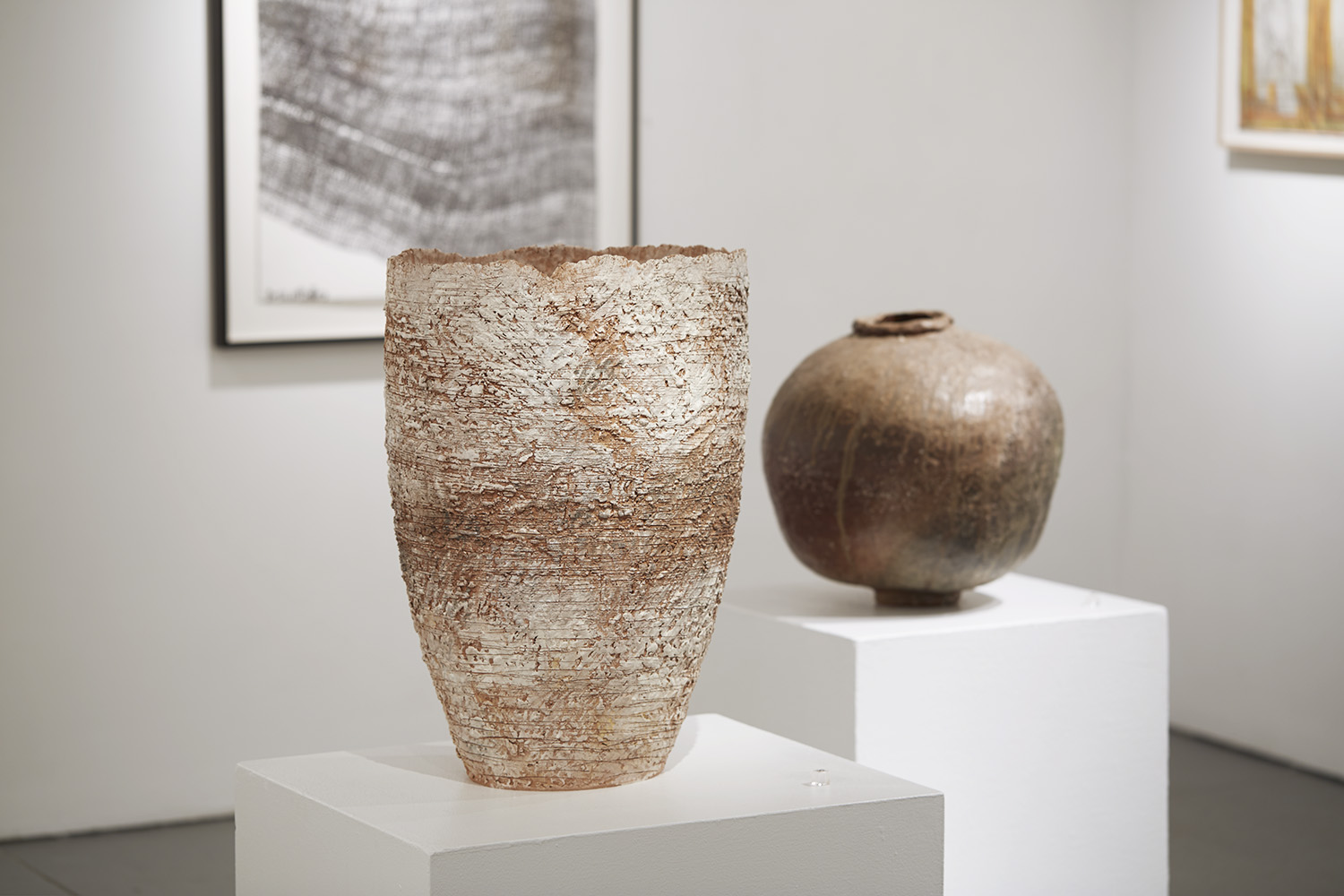
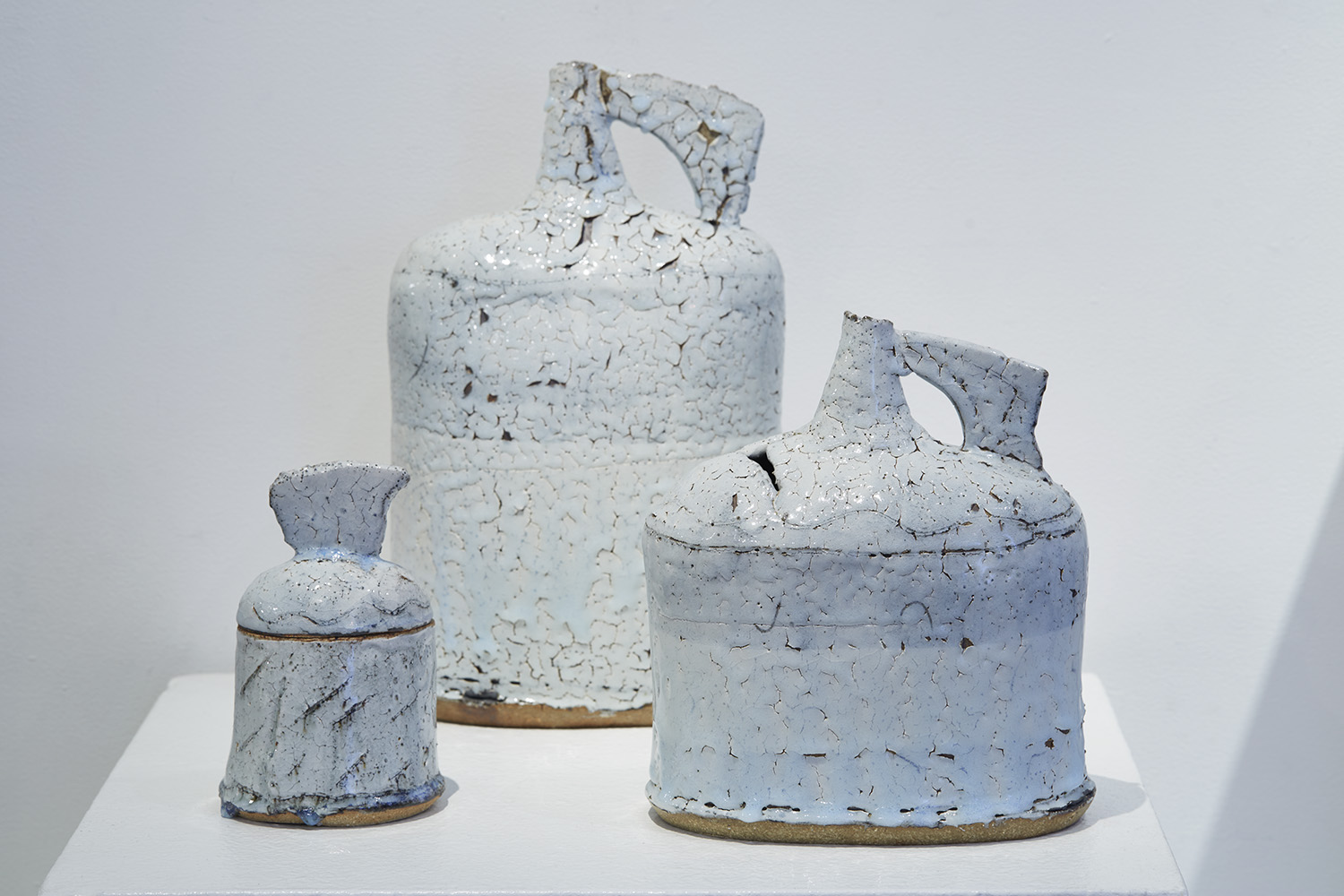

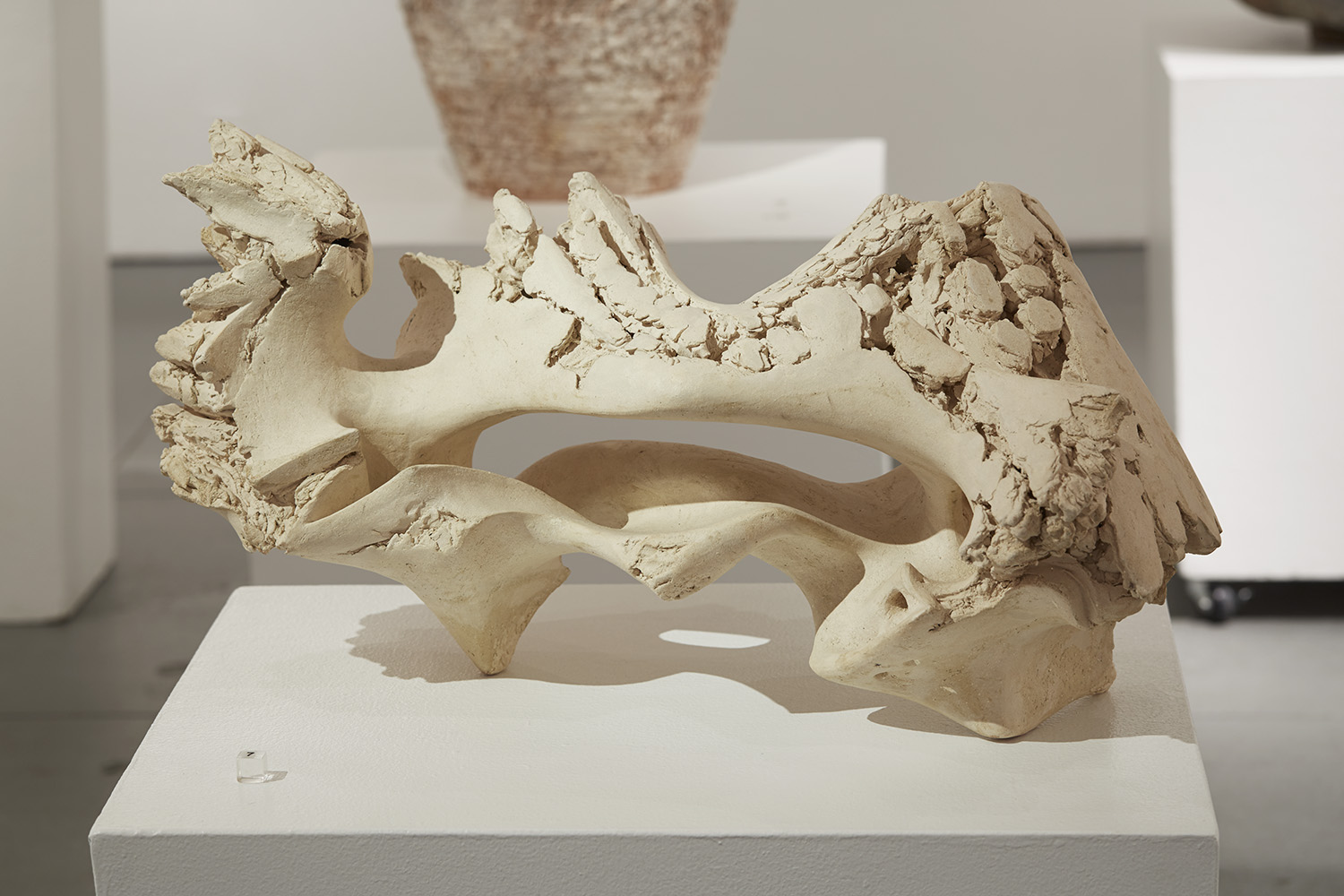
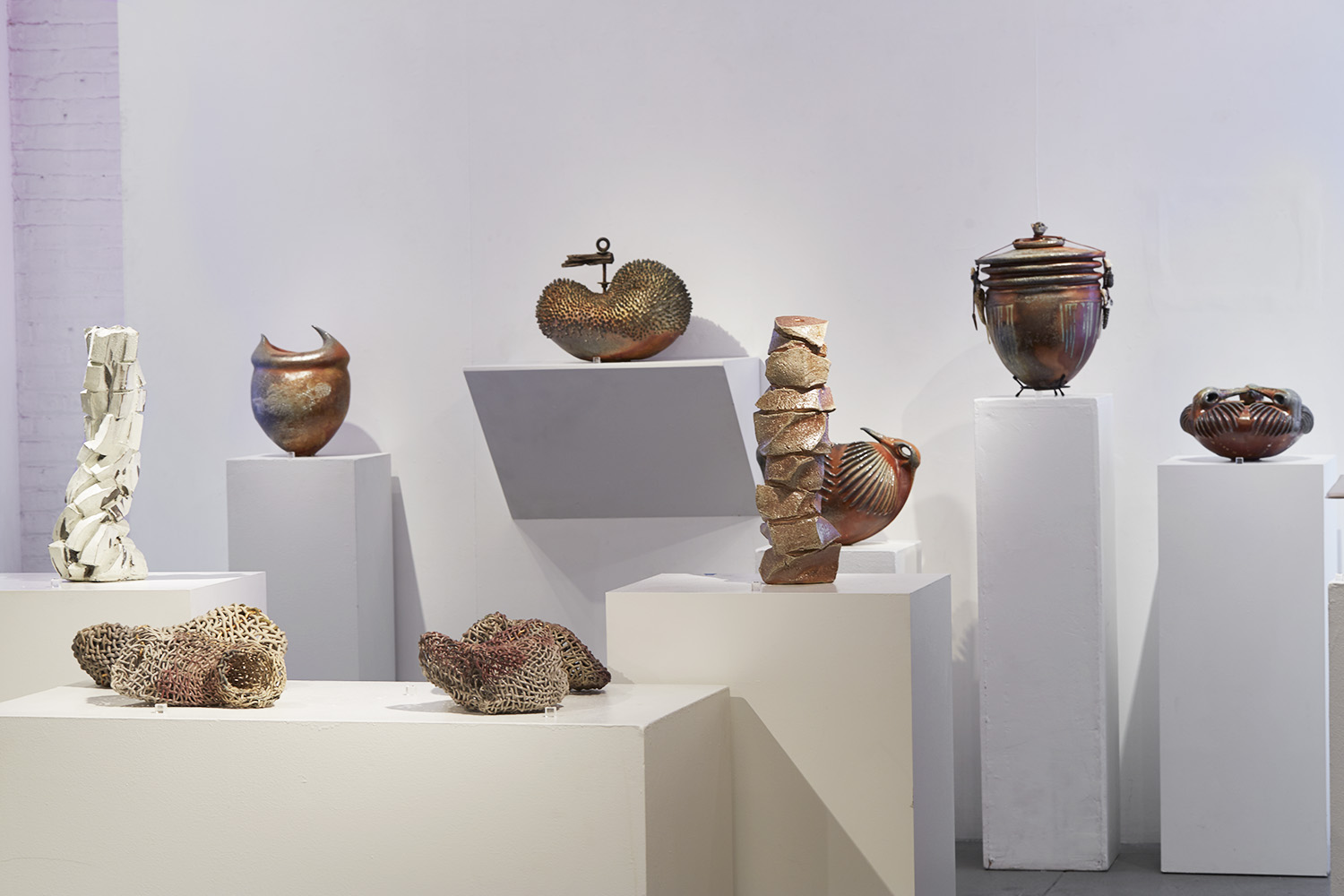





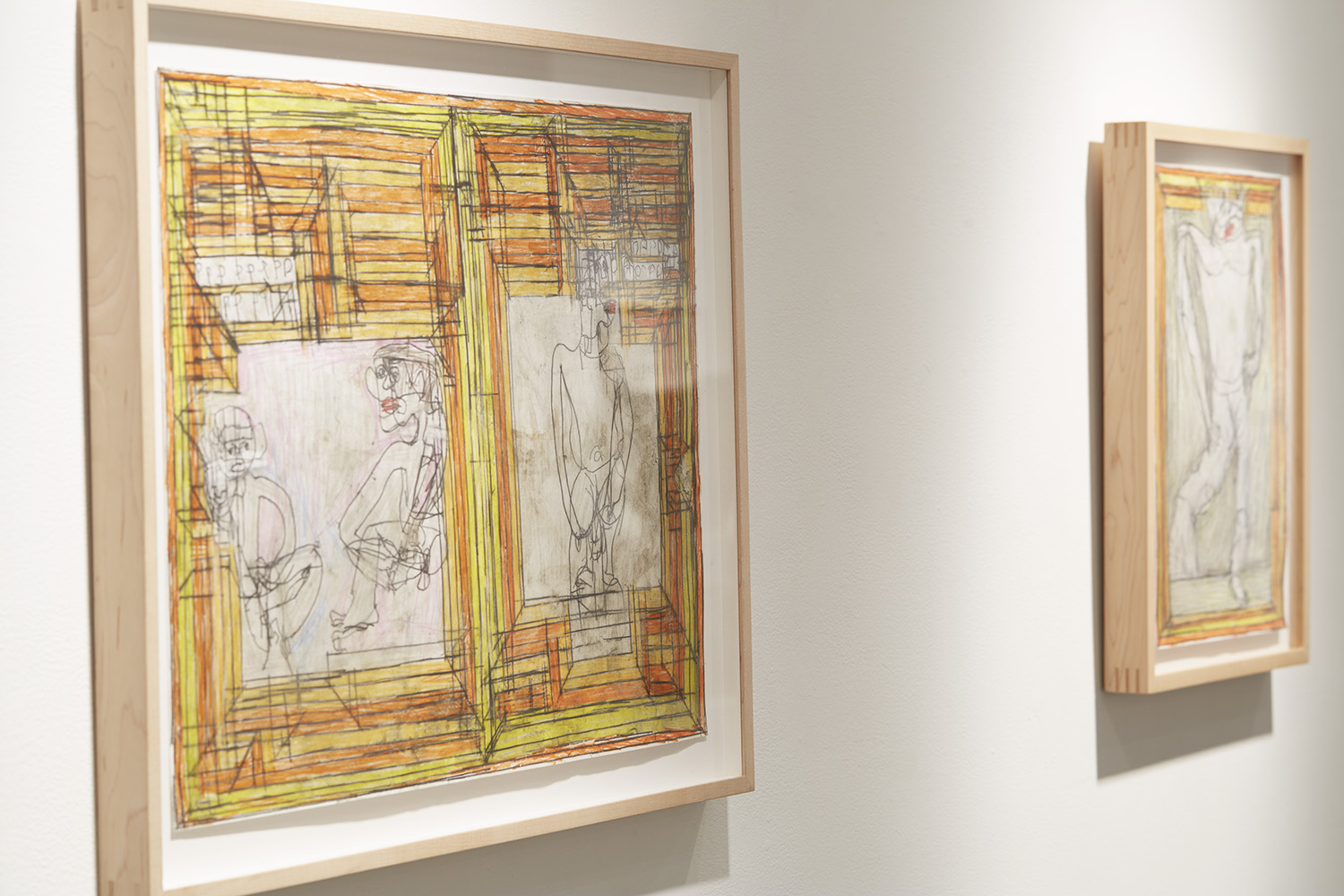

EARTH SKIN
EARTH SKIN
(September 8 - October 8, 2016)
We are pleased to present a ceramic exhibition in two parts called EARTH SKIN.
Clay is a mediation between the artistic impulses of the maker and a sense of Place and inner and outer landscapes. Its tactility once fired satisfies human needs in much the same way a natural landscape vista immerses us not only in a recognition of our place in the universe but also the immediate place we dwell in. Clay as a translator between artist, audience, and spirit. Evocation becomes manifestation.
In the sculptural part of the exhibition is the work of Melanie Ferguson, Rafa Perez, Phyllis K. Sullivan, Tim Rowan, Mike Weber, Mitch Iburg, Youngbin Lim, Eddie Curtis, Margaret Curtis, Tadashi Ito, Simcha Even-Chen, Rebecca Buck, Sarah Purvey, Shozo Michikawa, and Jane Wheeler.
The second part of the exhibition will be in our presentation room and will feature 25 chawan (tea bowls) presented as sculpture. Artists represented will be: Peter Callas, Eddie Curtis, Margaret Curtis, Robert Fornell, Lisa Hammond, Shigemasa Higashida, Mitch Iburg, Osamu Inayoshi, Aki Katayama, Ryoji Koie, Touri Maruyama, Hideo Matsumoto, Shozo Michikawa, Richard Milgrim, Akihiro Nikaido, Toshio Ohi, Takao Okazaki, Akira Satake, Steve Sauer, Jeff Shapiro, Wasaburo Takahashi, Takashi Tanaka, Yoh Tanimoto, Kai Tsujimura, Shiro Tsujimura, and Mike Weber.
The ceramists in this two-part exhibition are poets in their medium. They act as translators in the spaces they conjure and occupy with a sensual grace. Skin responds to the hand. It is that intimate. This work is part of that response.
THE ELOQUENT PLACE
THE ELOQUENT PLACE:
NEW WORKS BY JOSEF HOFER & HARALD STOFFERS
September 8 – October 8, 2016
An underlying theme of much Art Brut is the artist's location of self in an often strange or hostile universe. The artist often has an unspoken utilitarian intention for the work, namely the cataloguing of self and immediate environment in order to organize and ensure a rhythm of security in one's world.
Joseph Hofer (b. 1945 Austria) and Harald Stoffers (b. 1961 Germany) are two such artists. Each literally takes the 'sounds of silence' and fleshes them out into descriptions of self-containment (as opposed to confinement). The process of making art to heal oneself often has a transcendent effect as well. Joseph Hofer is deaf and physically handicapped to the point where his mobility is seriously limited. But one day in a shop he found a large mirror and this acquisition completely changed his worldview. With the use of this mirror by his bed he began drawing self-portraits both clothed and nude contained within a drawn frame much like the one around the mirror. Hofer's figures; the self-portraits, and the female nudes inspired by an Egon Schiele book he saw in the facility where he lives, are secure and confident, rather than trapped by their elaborate frames. The emptiness is eliminated, the physicality is immediate, intense, and self-contained.
Harald Stoffers drawings are, conceptually at least, not that different in intention from what Hofer presents, though with a completely different style and process. His epistles in artful cursives are letters to his mother in which he carefully lists the clothing he is wearing on that day and a list of the activities he will be pursuing. He inventories his life to give it a cohesive and meaningful shape. In doing so he creates a miraculous visual from a mundane life. But though the letters are carefully shaped the rhythm of placement is abstracted, asymmetrical and meandering suggesting a possible turbulence under the grace.
Both artists seek to establish a sense of internal and external Place by creating worlds that unfold within and around their own bodies. The act of drawing is a method of controlling survival; in Hofer's case figuratively, and in Stoffer's case by emotionally charging the written words with visual intensity. For both the art becomes a conduit toward a way of balance and self-placement in the world.
Exhibition Opening Reception - 6-8pm, Thursday, September 8th
Josef Hofer, Untitled, 2016, Pencil, colored pencil on paper, 11.75 x 16.5 inches, 29.8 x 41.9 cm, JHo 61
Harald Stoffers, Brief 192, August 12th, 2011, Ink on paper, 19.75 x 19.75 inches, 50.2 x 50.2 cm, HaS 21
Check out this ArtNews article about the Cavin-Morris collection
Check out this great article about Jon Serl!
Check out this great article about Solange Knopf
Check out this interview with Kevin Sampson
Check out this Huffington Post article about outsider art and Kevin Sampson
RWA currently featuring artists from Cavin-Morris
Jamaican Pulse: Art and Politics from Jamaica and the Diaspora
(25 Jun 16 - 11 Sep 16)
The RWA presents a landmark exhibition of Jamaican visual art - the first major exhibition of its kind ever to be held in the UK, co-curated on behalf of the RWA by Kat Anderson and Graeme Mortimer Evelyn.
At a time when Jamaican art is receiving growing international acclaim, Jamaican Pulse showcases the extraordinary diversity of Jamaican art, presenting contemporary artwork alongside key works from Jamaican art history.
While exploring the roots of modern Jamaican art and suggesting new links between past and present, the exhibition also explores the artwork through a political lens and considers how global attitudes to body, gender, religion, class and sexuality have impacted this small island nation. By creating a conversation between the Jamaican Diaspora population across the UK and internationally, Jamaican Pulse looks back at early artistic and political awakening, whilst also creating a platform for contemporary artists.
Many of the contemporary artists in the exhibition also featured in the recent, critically- acclaimed Jamaica Biennale. Their work spans multiple disciplines including painting, sculpture, photography, textiles and moving image, and will be supported by twentieth century artwork from a number of public and private collections, including the Jamaican High Commission, London, and The National Gallery of Jamaica, Kingston.
Jamaican Pulse will be accompanied by an exciting learning and participation programme, with activities taking place on and off-site, including a satellite programme at The Bluecoat, Liverpool.
Jamaican Pulse is delivered in partnership with the Jamaican High Commission and is supported by Arts Council England and the Art Fund. It is co-curated by Kat Anderson and Graeme Mortimer Evelyn on behalf of the RWA.
Royal West of England Academy, Queens Road, Bristol BS8 1PX
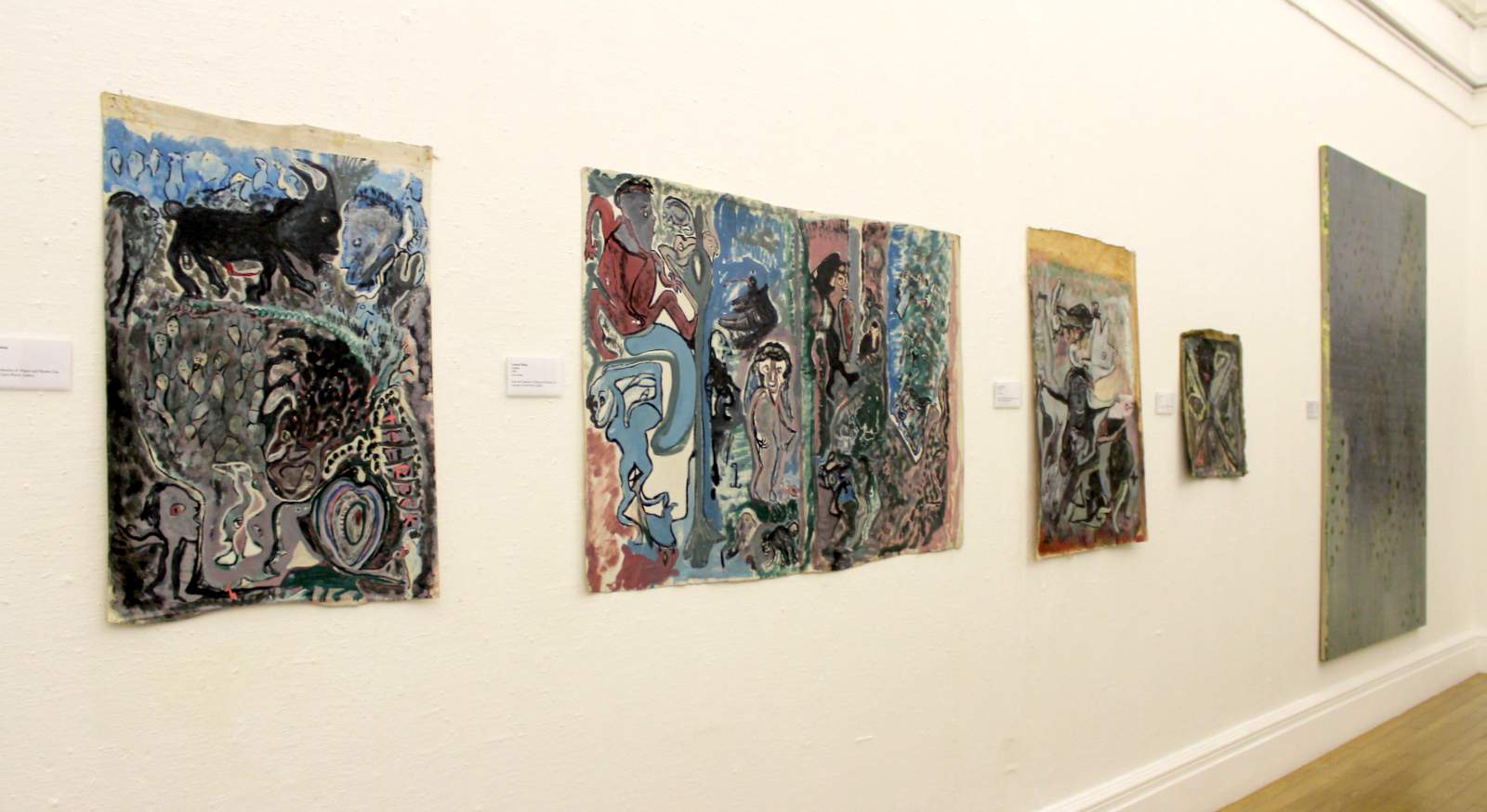
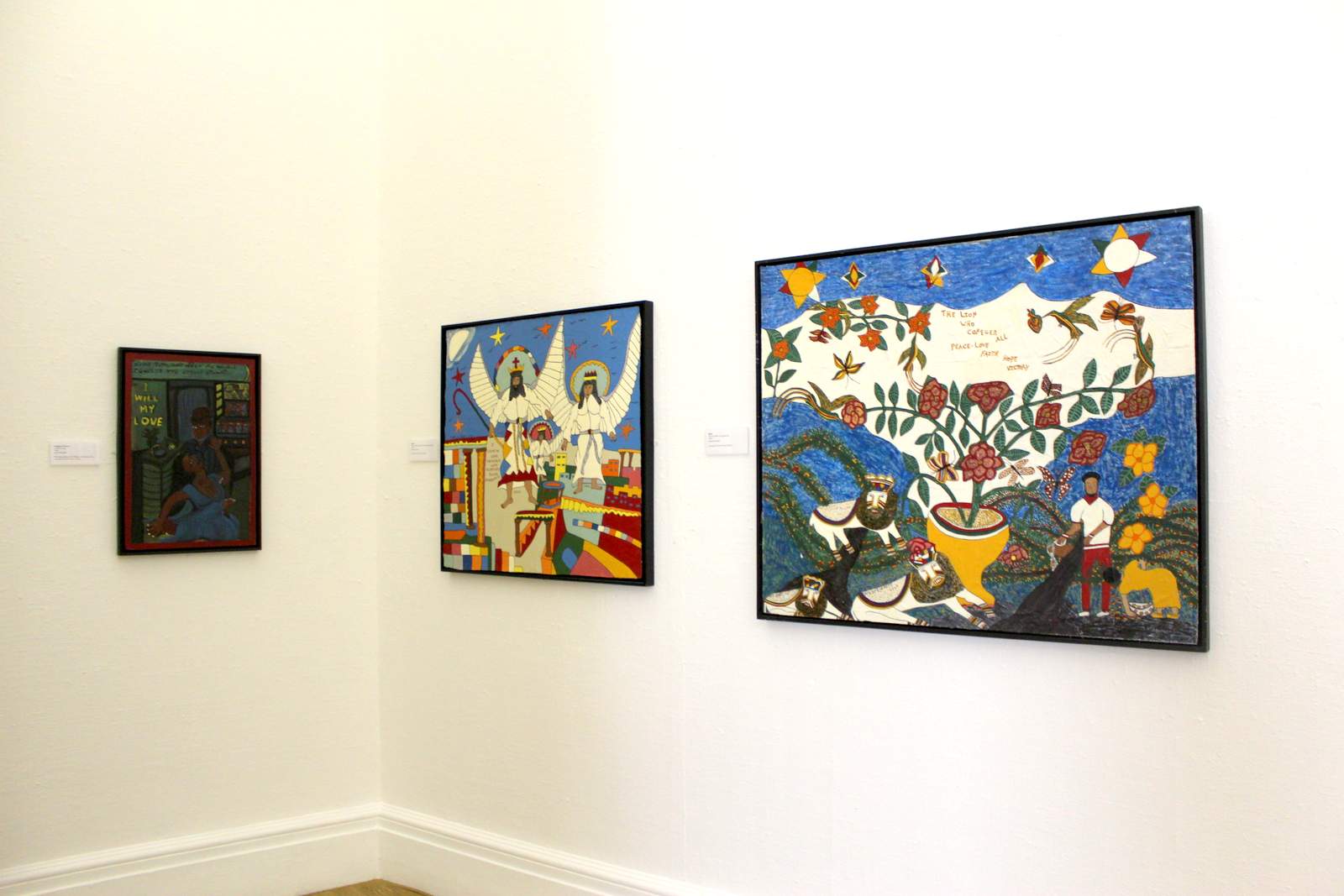
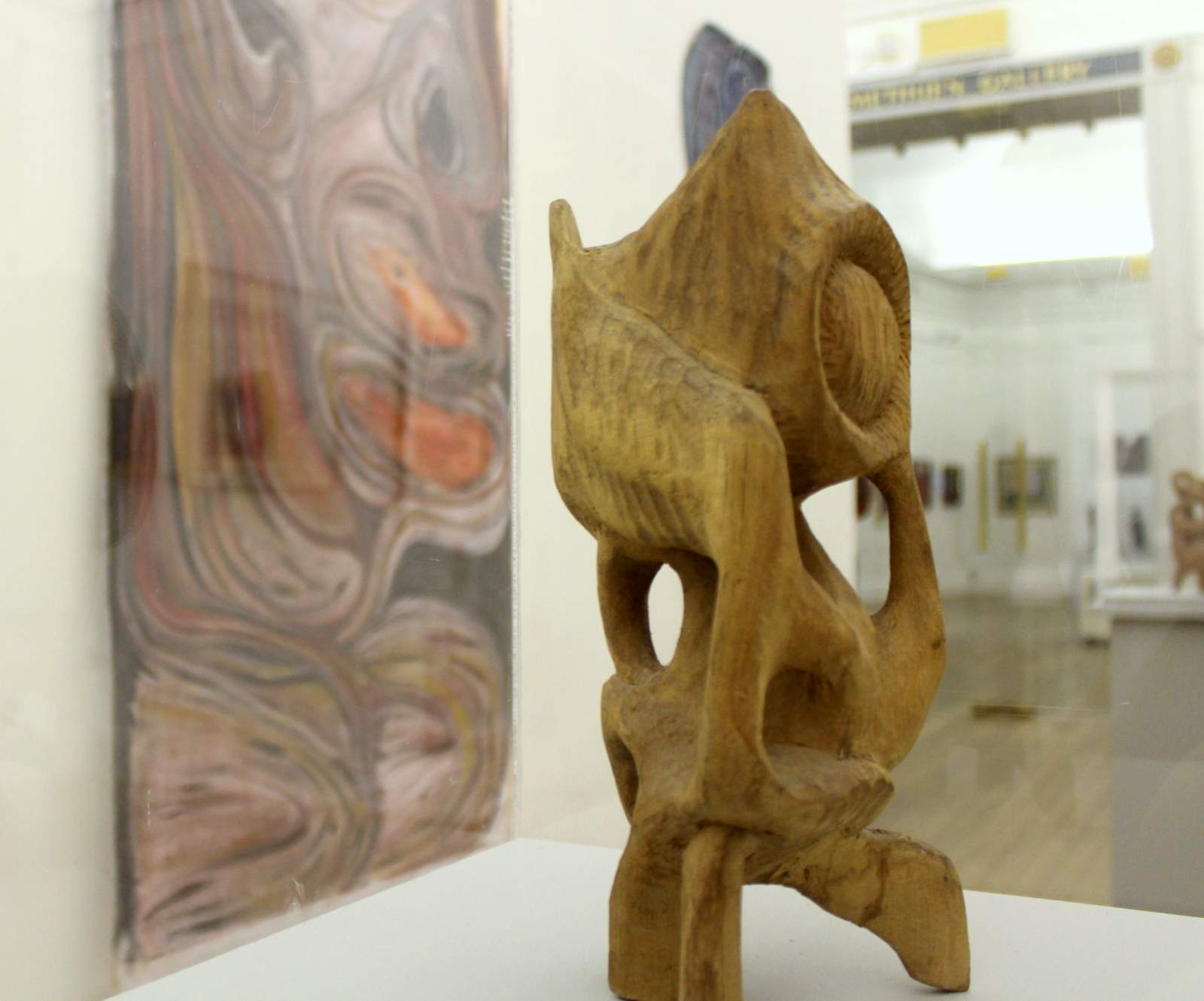

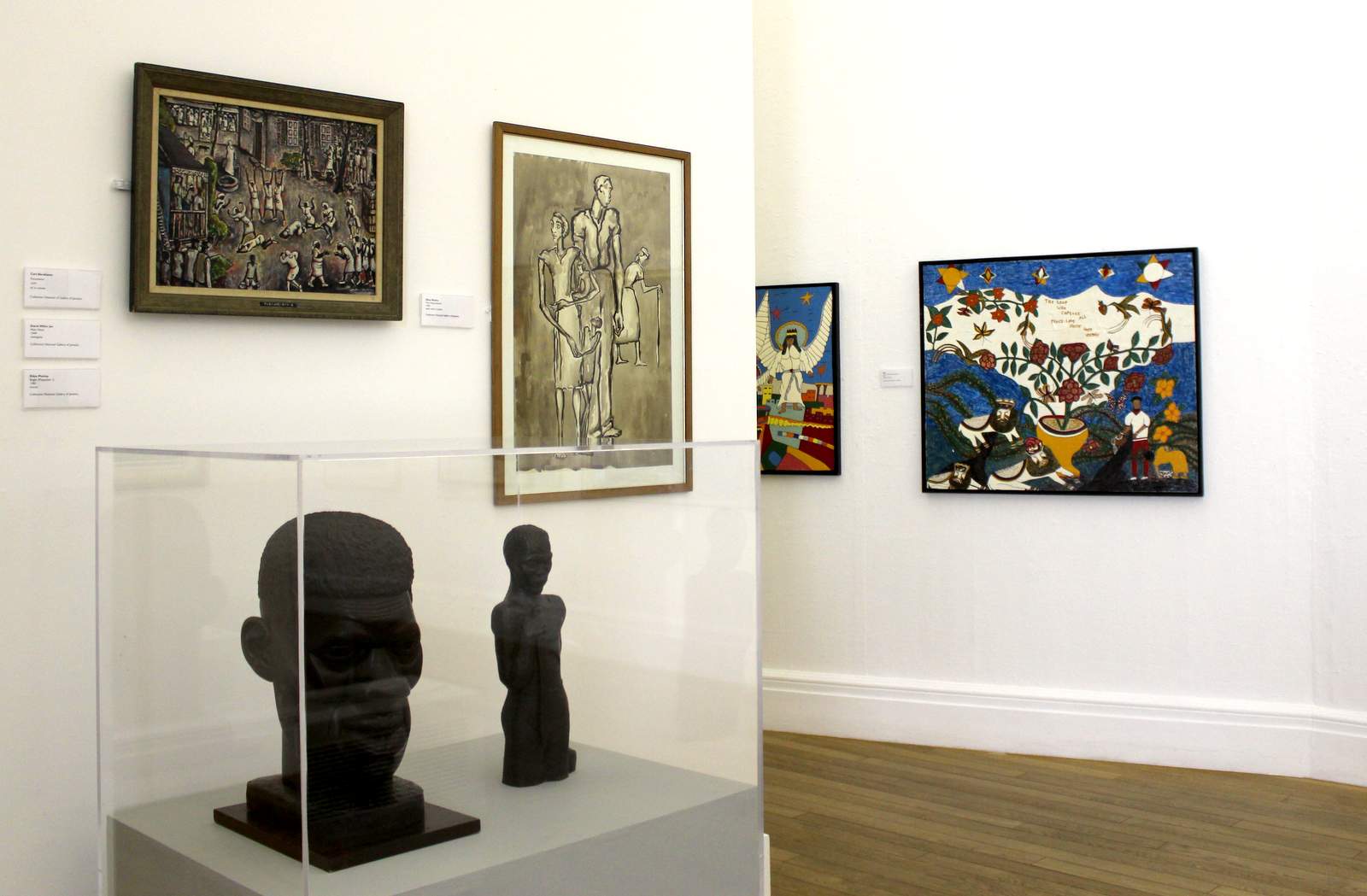

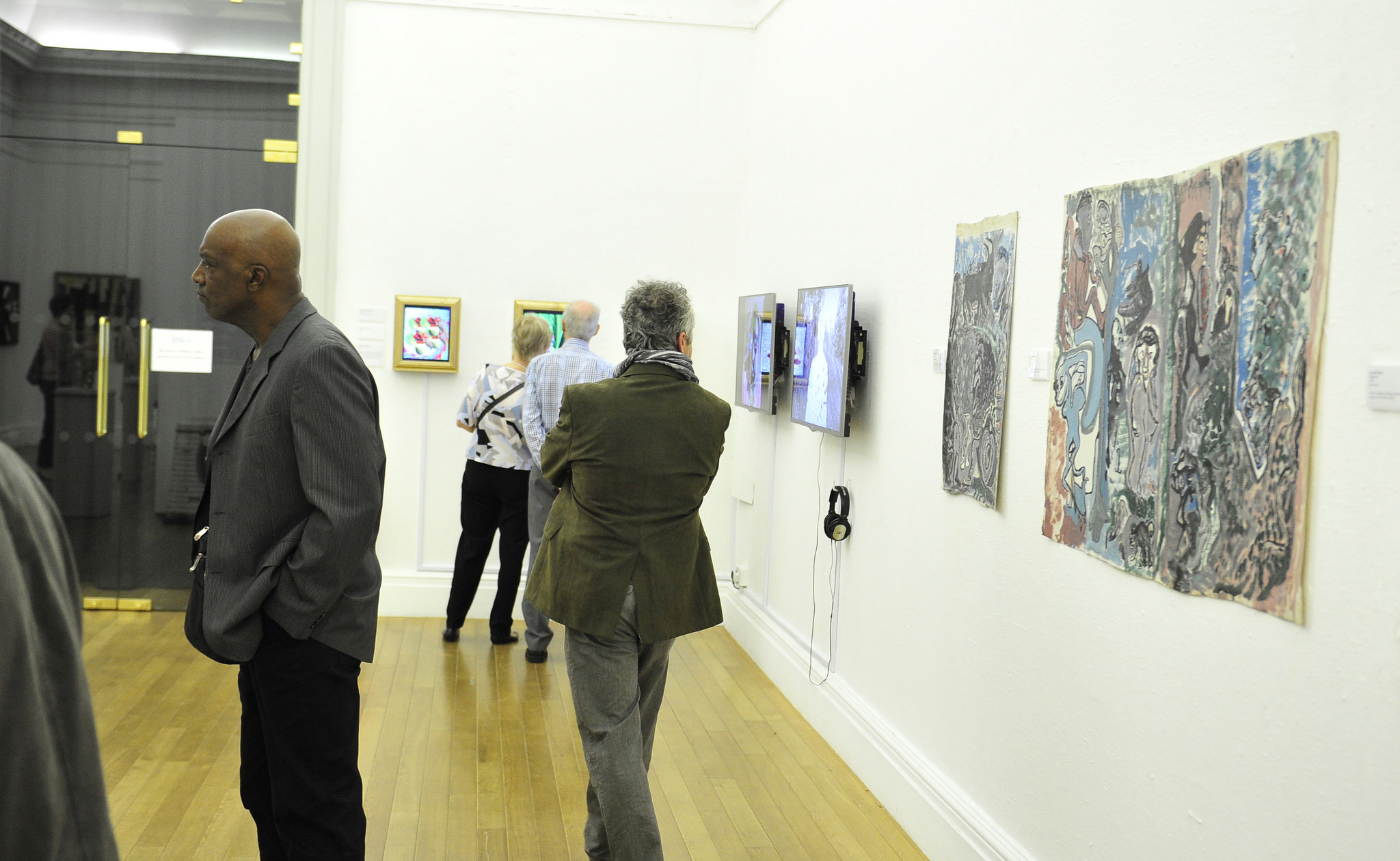
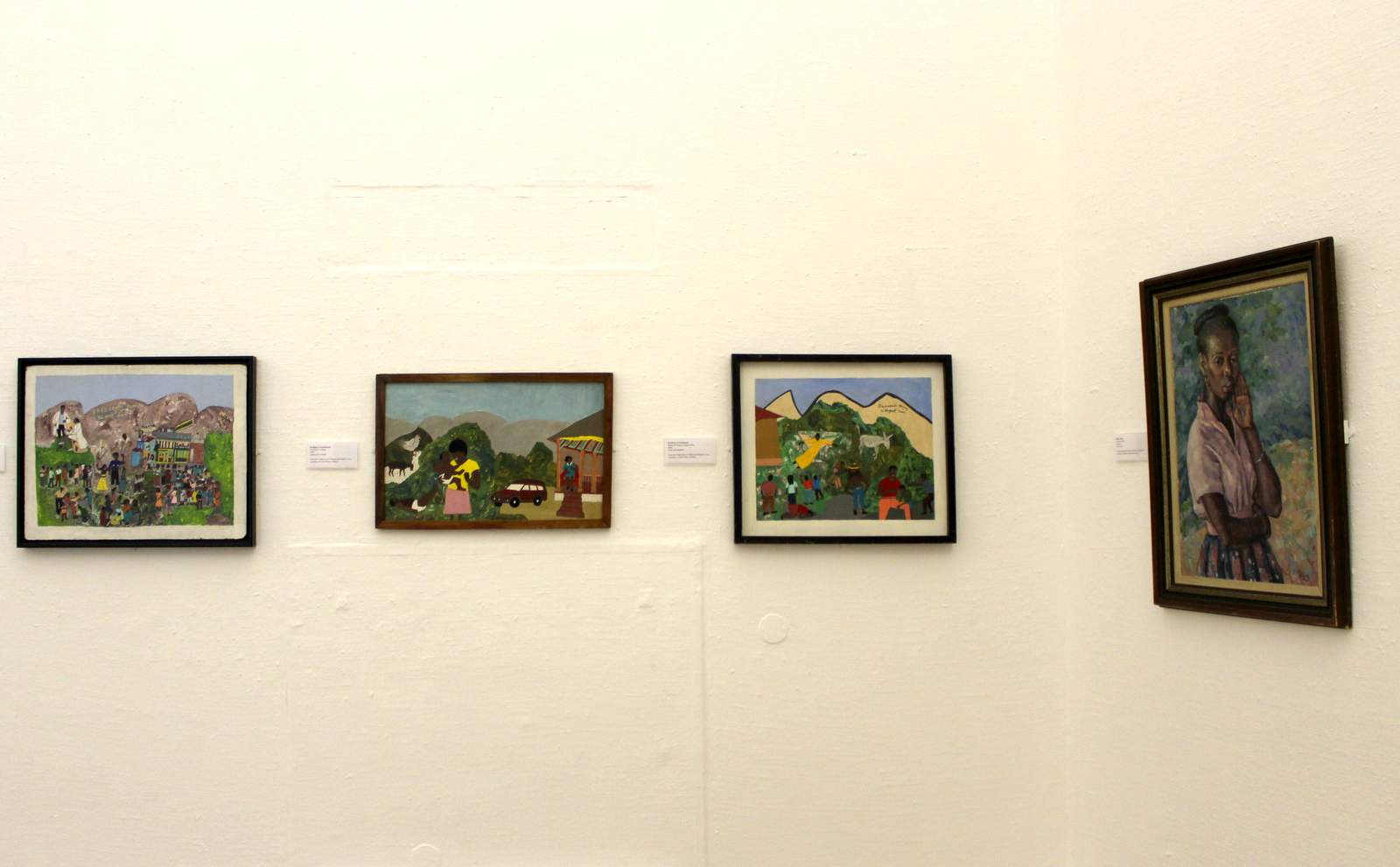
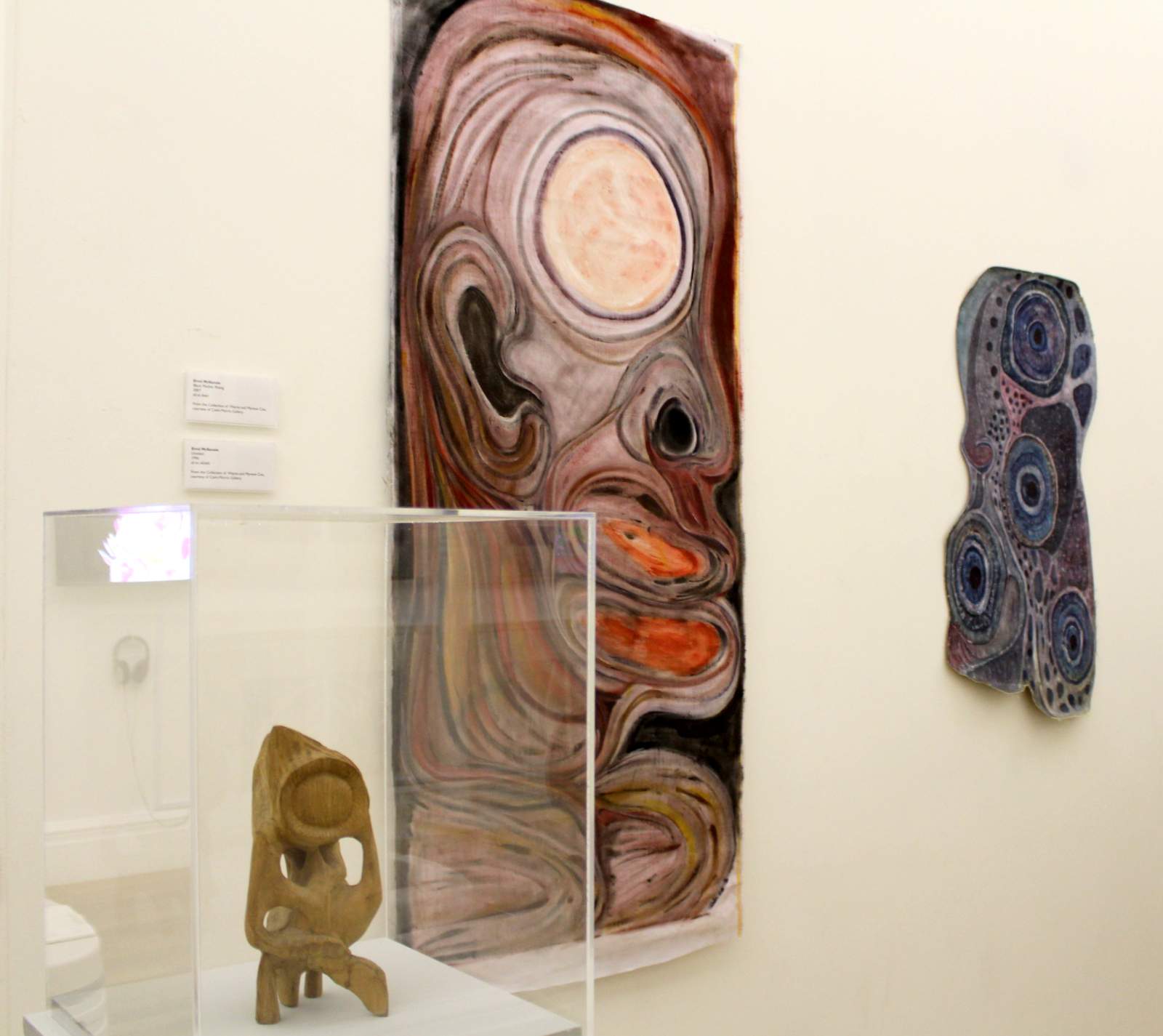
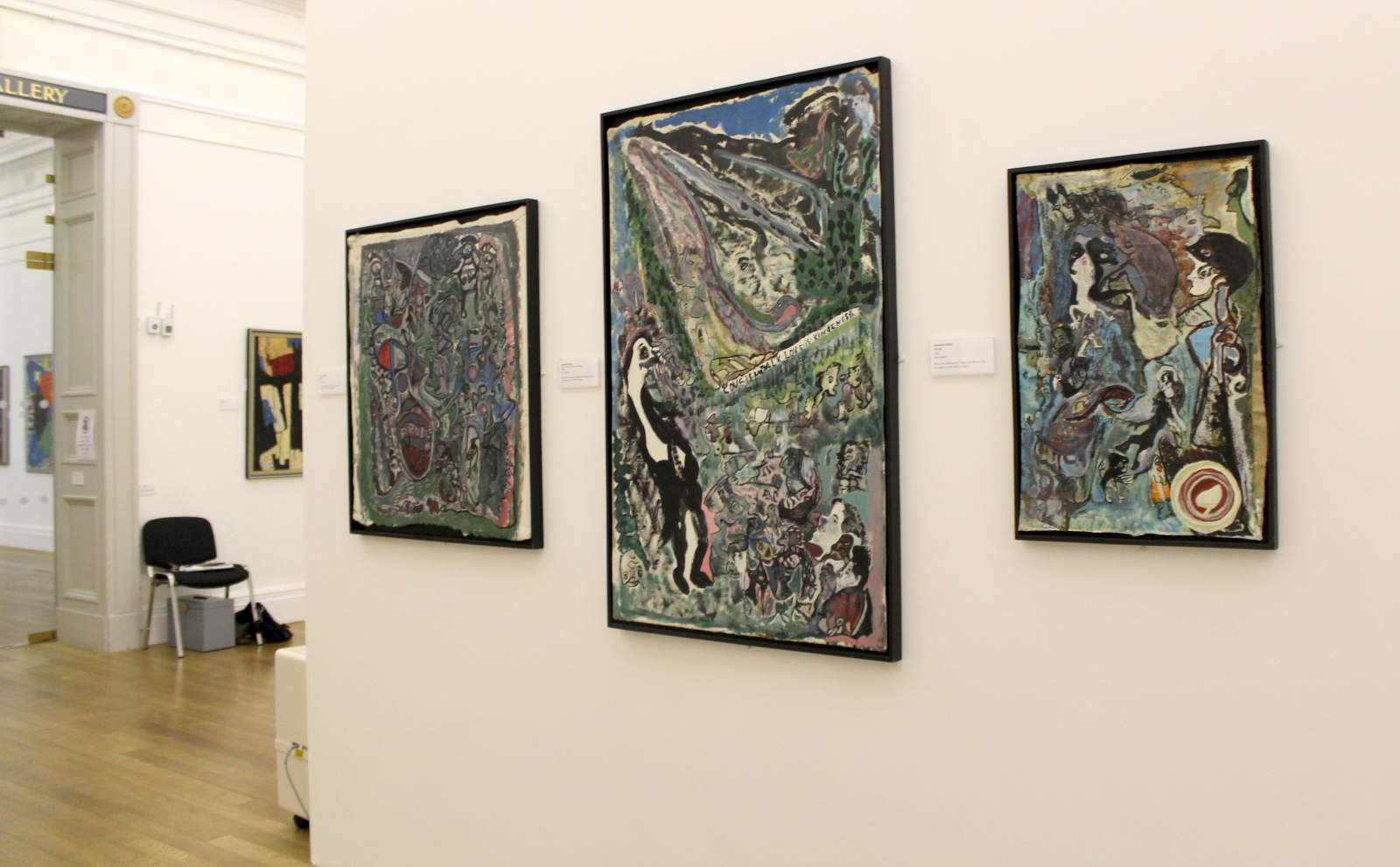
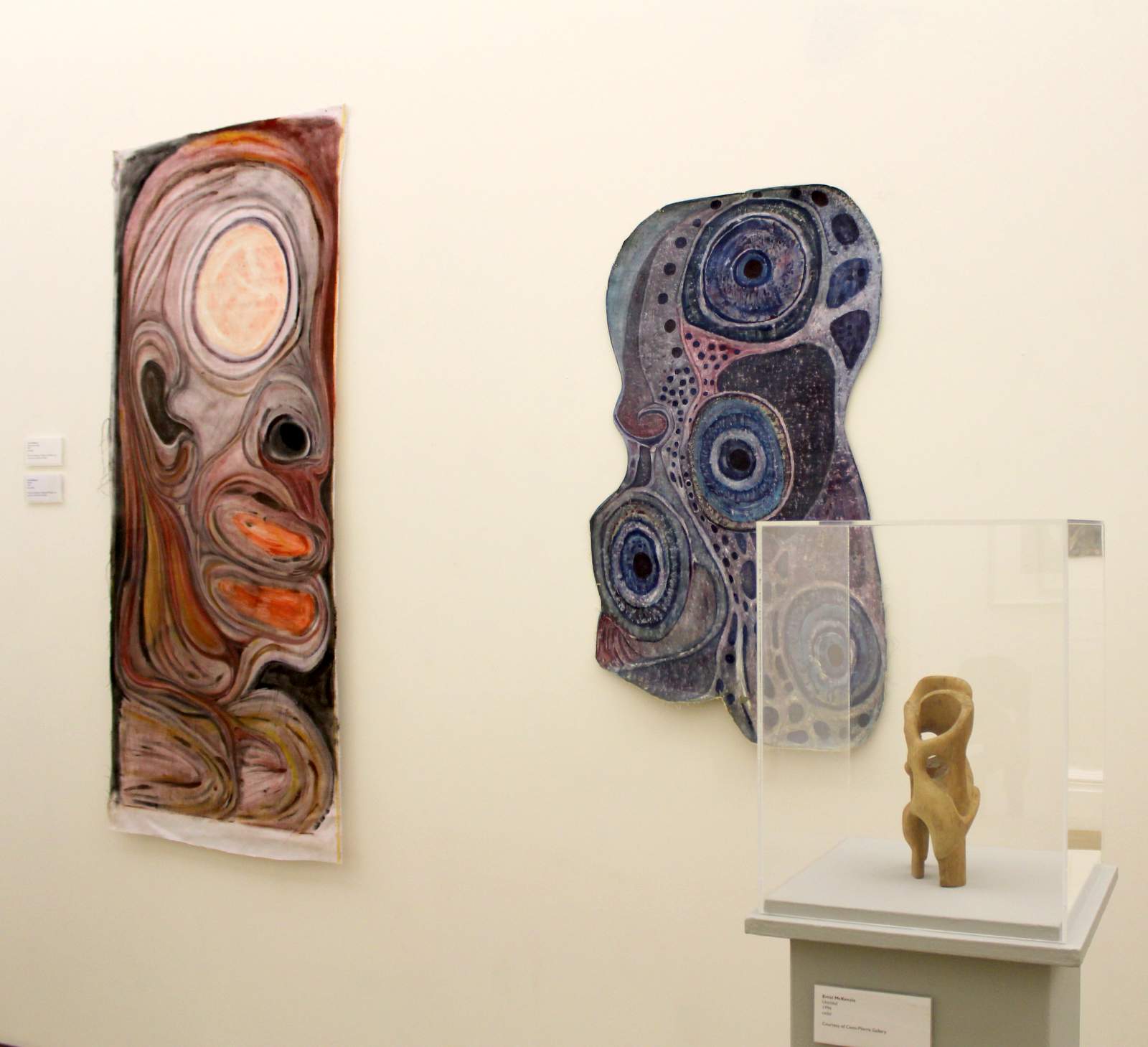
"Outsider Art Fair Paris Shakes Things Up With Slew of New Galleries"
Click here to read full article: https://news.artnet.com/market/2016-exhibitor-list-outsider-art-fair-562952
Asafo Flag Catalog available online now
Spotlight (June 30 - August 19, 2016)
Summer Spotlight
CAVIN-MORRIS SUMMER SPOTLIGHT
(JUNE 30 - AUGUST 19, 2016)
Cavin-Morris Gallery is pleased to present the first in a series of bi-annual exhibitions spotlighting some of the artists represented by the gallery. Each artist will be exhibited on his or her own wall or separate section of floor space. This summer we are featuring Jon Serl, Gregory Van Maanen, J.B. Murray, and Joseph Lambert for the walls, and Melanie Ferguson, Rafa Perez, Tony Pedemonte and Tim Rowan on the floor.
These are artists we have been privileged to work with during all phases of the gallery's history. Jon Serl and Gregory Van Maanen are two of the artists we have worked with the longest, and Melanie Ferguson, Joseph Lambert, and Tony Pedemonte are some of the most recent artists to join us.
Jon Serl lived to be one of the oldest self-taught artists in America, working until he was 98 years old. His work is a poetic document of LGBT life in this country between the World Wars. He was a carnival performer and a chuck wagon chef, and started painting in the late 40s. His work is known for the way he reveled in the sheer glory of drawing with paint.
Gregory Van Maanen's visionary work is about the transformation of violent energy into the process of making edgy art about healing and forgiveness without sentimentality. His images are clean and tough and otherworldly. A large number of his early paintings and sculptures can be seen in the permanent collection of John Michael Kohler Arts Center, Sheboygan, WI.
Master artist J.B. Murray was an African-American visionary whose work spoke to the trials and tribulations of his poor community, and to saving the souls of all black people. He wrote in asemic calligraphy—invented writing-- that came through his hands from the Holy Spirit. He considered much of his work to be amuletic in purpose and power.
Joseph Lambert creates topographies of language. His spiraling marks are his attempts to express himself to the world to counteract his inability or reluctance to communicate verbally. They convey a visual expression of synesthesia, a state where different sensory perceptions combine; in this case sound or speech, sight or color and line.
Tony Pedemonte takes the process of wrapping to a personal and viscerally expressive place. His process is different than that of Judith Scott, who worked before Pedemonte at Creative Growth in Oakland. Both have created enigmatic sculptures passionately wrapped in layers of materials. Pedemonte chooses fewer colors of threads to wrap these personally chosen, and frequently hand-assembled objects. In comparison to Scott, his work is more minimal, while still maintaining a totemic quality.
For our ceramics selection we chose three wonderful artists as different from each other in intention and result as could possibly be. There is an almost occult spirituality in the beautifully surfaced sculptures of Melanie Ferguson (Georgia, USA). She captures aspects of place and landscape in the skins of her pieces and yet has imbued them with a sense of lunar and tidal timelessness.
Rafa Perez (Spain) has a seemingly unlimited vocabulary of imagination in his never-repeating variations on solid organic asymmetrical forms. He is a master of his materials and his restlessness has resulted in a body of work that is ongoing and ever-pushing his own envelope.
Tim Rowan (New York, USA) also carries an intense sense of place in his pieces coupled with a hint of Japanese sensibility, which he took away from his apprenticeship with Ryuichi Kakurezaki. Yet, rather than a sense of impermanence, his work carries a graceful earthy sense of monumental permanence, a presence that doesn't disappear even when those monuments are in ruins.
For further information please contact Cavin-Morris Gallery at info@cavinmorris.com, or phone: 212-226-3768.
Cavin-Morris Summer Spotlight
Gregory Van Maanen, Spirit Hand, 1993, Oil, enamel, acrylic on wood, 66 x 48 inches, 167.6 x 121.9 cm, GVM 754
CAVIN-MORRIS SUMMER SPOTLIGHT
(JUNE 30 - AUGUST 19, 2016)
Cavin-Morris Gallery is pleased to present the first in a series of bi-annual exhibitions spotlighting some of the artists represented by the gallery. Each artist will be exhibited on his or her own wall or separate section of floor space. This summer we are featuring Jon Serl, Gregory Van Maanen, J.B. Murray, and Joseph Lambert for the walls, and Melanie Ferguson, Rafa Perez, Tony Pedemonte and Tim Rowan on the floor.
These are artists we have been privileged to work with during all phases of the gallery's history. Jon Serl and Gregory Van Maanen are two of the artists we have worked with the longest, and Melanie Ferguson, Joseph Lambert, and Tony Pedemonte are some of the most recent artists to join us.
Jon Serl lived to be one of the oldest self-taught artists in America, working until he was 98 years old. His work is a poetic document of LGBT life in this country between the World Wars. He was a carnival performer and a chuck wagon chef, and started painting in the late 40s. His work is known for the way he reveled in the sheer glory of drawing with paint.
Gregory Van Maanen's visionary work is about the transformation of violent energy into the process of making edgy art about healing and forgiveness without sentimentality. His images are clean and tough and otherworldly. A large number of his early paintings and sculptures can be seen in the permanent collection of John Michael Kohler Arts Center, Sheboygan, WI.
Master artist J.B. Murray was an African-American visionary whose work spoke to the trials and tribulations of his poor community, and to saving the souls of all black people. He wrote in asemic calligraphy—invented writing-- that came through his hands from the Holy Spirit. He considered much of his work to be amuletic in purpose and power.
Joseph Lambert creates topographies of language. His spiraling marks are his attempts to express himself to the world to counteract his inability or reluctance to communicate verbally. They convey a visual expression of synesthesia, a state where different sensory perceptions combine; in this case sound or speech, sight or color and line.
Tony Pedemonte takes the process of wrapping to a personal and viscerally expressive place. His process is different than that of Judith Scott, who worked before Pedemonte at Creative Growth in San Francisco. Both have created enigmatic sculptures passionately wrapped in layers of materials. Pedemonte chooses fewer colors of threads to wrap these personally chosen, and frequently hand-assembled objects. In comparison to Scott, his work is more minimal, while still maintaining a totemic quality.
For our ceramics selection we chose three wonderful artists as different from each other in intention and result as could possibly be. There is an almost occult spirituality in the beautifully surfaced sculptures of Melanie Ferguson (Georgia, USA). She captures aspects of place and landscape in the skins of her pieces and yet has imbued them with a sense of lunar and tidal timelessness.
Rafa Perez (Spain) has a seemingly unlimited vocabulary of imagination in his never-repeating variations on solid organic asymmetrical forms. He is a master of his materials and his restlessness has resulted in a body of work that is ongoing and ever-pushing his own envelope.
Tim Rowan (New York, USA) also carries an intense sense of place in his pieces coupled with a hint of Japanese sensibility, which he took away from his apprenticeship with Ryuichi Kakurezaki. Yet, rather than a sense of impermanence, his work carries a graceful earthy sense of monumental permanence, a presence that doesn't disappear even when those monuments are in ruins.
For further information please contact Cavin-Morris Gallery at info@cavinmorris.com, or phone: 212-226-3768.
Secular Mystic: M’onma Returns to New York
Read full article here: http://brutforce.com/secular-mystic-monma-returns-new-york/
